Archived Blog Posts
Common Signs of Mold Growth
6/7/2022 (Permalink)
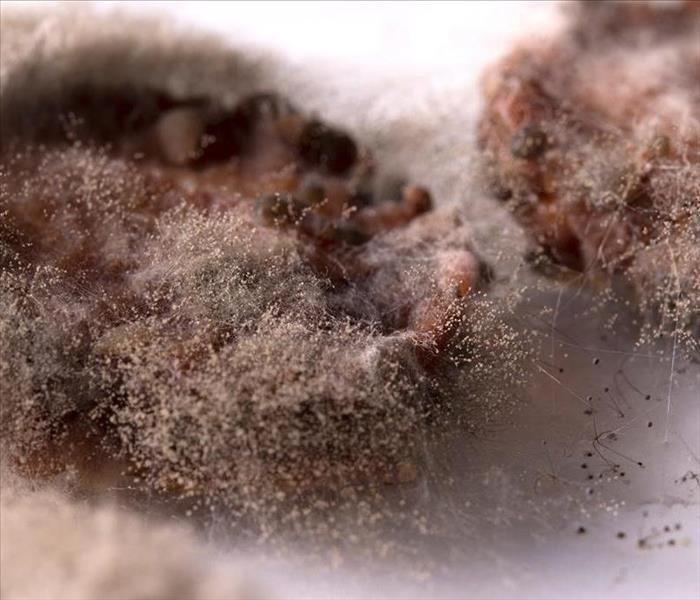 SERVPRO of Troup-Coweta is ready 24/7 to help you fight mold in your home or business.
SERVPRO of Troup-Coweta is ready 24/7 to help you fight mold in your home or business.
Dealing with mold growth is something that no home or business owner wants to deal with, but unfortunately, mold can be a persistent thing. Mold spores are always present in the air so there is the threat of them finding a nice spot to land. Thankfully, mold can only grow and expand in conditions that are favorable to its needs.
One of the conditions that mold likes best is areas that are dark without a lot of airflow—and because mold spores are airborne, they can quickly find places that fit the bill. This means that mold often grows in areas that are not readily apparent or accessible, meaning it is important to be aware of the signs of mold growth so you know what to look for.
The Common Indicators That a Building Could Have Mold Growth
Persistent, Dank Odors
One of the most evident (and frustrating) signs of mold is the persistent odor it produces.
Because mold’s main function in nature is to help organic matter decay, the smell it produces is dank and pungent. If you notice a persistent smell in an area that does not go away or worsens with time, it may be an indicator that mold is present somewhere in the area.
Water Damage That Was Improperly Treated
Mold loves areas that are moisture-heavy, which means water damage can often turn into a
mold problem if it is not treated properly. Water damage can soak into drywall, carpet pads and other hidden areas, and if it is not fully and properly addressed, it can lead to hidden mold growth in these unseen areas throughout the home.
Black Spots on Clothing or Fabrics
Mold can often make its home on fabrics, so if you begin noticing that clothes in your closet or upholstery on your furniture begins to attract spots of mold, that might be an indicator that there is a bigger issue elsewhere in the building. Because mold is airborne, it can travel from the main area it has set up for itself and attach to other objects as it tries to spread.
If you have questions about mold or are in need of mold remediation, we are here to help. Get in touch today to learn more about our services!
Fire Safety Tips for the Whole Family
6/7/2022 (Permalink)
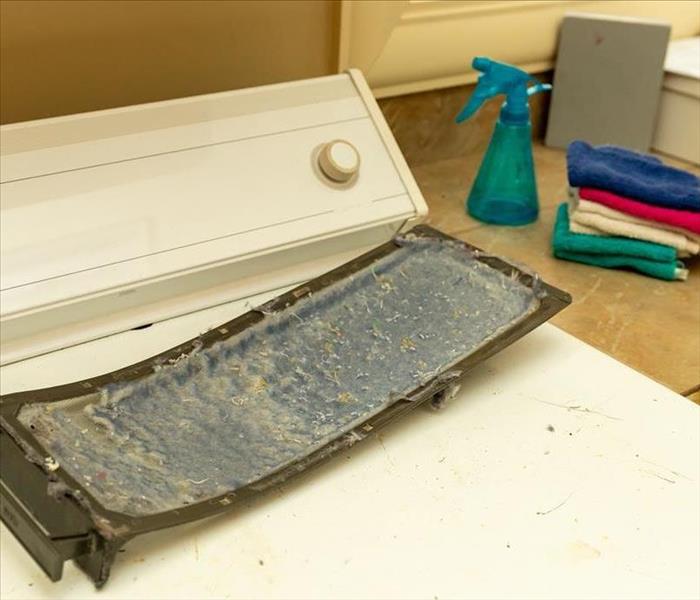 SERVPRO of Troup-Coweta is ready anytime to help with fire damage.
SERVPRO of Troup-Coweta is ready anytime to help with fire damage.
Fire safety is such an important thing for any household. House fires can be dangerous and traumatic, causing significant household damage and putting anyone in the vicinity directly in
harm’s way. Fortunately, fire safety is also a goal that the entire family can get involved with, keeping everyone more invested in safety and more prepared, just in case.
Many fire safety tips are things the entire family can participate in, which makes it a great family activity. Depending on who is in your household, it may be necessary to adjust some of these tips accordingly—for example, toddlers may have a great time drawing escape plans, while older kids may be more suited to smoke detector test duty.
However, we hope these general guidelines are helpful in getting everyone on the same page
for your home’s fire safety.
Fire Safety Tasks for Young Children
**Drawing an escape route.** Escaping quickly is key when it comes to a house fire, so an escape plan is a must. Young children can often be helpful here, drawing lines from each room
to indicate every exit.
**Being accountable for hazards.** Unattended candles, space heaters and cooking food can all be major fire hazards. Oftentimes, young children can make great safety accountability buddies,
calling out these hazards when they notice them.
Fire Safety Tasks for Older Children
**Checking smoke detectors.** Smoke detectors should be tested monthly, which can often be a great chore for preteens and teens in the home.
**Managing fire escape drills.** It is important to have a fire escape plan, and just as important to practice it regularly. Older children can be great at managing these drills, from planning them
out to debriefing as a family in order to see where there may be room for improvement.
**Cleaning out the dryer lint trap.** If your older children do their own laundry, it is important that they understand the importance of cleaning out the dryer lint trap. This is a commonly overlooked fire hazard, but the lint can heat up while the dryer is running and lead to a fire.
*If you have household damage due to a fire, we are here to help. Contact us today to learn more about our fire restoration options or get in touch 24/7 for a rapid response.
Our Commercial Fire Large Loss Restoration Services
6/7/2022 (Permalink)
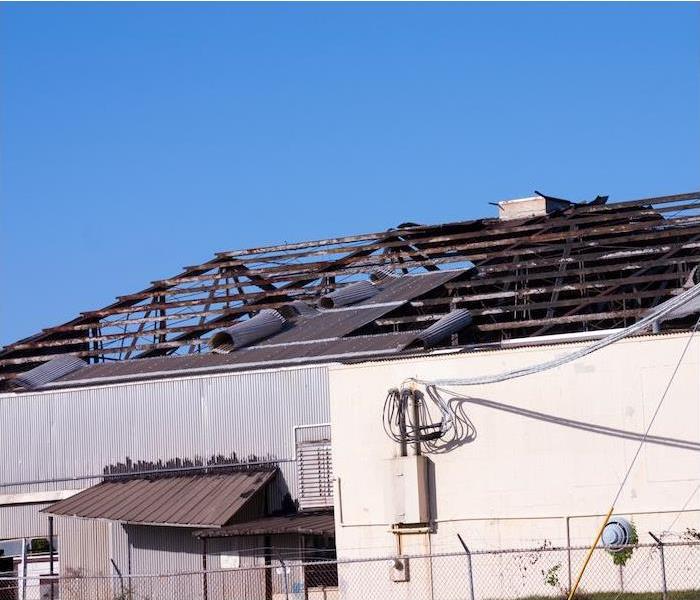 Call SERVPRO of Troup-Coweta to restore your commercial property after a fire has caused a large loss.
Call SERVPRO of Troup-Coweta to restore your commercial property after a fire has caused a large loss.
As a business owner, there are a lot of things to be concerned about when it comes to keeping the doors open. One important element of running a business is having a plan when disaster strikes and strikes hard.
Disasters can come in many sizes, but one that is perhaps one of the most concerning is what is called a “large loss” to your commercial property. A “large loss” is defined as a large scale loss that has a considerable financial impact to your business.
What can SERVPRO do about a large loss for your business?
Emergency Response. We have emergency services on deck 24⁄7 to answer the call for whenever you might need us. We will act immediately to contain the damage and start the repair procedure. We’ve worked with commercial organizations of all kinds for more than 50 years, and we are the experts in cleaning up after large-scale damage and getting businesses just like yours back up and running as fast as possible.
Treating the Damage. Our pros in green consist of licensed experts who have been educated in specialized procedures for removing water and treating smoke damage in your commercial property after a fire. Even if the bulk of your building has been affected, we work diligently to rescue what can be restored and detect issues that may be invisible to the untrained eye. Getting your business back up and running is critical, and we do our best to ensure the work is done correctly and thoroughly while working as quickly as possible. With our knowledge and industry-leading equipment, we’re able to do the most comprehensive job in the shortest amount of time.
When you call on SERVPRO for large-loss restoration services, you can count on consistent communication throughout the duration of the job, the highest-quality products and unmatched customer service. We understand the worry that commercial property damage may cause.
The subsequent difficulties caused by smoke, water from firefighting efforts and structural damage might make your business seem irreparable. You can put your confidence in our technicians, who will work hard to treat the damage, identify any objects that need restoration or replacement, and even coordinate with your insurance provider.
Allow SERVPRO of Troup-Coweta to restore your commercial property after a fire has caused a large loss and interruptions to business. We are on hand 24⁄7, ready to take your call right now.
Storm Preparation Can Save Your Life
6/7/2022 (Permalink)
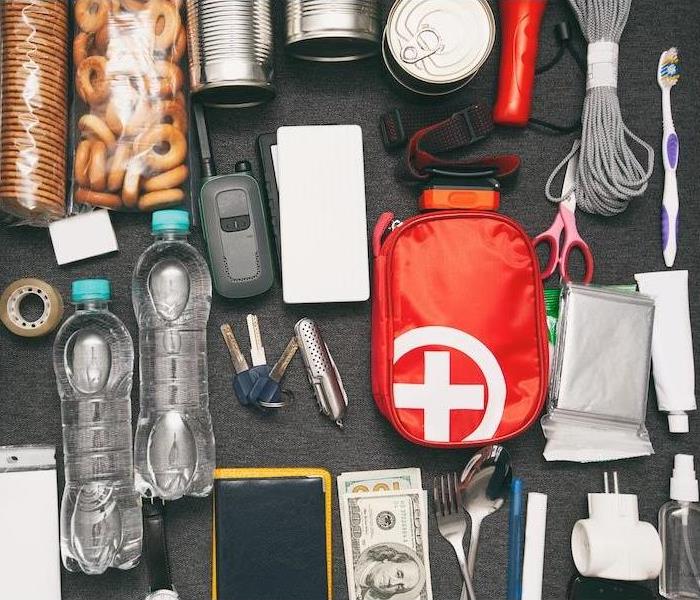 SERVPRO of Troup-Coweta is ready 24/7 to help you get back on your feet after storm damage!
SERVPRO of Troup-Coweta is ready 24/7 to help you get back on your feet after storm damage!
When a severe storm warning is issued, you race to prepare, unsure of what to do first to keep you and your family safe. Preparing for storms ahead of time can keep you from having to rush to make a plan.
But with that in mind, 42% of Americans say they do not have an evacuation plan in place. A lack of preparation for an impending storm puts you at risk of the storm’s fatal effects.
Here are a few steps you should take ahead of time to prepare:
Develop a safety plan. The first step in storm preparation is to create a safety plan. Make a household meeting place and, in the event of an evacuation, know where you need to go. Make sure that everyone in your household is aware of any impending weather events and what they can do to stay safe.
Pack an emergency kit. Having an emergency kit on hand ensures that all of the essential items you may need in the event of an emergency or evacuation are all in one place. Items such as emergency food and water, medical supplies, flashlights, and a first-aid kit should be included. Keep your kit in a location where everyone in the house can access it when needed.
Prepare valuable possessions. Flood water can enter your home during severe storms, and if your belongings aren’t in a safe area, they might be ruined by water damage. Passports, birth certificates, family photos and any other items that are too important to lose should be stored in a plastic bag or a waterproof container.
Stay informed. Keep an eye out for local weather alerts to get ahead of any approaching storms. You can stay up to date on current weather events by listening to local radio and television stations. Make sure you understand the difference between a storm warning and a storm watch, as they require distinct preparation measures.
Find a safe place to stay. If you need to shelter in place, stay in your basement or an interior room with no windows. If you feel you need to find a safer place to shelter, you can search for a local mass care shelter to evacuate to. Wherever you find yourself during a storm, be sure to always bring your emergency kit.
When severe storms damage your property, quick action can prevent further damage. SERVPRO is available 24/7 to repair storm damage of any size ASAP
Your Partners in Business
5/17/2022 (Permalink)
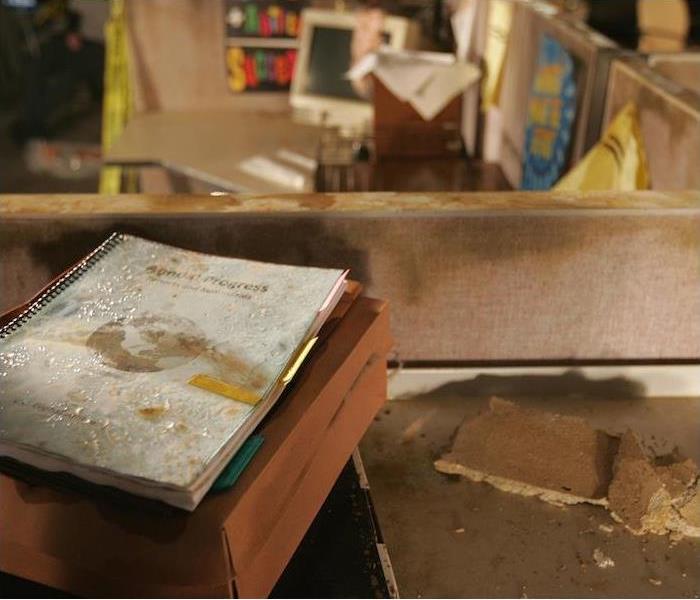 SERVPRO of Troup-Coweta is your local commercial restoration expert. Contact us today should you experience any damage.
SERVPRO of Troup-Coweta is your local commercial restoration expert. Contact us today should you experience any damage.
When running a business, to say that it can be stressful at times is quite an understatement. As a business owner, you know how difficult it can be to have things always run smoothly. Major damages or accidents can cause major losses to a company, and that’s something we want to help you avoid.
That’s why you can count on SERVPRO to become your partner in the business world. We are locally owned and operated, and we will help you work through or recover from anything that can possibly take away from your business. Our goal is to help you and your business continue down the road to success.
Large loss recovery. The top cause of financial loss for businesses across the United States are fires, storms and flooding. These things can and likely will cause large amounts of damage, especially if you wait before dealing with the problem. That’s where SERVPRO can come in with our highly trained professionals to help get you on the road to recovery.
Emergency Ready Plan. Preparation is key, which is why you need to prepare your business before disaster strikes. We will help you create and put the perfect plan into place, so that when disaster comes, you know exactly what to do. There are specific things you should consider when planning, like having an emergency chain of command, alternate meeting or work sites, and how to handle restoration needs.
Cleaning of All Kinds. We can help you with any specialty cleaning needs you have, like biohazard removal,, as well as routine cleaning needs like carpet cleaning or upholstery restoration. No matter what the messy issue is, we will come up with a solution to get it cleaned.
Restoration Services. Whether you’re dealing with storm damage or a small kitchen fire got out of hand, these things require cleanup and restoration services. SERVPRO of Thomaston, Forsyth & Fort Valley has all the bases covered, offering comprehensive restoration services for water damage, fire damage and storm damage, among other emergencies.
Industry Specialization. We have spent years learning about commercial enterprises, so we know that we can help anyone. We know the ins and outs of a variety of industries and stand prepared to handle those needs. Because we understand how important your business is, we will often enclose a work area during restoration so that your business operations aren’t disrupted. Whatever your recovery need may be, and whatever your commercial property may require, trust SERVPRO to get the job done. Contact us today to get started on an Emergency Ready Plan or find out how we can serve your business.
How Thorough Should My Business' Severe Weather Plan Be?
5/4/2022 (Permalink)
 If you need assistance creating a Safety Plan for your business, give SERVPRO of Troup-Coweta a call today.
If you need assistance creating a Safety Plan for your business, give SERVPRO of Troup-Coweta a call today.
If you have not yet done so, adding “create a severe weather plan” to your to-do list is a must as a business owner. Not only is an emergency action plan required by OSHA for all employers, but it is also a good idea for everyone involved.
Being prepared can keep you and your staff safer in the event of a severe weather incident, and can encourage everyone to stay calm in what can quickly turn into a chaotic scenario. However, if you are new to emergency action planning, you may be wondering how thorough your severe weather plan should actually be. While it is important to make sure all of your bases are covered, it is also important to remember that weather is unpredictable by nature and your plan should ultimately reflect that.
The Basic Outline of Your Severe Weather Action Plan
**Determine where everyone will go.** In the event of severe weather that strikes while staff is on-site, it is important that everyone stays put until the threat has passed. You will want to determine in advance what the safest area of your building is, as that is where everyone should go when the weather turns sour. Ideally, this will be a room at or below the ground floor of the building that is free from any windows or external-facing walls.
**Determine what everyone will need.** In the event of severe weather, a power outage is extremely likely. That is why it is important to create an emergency kit for your staff, stored in the area you will seek shelter. This kit should include flashlights, batteries, first-aid supplies and anything else to keep everyone comfortable during a power outage. It is also a good idea to include food and water so no one will need to leave the area prematurely.
**Determine your communication plan.** Trying to communicate with employees during a chaotic scenario is less than ideal, so think in advance about how you will keep them updated. Communicate the severe weather protocol in advance, and ensure that everyone knows exactly what to do if there is an imminent threat.
*If your building is damaged by severe weather, you can count on us. Get in touch today to learn more about our restoration process.*
SERPVRO assists with large commercial loss
4/21/2022 (Permalink)
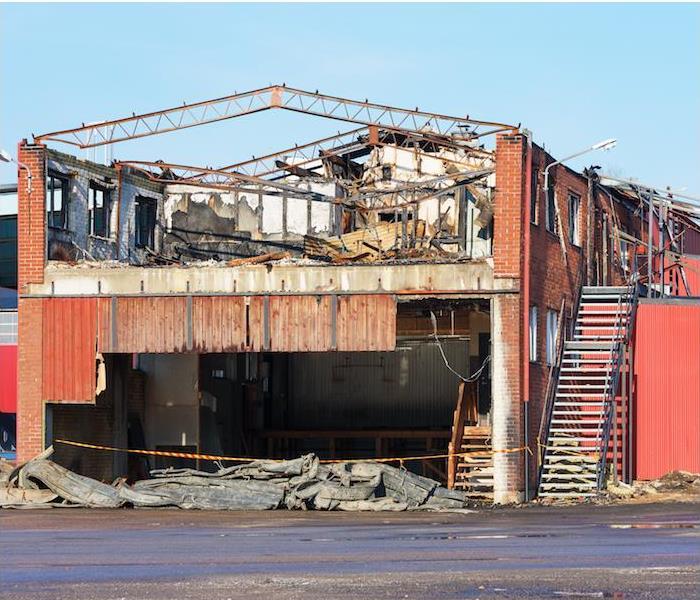 If your company encounters any damage to your property, call the experts at SERVPRO of Troup-Coweta Counties.
If your company encounters any damage to your property, call the experts at SERVPRO of Troup-Coweta Counties.
Floods, fires, blizzards and other extreme weather disasters or workplace incidents may cause enormous damage to warehouses, offices, retail shops and other commercial structures.
Flooding and fire disasters are two of the most common causes of severe economic losses.
COMMERCIAL WATER DAMAGE. Commercial water damage from flooding or other events can be devastating and costly. According to the U.S. government, the average commercial flood claim in the past five years has been around $89,000. Flooding may cause major damage to flooring, building material and drywall, putting the structure at danger. Furthermore, valuable and essential machinery and electronics may be damaged.
When you call SERVPRO, we will arrive as soon as possible to begin removing flood water and prevent it from spreading and creating further damage and difficulties.
SERVPRO professionals are highly trained and prepared to remove huge amounts of standing water and excess moisture from commercial buildings. We can also dry and repair construction materials, documents and electronics that have been damaged.
Our skilled water removal equipment can remove large amounts of standing water, while our cutting-edge drying equipment can remove excess moisture from any afflicted areas of the property. We can restore any of your essential devices (computers, TVs, monitors and so on) and assist in the recovery of lost data if they are damaged. We may also provide comprehensive restoration services if any structural aspects of your building are affected.
COMMERCIAL FIRE DAMAGE. Another disastrous catastrophe that might happen in a business environment is a fire. When they occur, they usually spread swiftly and do significant damage to the property and its contents.
Because damages are caused not only by the fire itself, but also by soot, smoke, firefighting attempts and other byproducts, there is more to clean and restore than the building itself.
We clean up and repair all affected areas after a fire through highly specialized solutions. As well as repairing any structural damage caused by the fire, we can also repair items that have been harmed by soot, smoke or water damage from firefighting efforts as much as possible.
While fires and floods are two of the most prevalent calamities that companies and organizations encounter on their property, there are still a plethora of other large loss events that we can handle. If you are a company owner who has encountered a damaging incident on your property, call SERVPRO of Troup-Coweta Counties and we’ll respond to your emergency immediately.
The Sights, Smells, and Sounds of Water Damage
4/20/2022 (Permalink)
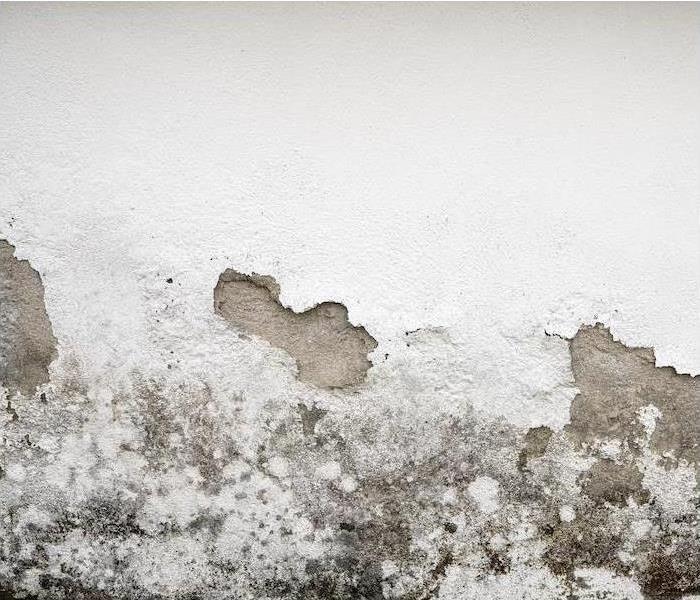 ?If you suspect water damage in your home, call SERVPRO 24 hours a day.
?If you suspect water damage in your home, call SERVPRO 24 hours a day.
Water damage can hide for a little while before revealing itself in your home, but it can only hide for so long. Depending on the type and location, it may be a matter of a few minutes, hours or days before you notice something’s going on, but eventually the water will collect itself somewhere or affect something you can’t help but notice.
Let’s look at the most common ways you can catch a leak in the act, and hopefully put a stop to it before it becomes a full-blown problem.
Spots. They call those fraud protection overlay images “watermarks” for a reason. One of the absolute telltale signs of water damage is noticing dark or wet spots on your ceiling or walls, both indicative of a leak from above. These can let you know there’s a problem on the roof or in the attic, or something happening with a pipe inside the wall.
Paint or drywall that flakes or bubbles. Paint can’t cover a water leak for long—eventually it will show in the form of cracking, bubbling or flaking. And drywall will expand, crack or otherwise fluff up as it becomes damp. (It will also weaken significantly.)
Puddles and pooling water. You clean up a puddle in the floor or under a cabinet, or you dry a wet spot in the carpet, only for it to come back. Uh oh. There’s something under there causing water to pool up and seep through.
Running water sounds. Like we said, water leaks can hide for a while before they become visible. But a keen ear in a quiet moment might help you catch something going on. Be on the listen-out for the sound of running water inside the walls when no plumbing is in use. You should also heed sounds like bubbling, gurgling or whistling from your water heater or plumbing in general.
Moldy smell. A musty, pungent odor can be a dead giveaway that moisture has gotten out of control or that water damage is evident in a basement or bathroom. If you catch that signature smell, mold is already growing and you need to take action.
Your utility bill. If your home doesn’t tell you about hidden water leaks, your utility bill may. If you notice an uptick without explanation, it could indicate a hidden leak—for example, a puncture or root invasion in an underground pipe that could lead to serious foundation problems.
If leaks lead to water damage, you’ve got a friend in the restoration community. Call SERVPRO to get yourself safely back in the dry.
Tips For Recovering After a House Fire
4/15/2022 (Permalink)
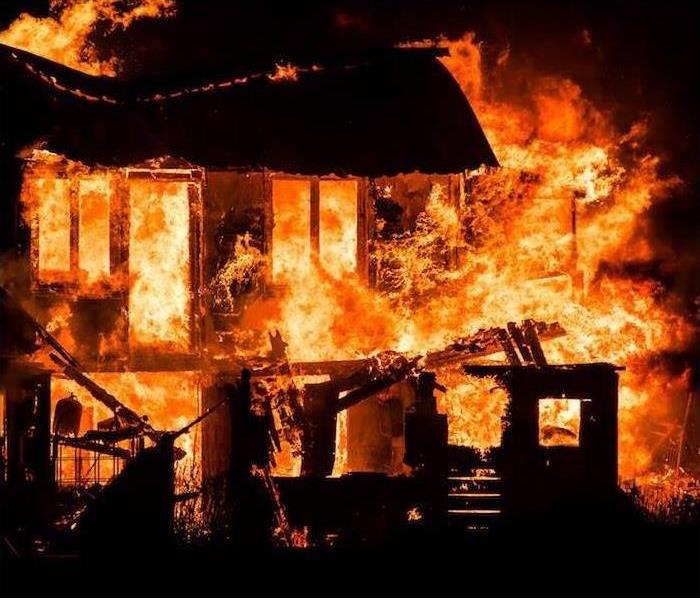 House fires trend to peak during the winter. SERVPRO of Troup-Coweta is available 24/7 in the event of an emergency.
House fires trend to peak during the winter. SERVPRO of Troup-Coweta is available 24/7 in the event of an emergency.
No one likes to think about suffering a loss like a house fire, but it’s a reality for millions of American families every year. House fires aren’t a seasonal risk to your home, but they do happen more frequently during the winter months.
If your family suffers a house fire, even one that does extensive damage, you can take steps to recover what you can from your home and recover emotionally, too. These tips can help you start the restoration process and help you deal with the aftermath of a house fire.
Taking the First Steps
The American Red Cross offers the following tips to help you in the immediate aftermath of a house fire.
After you’ve gotten everyone out of the house and treatment for any injured people or pets, then these are your next steps:
Let your loved ones know you’re safe. This is an important step, especially when news of a fire or issue can spread quickly.
Don’t go back into your home until it’s secured. The authorities will let you know when it’s safe to go back to your house. Please don’t go in there before because it can be unsafe.
Get in touch with your insurance company. You’ll want to let them know what happens to get the restoration process started.
Tips for Dealing With Emotions
It’s normal to feel a wide range of emotions after your home suffers a fire. They can range from grief to anger to depression. The American Psychological Association offers this advice to help you begin the process of recovering emotionally.
Find ways to reduce your stress. That can include exercise, meditation and deep breathing.
Don’t make major life decisions. It’s smart to avoid switching jobs or making other major choices while dealing with these complicated emotions.
Talk about your feelings. Whether you choose a therapist, family members or a close friend, it’s smart to talk to someone about what’s going on.
Don’t set expectations. There is no way you “should” be dealing with these issues. Instead, do what you can and be kind to yourself.
Take good care of yourself. Eat balanced meals and get plenty of sleep. It will help you better deal with a stressful situation.
If your home is damaged due to a fire or any other cause, you can always count on us for restoration assistance. We have crews who are available 24⁄7 in the event of an emergency. Contact us at any time to learn more about our restoration services and how we can help.
What Is Your Business’ Storm Readiness Plan?
4/13/2022 (Permalink)
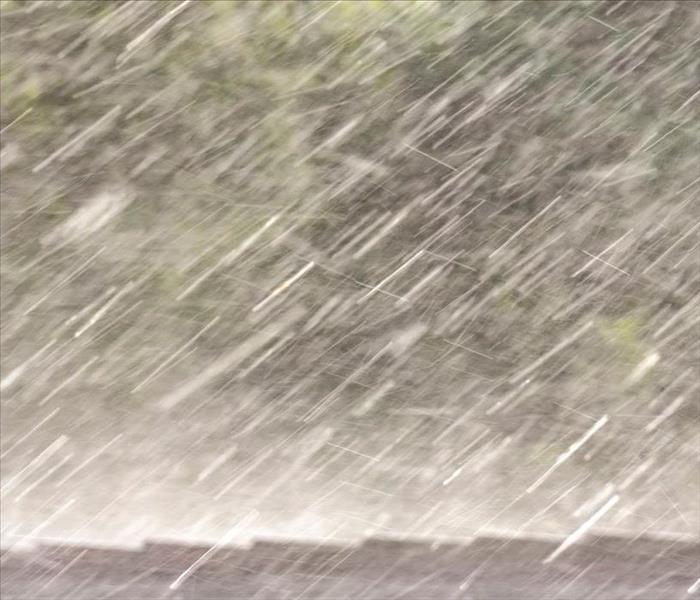 If you need help getting your business prepared for a storm, call SERVPRO of Troup-Coweta today.
If you need help getting your business prepared for a storm, call SERVPRO of Troup-Coweta today.
A severe storm is an unpredictable thing—with atmospheric uncertainty and ever-changing conditions, the timeline and severity of a storm can often be in question until the moment it moves into an area.
However, this uncertainty is not an excuse to not be prepared. In fact, it is all the more reason for business owners to put a plan into place. Not only does OSHA require all employers to draft a written emergency action plan to comply with their standards, but it is also a good idea from a practicality standpoint. Below, we will take a look at some key elements of your storm readiness plan to include so you can keep yourself and your employees as safe as possible should the weather turn dangerous.
What Do I Do for My Business’ Storm Readiness Plan?
**Create an emergency kit in case weather strikes on the job.** Unfortunately, storms never adhere to a convenient schedule, meaning the odds are high that one may strike while everyone is actively in the office. If this is the case, keeping everyone safe and comfortable is top priority while you wait for the storm to pass. An office emergency kit, which should include food, water, flashlights and a weather radio at minimum, will keep everyone comfortable should the power go out and require you to stay put until the threat is over.
**Communicate with your employees.** Trying to communicate instructions and convey new information in a stressful scenario is never ideal, so take this opportunity to communicate with your employees in advance so they are aware of the severe weather protocol. Let them know what your plan is, where they should seek shelter in bad weather and what to expect in an emergency scenario.
**Protect your business’ data.** Because most things are digital now, rain can be quite dangerous to business data. Be sure that your data is backed up, either on an external hard drive or in the cloud, so it can be retrieved even if key computers get water damage due to severe weather.
*If your business sustains damage due to a storm, we are the team to call. Get in touch with us today to learn more about how we can help.*
The 411 on Commercial Water Damage Prevention
4/11/2022 (Permalink)
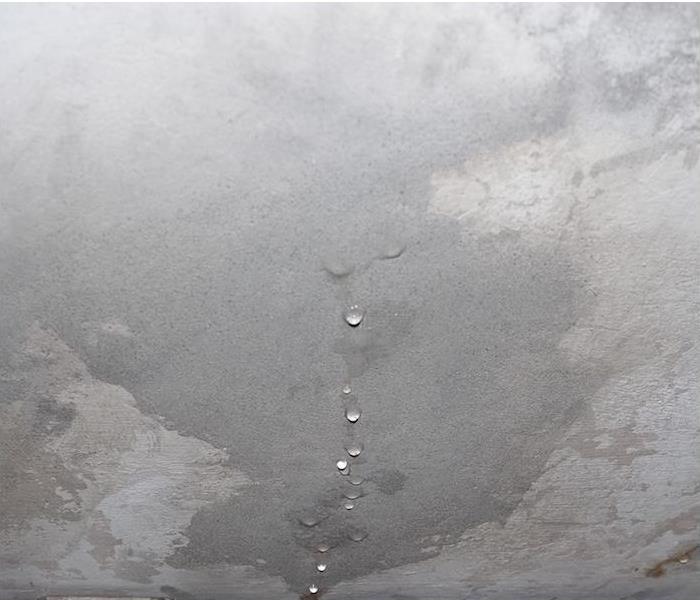 If your business is affected by water damage, reach out to your local restoration expert SERVPRO of Troup-Coweta.
If your business is affected by water damage, reach out to your local restoration expert SERVPRO of Troup-Coweta.
Water damage is often unanticipated and comes in all shapes and sizes, whether it is caused by a flash flood, a burst pipe or a leaky roof. No matter if it is pooling water in your ceiling that can go unnoticed or you’re standing in water up to your knees, water damage can cause significant untimely and costly interruptions to your operations.
In many circumstances, however, preventive measures can be taken to avert severe delays or property damage. The following are a few recommendations to inspect and prepare you in protecting your facility from water damage:
Check for plumbing issues. One indicator of plumping issues could be if you’ve observed a substantial increase in your water bill, a pipe or plumbing equipment is almost certainly to fault. You can check your walls, floors and ceilings for indications of leaks. Discoloration or mildew development is also a reliable indicator that a pipe is damaged or leaking. Whatever you discover, be certain to get it repaired as quickly as possible.
Install a water-sensing device. You can find water sensors available at practically any home improvement store. The devices provide alerts or alarms in the case of a water leak, allowing you to contain the damage and respond quickly. The majority of sensors may be connected to your smartphone or integrated with your facility’s security system, enabling you to get alerts even while you’re not on-site.
Look at the windows and doors. Water making its way indoors from outside during storms or rain is another frequent cause of water damage. Examine the area surrounding your windows, doors and any other exposed locations. Be sure to reseal any gaps or cracks using caulking that is waterproof. Additionally, refinish window or door trim to provide additional protection against decaying seals and trimming.
Regularly inspect the roof. Have an expert inspect your roof to discover places that might leak. Different types of roofing may need different treatments such as sealing on a regular basis to provide an additional layer of protection. Additionally, remember to clean the gutters to ensure that rainfall flows easily away from the roof. Take note of locations that are prone to drainage problems. Along the outside your building, be sure to look for spots that may be prone to water accumulation if the ground gets too wet. Consider getting the help of a landscaper or drainage specialist to do an inspection of the area and provide proper draining.
If your business is affected by water damage, enlist the help your local experts at SERVPRO of Troup-Coweta. We are here to help 24⁄7 whenever disaster might strike.
Do You Have a Plan for Staff Safety in Severe Weather?
4/8/2022 (Permalink)
 Do you have a Plan for Severe Weather? Reach out to SERVPRO of Troup-Coweta today!
Do you have a Plan for Severe Weather? Reach out to SERVPRO of Troup-Coweta today!
Severe weather can be an extremely dangerous thing. Not only is it often unpredictable, but it is also quick-moving—meaning waiting to prepare when it becomes imminent can put you in harm’s way.
If you are a business owner, preparing in advance is even more important, as it will help you keep both yourself and your staff safer in the event of weather concerns.
If you have not yet put together a plan for severe weather, now would be the time to do so. Not only is it a requirement from OSHA that you have an emergency action plan in place, but it is also a smart way to keep everyone calm and comfortable even when the weather goes south. There are a lot of key elements in emergency planning, but below, we will focus specifically on some things to consider to keep your staff safe.
How to Keep Your Staff Safe During Severe Weather
**Make planning a collaborative process.** Having an emergency action plan is great, but it does not do much good for your organization if no one is aware of what the plan is. Make sure you include your staff in the planning process and keep them aware of what protocols to follow should severe weather become imminent.
**Make sure everyone’s needs are accounted for.** It is a good idea to pack a general emergency kit for your workplace to cover things like flashlights, first-aid supplies and general items to keep everyone comfortable in the event of a power outage. However, you should also encourage staff to have their own personal emergency kits that meet their needs—that way, if there is an emergency scenario, they will have access to necessities such as medication and personal items.
**Make it clear where everyone should go.** In the event of a severe weather event, you and your staff will need to seek shelter on-site until the threat passes. Be sure you have a safe area clearly identified so staff know exactly where to go. This area should not have any windows or external-facing walls, and ideally will be at or below the building’s ground floor.
*If your building has damage due to severe weather, we are the team to call! Contact us today to learn more about our storm restoration practices.*
Understanding Fire Sprinkler System Requirements for Commercial Spaces
4/8/2022 (Permalink)
 If your business is damaged from a fire, trust the experts at SERVPRO of Troup-Coweta to make it "Like it never even happened."
If your business is damaged from a fire, trust the experts at SERVPRO of Troup-Coweta to make it "Like it never even happened."
If you own a business or other type of commercial space, fire safety is extremely important. Not only is adhering to fire codes a must to allow for your continued operation, but it is also key that you do everything you can to protect your staff and your customers who are working and doing business inside the space.
Preparations can also reduce the impact of a fire, and given that over half of businesses are not able to recover after a fire emergency, doing what you can to reduce a fire’s impact is a prudent move.
One vital element of safety and harm reduction is a fire sprinkler system. While fire sprinklers are not *always* required in commercial buildings, they are more often than they are not—and even if they are not required in your specific situation, it is likely worth having them installed given that sprinklers are effective in stopping 88% of commercial fires when they are installed.
How Do I Know if I Need Fire Sprinklers in My Commercial Space?
While every area will have local fire codes for businesses that may vary, some of the national guidelines are included below:
* Fire sprinklers must be installed in any new commercial building exceeding 5,000 square feet, or any building that is renovated to contain 5,000 square feet after construction.
* Buildings more than 55 feet in height must have fire sprinklers on every floor.
* Self storage buildings must have fire sprinklers installed, except in single story facilities with no indoor corridors.
* If the municipal water pressure to the building is not adequate to pressurize the sprinkler systems, a fire pump should also be installed.
If you are unsure about whether you need a sprinkler system in your commercial space, or you have questions about the system you have, your local fire department will likely be able to connect you with the right person to make an assessment. In addition to installing fire sprinklers, they can help you determine if your fire escape routes, fire exits and fire extinguishers are up to code as well.
If your business is damaged from a fire, we can help. Contact us today to learn more about our commercial restoration services for businesses impacted by fires, floods and more.
Potential Spring Weather Hazards Across The Country and Close to Home
4/4/2022 (Permalink)
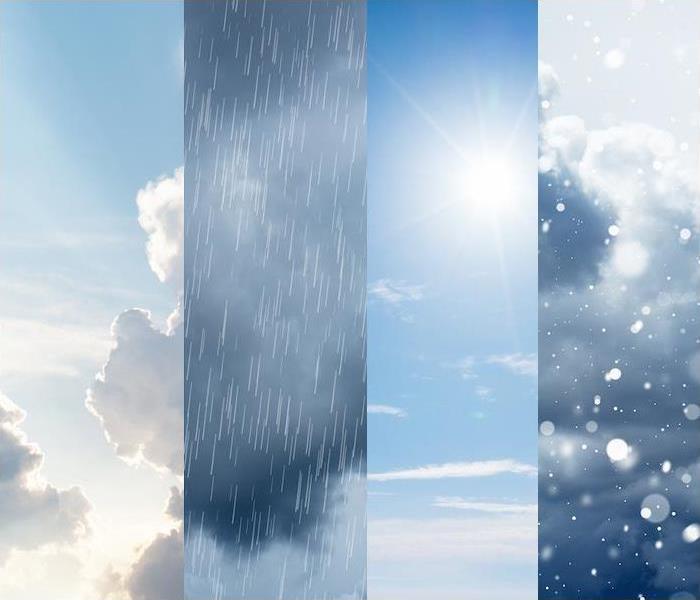 Extreme temperature changes can lead to the possibility of severe weather. SERVPRO of Troup-Coweta is a click away if you experience any damage.
Extreme temperature changes can lead to the possibility of severe weather. SERVPRO of Troup-Coweta is a click away if you experience any damage.
The United States is the third largest nation in the world, coming in behind Russia and Canada based on land mass.
When you have such a large geographical area encompassed in one country, “spring weather” season can have a much different meaning depending on where you are. There are all types of different weather events, which means there will also be different weather threats.
With spring right around the corner, read on for a look at what different parts of the country can expect, weather-wise.
First, let’s take a look at the Pacific Northwest region. The residents here experience heavy rainfalls during the spring months, causing flooding and water damage. There are areas with high elevations that may be dealing with a different type of wet weather—remnants of snow or ice melting, which cause problems of their own.
Now looking at the Upper Midwest and Northeast regions, these regions basically don’t know the difference between winter and spring! This region experiences winter weather to the fullest, dealing with snowstorms and blizzards all the way until early summer at times.
Then you have people living on the West Coast who don’t even know what winter weather is, as it’s almost non-existent in this area. Rather than blizzards or snow, they are dealing with excessive heat waves. These heat waves can endanger the lives of those living in the area, and they also contribute to wildfire conditions.
When you get to the middle part of the United States, you will notice that from Iowa to Texas they are dealing with dry, windy weather! Things like wildfires, windstorms and derechos are just a few of the weather hazards this area faces during spring. Not to mention an area that is named “Tornado Alley” is in this region as well.
Then you have the Southeast region, where we are located. We see spring as a wonderful time of the year; however, we do experience our fair share of weather hazards. Intense thunderstorms and even tornadoes are common this time of year. And states that border the ocean also have to look out for rip currents and early-season hurricanes.
So, what’s the point here? No matter what “spring weather” looks like in your neck of the woods, there are always weather hazards! That’s why despite of where you live, you will need to be prepared for any kind of weather event.
If extreme weather leaves you with damage from water, fire or other elements, help is a click away. Contact SERVPRO for fast, expert recovery.
SERVPRO's Process for Fire Restoration
4/2/2022 (Permalink)
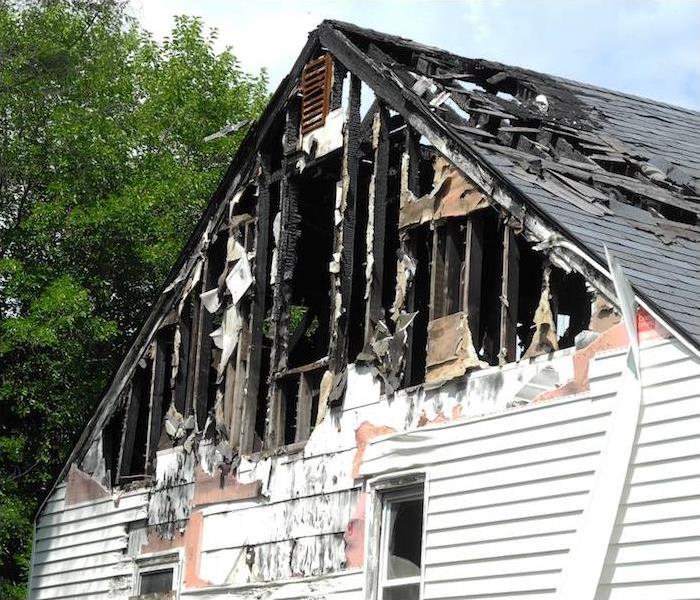 When your home or business endures fire damage, you can count on SERVPRO of Troup-Coweta from start to finish.
When your home or business endures fire damage, you can count on SERVPRO of Troup-Coweta from start to finish.
After a fire strikes your home or business, you’re left with damage from the fire as well as water saturating everything from the firefighting efforts. None of that would be a surprise to our experts here at SERVPRO, as we have the specialized fire restoration expertise to return your house to its pre-fire state.
Every fire damage situation is unique and necessitates a unique remedy, but the overall procedure remains the same. The following is how we will handle a “normal” fire damage situation.
Initial contact. We are on call 24 hours a day and seven days a week, including all holidays. Disaster doesn’t wait for office hours to strike, and we don’t wait to respond. When you contact us, the restoration procedure starts. Our experts will ask a number of questions about the fire damage so that we can get started immediately with the necessary equipment and resources.
Inspection. To establish the degree of the fire, water, smoke and soot damage, we will thoroughly check and test every room. By doing this, we are able to formulate the proper strategy. Fires can cause the air quality to be unsafe, so it’s important not to re-enter the property until experts have determined it is safe to do so.
Water removal. If there is water damage present as a result of firefighting efforts or sprinkler systems, we will begin the water removal procedure immediately to ensure the bulk of the water is removed. If there is any remaining water, it will be removed using dehumidifiers and fans, and the drying process will begin from there.
Cleaning. SERVPRO removes smoke and soot from ceilings, walls and other surfaces using highly specialized state-of-the-art equipment and processes. We’ll clean up all of the fire-damaged items and areas that can be cleaned and repaired. We will also work to return your possessions to their pre-fire state by applying a number of cleaning processes. We can clean and restore electronics, documents, upholstery and more. We also specialize in industrial air scrubbers and fogging equipment to eliminate odors.
Restoration. If during the cleaning process we determine that certain areas of your property cannot be cleaned, we also provide comprehensive restoration and rebuilding services. Restoration and rebuilding efforts include everything from modest repairs like drywall replacement, painting or carpet installation to substantial repairs like the complete rebuilding of different areas or rooms in your home or property.
When your home or business endures fire damage, you can trust that SERVPRO of Troup-Coweta Counties will be ready to be a helping hand and will get your home restored quickly and thoroughly to its pre-fire condition.
A Guide to Fire Code Considerations for Your Commercial Space
4/2/2022 (Permalink)
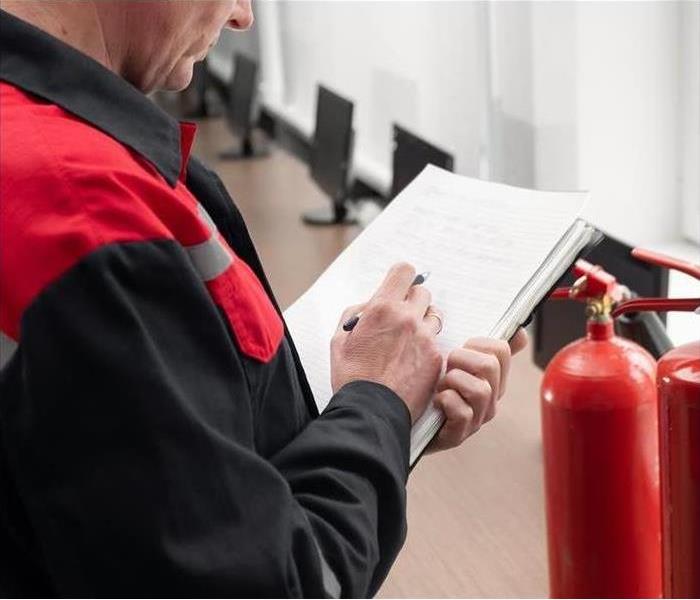 If your business needs help with fire damage, you can count on SERVPRO of Troup-Coweta 24/7/365.
If your business needs help with fire damage, you can count on SERVPRO of Troup-Coweta 24/7/365.
If you own or operate a business or other commercial space, understanding how to protect your investment and your employees from harm related to fire damage is a must. Not only are fires extremely dangerous for anyone who is in the area, but they can also be devastating to businesses—it is estimated that over half of businesses are unable to recover from a fire.
Fortunately, businesses are able to take many precautions when it comes to fire prevention, and national commercial fire codes are a great place to start. While each area will have their own local codes that should also be followed, below, we will examine some of the national codes that can help you keep your business safe and operational.
Fire Codes Pertaining to Commercial Sprinkler Systems
While they are not required in all types of commercial buildings, a commercial fire sprinkler system can be a fantastic way to reduce the risk of a fire severely impacting your business. Typically, the rules for fire sprinkler systems are that they must be installed in any commercial building over 5,000 square feet and any building that is taller than 55 feet in height.
Fire Codes Pertaining to Fire Alarms
While smaller commercial spaces are not always required to have a fire alarm system, installing them is a simple enough process that it is always a good idea. By alerting people to the fire quickly, your employees and customers will have more time to escape, which could potentially save a life. If possible, it is best to invest in interconnected fire alarms, so that when one is triggered, they will all sound to alert everyone in the area.
Fire Codes Pertaining to Fire Extinguishers
All businesses are required to have fire extinguishers on the premises, but how many and where they should be located varies based on the size and nature of the commercial space in question. Additionally, business owners are required to have fire extinguisher training with all employees at least once per year to be certain that everyone is aware of how to use a fire extinguisher and comfortable with the best practices.
If your business needs help with fire damage, you can count on us. We are here 24 hours a day to help you recover in the aftermath of a commercial fire. Contact us today to learn more.
Tornadoes 101
3/31/2022 (Permalink)
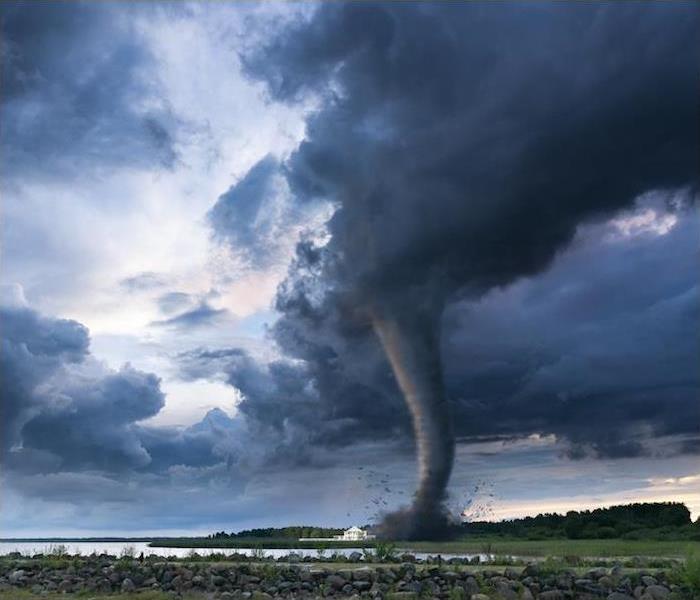 Spring storms can cause major damage to your property. If you experience any damage reach out to SERVPRO of Troup-Coweta Counties.
Spring storms can cause major damage to your property. If you experience any damage reach out to SERVPRO of Troup-Coweta Counties.
Georgia is prone to severe weather of all types but is particularly prone to thunderstorms and tornadoes. All of Georgia is prone to tornadoes throughout the whole year, but they are most likely to occur from March through May and peaking in April.
When there is severe weather, be sure to keep a close eye on how the weather changes and know how to identify tornadoes. Tornadoes are often accompanied by thunderstorms and can develop quickly, so it’s important to have dependable ways to get updates about storms by turning on your radio or TV, or by having notifications on your phone for weather alerts.
A tornado watch means that there hasn’t been a tornado sighting yet, but the weather is favorable for them to happen.
Once a tornado watch is issued, it’s important to stay notified through the tornado warning system in your area, stay tuned to local radio stations or an NOAA radio or have notifications on your mobile device for weather updates.
Most tornado-prone areas have an outdoor siren system. Know how to distinguish between the siren’s warnings for a tornado watch and a tornado warning.
A tornado warning is sent out as soon as a tornado has been spotted or shown on the weather radar. You should seek shelter as soon as a tornado is on the way.
Some tornadoes come quickly and without warning, so it is important to know what to look for. Signs that a tornado may be approaching include:
- A rotating funnel-shaped cloud
- Dark or green-colored sky
- Large, dark, low-lying cloud
- Hail
- Loud roar that can be compared to a train
If a tornado is heading your direction, it’s important to take shelter immediately in the lowest indoor area of whatever building you are in, away from windows. The best places to go are basements and cellars, but hallways or other windowless, centrally located areas are good, too.
If you are outdoors, find a place to take shelter, but if that is not possible, find a ditch and lay face down, covering the back of your head and neck with your hands.
Tornadoes and other severe storms can cause serious damage to your property. If your property is damaged by a storm in any way, SERVPRO of Troup-Coweta Counties has you covered. We are available 24 hours a day and seven days a week so we can begin the restoration process immediately.
Protect Your Business With a Water Damage Prevention Plan
3/30/2022 (Permalink)
 SERVPRO of Troup-Coweta is the best cleanup and recovery team in the industry. Contact us for any restoration needs.
SERVPRO of Troup-Coweta is the best cleanup and recovery team in the industry. Contact us for any restoration needs.
Water damage events like floods, leaks and burst plumbing can cause serious damage and create serious headaches for your business—from ruined documents to moldy walls and carpet, there’s a wide range of problems a surprise water situation can cause. But surprisingly few business owners have an actual plan to prevent water damage, even though it can save multiplied thousands in business interruption and other costs.
Many if not most workplaces have a fire plan, but statistically speaking, you’re more likely to have to deal with water damage than a destructive fire, so it’s definitely in your interest to plan ahead and do everything you can to protect your business assets and teams from the damage a water event could cause.
What Should Your Water Damage Prevention Plan Look Like?
Every business is different, and every location and context varies so there’s not a be-all-end-all solution that fits every workplace. It’s vital to understand the needs of your particular business, the extreme weather possibilities in the north Georgia area and even seasonal changes that could increase water damage risks.
But there are a few things that should be included in any water damage prevention plan, including:
- Routine exams and insurance inspections, which can monitor present water risks and leaks and make recommendations about what may be needed going forward with regard to keeping your likelihood of an event low.
- A task force of leaders who have been prepped, trained and equipped with knowledge and tools like water intrusion response carts.
- Expert knowledge of your water shutoff locations and workings, and whether your shutoff involves one main valve or multiple shutoff zones. Make sure teams know who is authorized to enact main water shutoff in the event of a leak emergency.
- Upkeep of service company contracts and authorizations—in other words, make sure you’ve connected with SERVPRO for your free Emergency READY Profile.
- Installation of modern wireless leak detection equipment, which can alert you at the first signs of a problem.
You can’t prevent everything, but being prepared can minimize your water damage and business disruptions. If water damage becomes an issue for your business, contact SERVPRO and we’ll be there right away to help.
Keeping Track of Fire Safety at Your Business
3/25/2022 (Permalink)
 If you are dealing with the aftermath of a fire at your business, you can depend on SERVPRO of Troup-Coweta.
If you are dealing with the aftermath of a fire at your business, you can depend on SERVPRO of Troup-Coweta.
For business owners, there are few things more important for the safety of you and your staff than ensuring you have the right fire protections in place. Fires can be absolutely devastating for businesses, with over half never being able to recover after the damage—but fortunately, there are plenty of ways to decrease the likelihood that you will ever experience a fire at all.
All businesses are subjected to certain fire codes set forth by the National Fire Protection Association, which provide a great guideline for making sure you are being as safe as possible. In addition to adhering to fire codes when you are first starting out, it is also important to make sure you are regularly auditing your fire safety efforts to be sure nothing slips through the cracks. Below, we have listed out some helpful tips for doing just that.
Keeping Track of Your Fire Prevention Efforts in the Workplace
Make sure you have enough (working) fire extinguishers. It is required that all commercial spaces have fire extinguishers on the premises, though how many and where they are located will vary depending on your specific situation. That being said, it is important to check your fire extinguishers regularly—while they do have a long shelf life, there will be an indicator on each one that will let you know if it is time to be replaced.
Check or install commercial sprinkler systems. While not every business is required to have a sprinkler system, they can be a great investment for any commercial space. Sprinkler systems are extremely effective at stopping fires quickly, so even if your business is not technically required by codes to have them, it might be worth considering having a sprinkler of some sort put into place.
Be sure you are reviewing fire safety with your staff. Fire safety efforts are great, but if your staff is ill-prepared for a fire, they can be all for naught. Make sure you are regularly going over fire routes, fire exits, evacuation protocols and fire extinguisher use with your staff. That way, everyone will know exactly how to take action in the event that a fire begins, which can eliminate confusion in a panicking situation.
If you are dealing with the aftermath of a fire at your business, you can depend on us. Contact us today to learn more about our fire restoration services.
Signs Your Pipes Might be Frozen
3/25/2022 (Permalink)
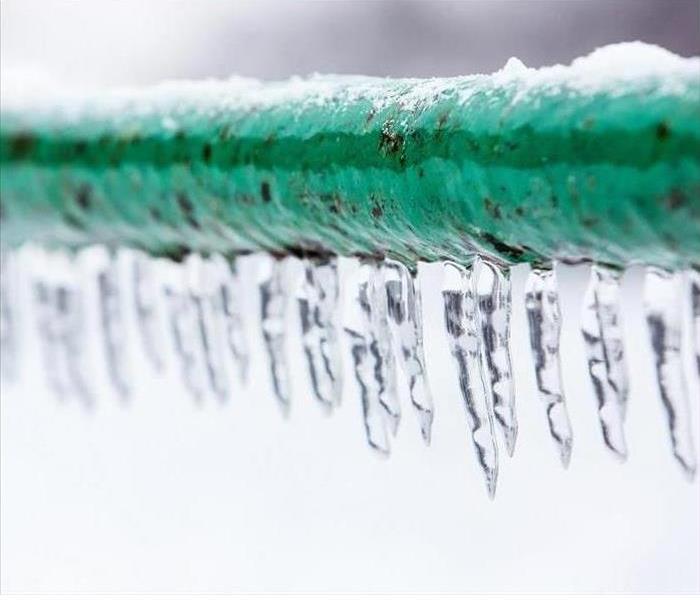 If you have water damage due to frozen pipes, Contact SERVPRO of Troup-Coweta Counties today.
If you have water damage due to frozen pipes, Contact SERVPRO of Troup-Coweta Counties today.
Having the pipes in your home freeze is far more than simply an inconvenience. While you may not be able to use the taps in your house while the pipes are frozen, they can also burst and lead to serious water damage throughout your home.
In fact, the Insurance Information Institute has found that 23% of all the homeowners insurance claims made in the United States are related to water and freezing.
While we tend to think of pipes freezing as something that happens in extremely cold climates, any time the weather falls below 32 degrees Fahrenheit, it is possible for pipes to freeze. Understanding what signs to look for is key for knowing if your pipes are frozen—and if you notice them, acting quickly is a must to avoid costly damage.
Below, we will look at a few key signs that may indicate that you have a frozen pipe on your hands so you can take action right away.
Signs That the Water Pipes in Your Home Have Frozen
No water is coming out of the taps. If you turn on a faucet or tap in your home and do not get water as usual, that may be a sign that your pipes are frozen. Frozen pipes may result in no water flow at all, or they may cause only a trickle to come out of the faucet—regardless, experiencing this is certainly cause for concern.
You experience an odd odor from your tap or drain. If you have an odd odor in your home, and it seems to be coming directly from a drain or tap, that may mean the pipes have frozen. If there are odors in the pipe that are blocked by ice, they will not be able to escape as usual, and will only be able to travel back the way they came.
There is frost on your pipes. If you have pipes that are exposed in your basement, crawlspace or attic, you can check for frost on them if you suspect they may be frozen. Any time frost has accumulated on the outside of a pipe, that is a good indication that you have a full or partial freeze on your hands.
If you have water damage due to frozen pipes, we can help. Contact us today to learn more about our water restoration services and how we can help you.
Areas we Inspect After Storm Damage
3/23/2022 (Permalink)
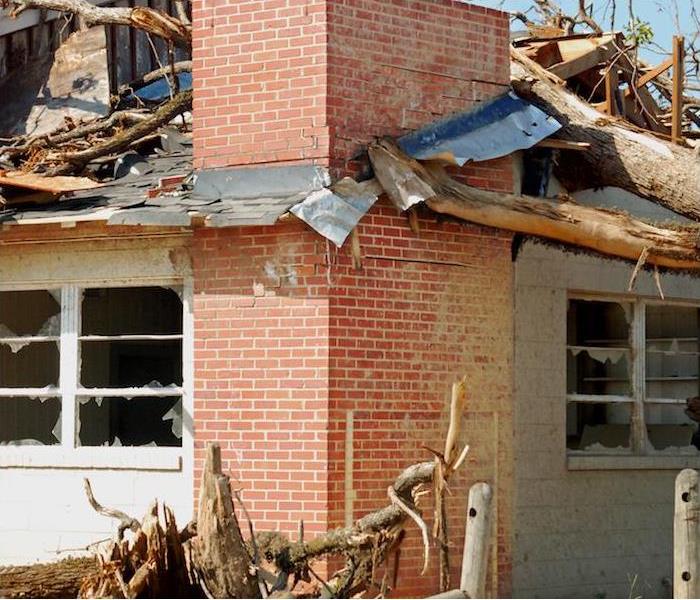 SERVPRO of Troup-Coweta will help you with the whole restoration process after a storm. Call us today.
SERVPRO of Troup-Coweta will help you with the whole restoration process after a storm. Call us today.
You never know when you might suffer property damage due to bad rain, storm damage, wind or debris. In the wake of severe weather, you’ll want to contact SERVPRO to inspect, document and restore any damages to your business for you.
There is a lot you can do to mitigate storm damage, but it’s never completely preventable. Storms can be extremely costly to businesses.
In fact, experts predict that storm and flood damage could cost businesses over $13 billion in 2022.
It’s not always easy for the untrained eye to spot damage after a storm, and damage that goes unnoticed can grow and become even more costly and destructive. When you call SERVPRO to inspect the damage, here are just a few of the main areas we would look for when inspecting your property:
The Roof
Roof damage is one of the most often-occurring kinds of storm-related property damage. We will inspect the roof for loose, curled, missing or cracked shingles.
Additionally, dark patches on asphalt shingles may indicate water damage. Dents or weakened areas on the shingles are indicators of hail storm damage.
We will check for water damage indoors that has sneaked through a damaged roof. Water stains or leaks running down the wall, through a skylight or pooling in the center of the ceiling are further indications that the roof has a leak.
However, not all indications of water damage are obvious. The wisest course of action is to hire an expert to evaluate your house and search for indicators of a leaking roof.
The Exterior
Following a severe storm, you’re likely to find debris scattered around the exterior of your property. These pieces of debris may strike your property, cars or other structures, such as barns or machinery.
We will inspect the whole exterior of your property for loose or broken siding, doors, windows and gutters, among other things. Oftentimes, the exterior can be a significant source of unwanted water leakage that can cause interior water damage and flooding during a storm.
Dents or bends in gutters are often the result of hail, wind and/or debris damage. It is critical to employ an expert to evaluate, record and repair any possible damages precisely and safely.
Windows and Doors
Windows may potentially sustain damage during a severe storm, especially one with heavy winds. Our technicians will inspect the glass for broken panes, shattered glass, chips, scratches and fractures. Additionally, we will search for indicators of damaged seals that allow water to enter through windows and doors.
SERVPRO of Troup-Coweta will help you with the whole restoration process after a disaster, from damage assessment through restoration and rebuilding. Do not hesitate to contact our professionals to get your storm damage emergency repaired immediately and properly.
Reduce the Chance of Commercial Storm Damage
3/18/2022 (Permalink)
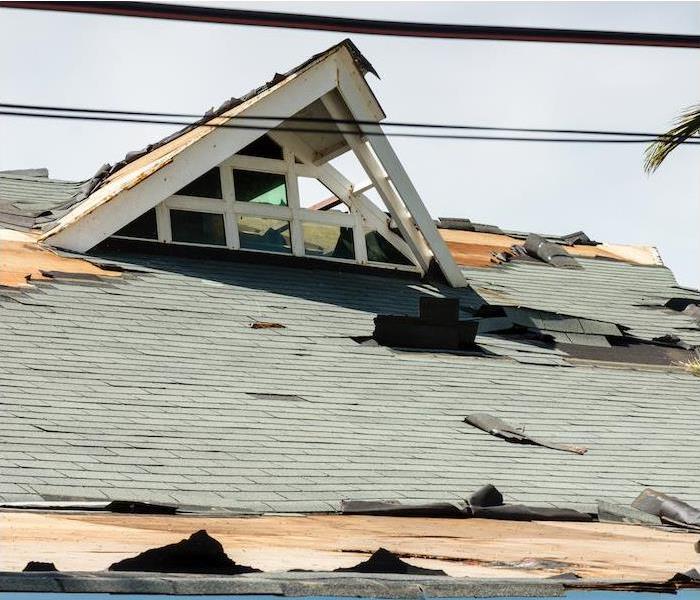 If storm damage ever causes a mess at your business, call the pros at SERVPRO of Troup-Coweta.
If storm damage ever causes a mess at your business, call the pros at SERVPRO of Troup-Coweta.
Without warning, high-velocity winds from severe weather can damage your business. No storm’s timing or severity can be fully predicted.
Tornadoes are a common occurrence here in Georgia. Tornado winds can reach up to 300 mph in the most powerful tornadoes. Wind speeds of this magnitude can lift vehicles into the air, tear houses and businesses apart and turn shattered glass and other debris into dangerous projectiles.
It might feel like there’s nothing that can be done to prevent the full severity of storm damage, but a few simple precautions can be taken to help reduce the chance of property damage and save you money on repairs and missed productivity.
The Roof
It is critical to ensure your roof can hold up against storm damage. Storms may cause shingles to fly off or be broken by hail and debris.
To ensure that your business’ roof is protected against wind damage, get it assessed for a variety of factors, including the following:
- Shingles have a high wind and impact resistance rating
- Shingles are snugly secured and fitted together
- The roof sheathing is set firmly in place
- The connection between the roof and the walls is sufficiently secure to prevent the roof from being lifted off by high winds and updrafts
- HVAC equipment, skylight and pipelines are securely fastened and will not blow away
Exterior Walls and Doors
Different types of exteriors are more or less prone to damage from storms than others. In fact, steel siding is known as one of the most durable siding options available, as it can withstand harsh storms and damaging winds.
Some commercial spaces can be primarily glass, brick or concrete exteriors, which all have different levels of tolerance to storm damage. To make sure your building’s exterior is protected from wind damage, check the following:
- The structure is well-sealed to prevent wind from entering gaps and crevices and damaging the interior of your business
- Siding and windows are attached securely
- All entry doors are triple-hinged and protected with a deadbolt lock
- Overhead doors are well-reinforced and capable of withstanding heavy winds
Outdoor Areas
Many commercial properties have exterior spaces, from walkways to playgrounds. Perhaps you have outdoor benches, tables and chairs or potted plants.
Check the following to ensure that the areas around your property are protected against damaging winds and storms:
- Storage sheds and structures are securely anchored
- Everything you keep outdoors (equipment, inventory and supplies) is either secured or readily moved inside
- Dumpsters, outdoor lighting fixtures and fences are secured
- Large bushes and trees in close proximity to your structure are healthy and pruned
- Outdoor advertising or signage are secured
You’ve worked hard to get your business to where it is today. If storm damage ever causes a mess at your business, call SERVPRO of Troup-Coweta to handle any and all storm disaster cleanup and restoration.
Why You Should Trust SERVPRO with Your Fire Damage Recovery
3/16/2022 (Permalink)
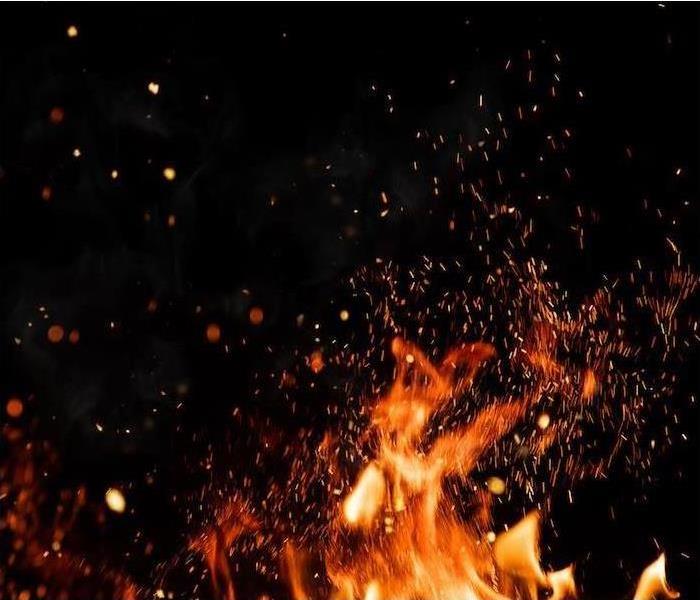 ERVPRO of Troup-Coweta is your local fire restoration expert. No job is too big for our team of experts.
ERVPRO of Troup-Coweta is your local fire restoration expert. No job is too big for our team of experts.
Dealing with a fire is one of the most taxing things a homeowner could possibly imagine.
Fire causes all kinds of damage in your home, and recovering from a home fire encompasses dealing with physical, financial, emotional and mental recovery.
While SERVPRO of Troup-Coweta can’t help with all these areas, we can be your main source of property recovery and restoration. And we can get your home taken care of quickly, which can in turn aid in your emotional recovery as well.
Here’s why you know you can feel good about entrusting your fire recovery to us.
We’re Established.
We’ve been doing this a very long time. SERVPRO was established the same year Thurgood Marshall was appointed to the Supreme Court, if that gives you any idea.
That means we’ve got over 50 years’ experience helping families and homeowners deal with the effects of fire, and we’ll use all those years of innovation and experience to give you the most complete recovery possible.
We’re Skilled.
SERVPRO of Troup-Coweta employs a team of experts, trained and equipped to handle anything fire may have done to your home. From reversing the effects of smoke damage to full-blown rebuilding efforts, we have the tools and work ethic to get it done.
We’re always up to date on the latest technologies, innovations and certifications, which multiplies our capacity for tackling even the toughest recovery projects.
We’re Very Fast.
When you click this link or call 770-253-8972, you’re getting connected with a local team who can be onsite right away to get started.
You don’t have to wait for a team from somewhere else to get to you—no, we’re right here in Coweta which means when you need us, we’re the quickest option for your recovery. And we’re on call 24 hours a day, seven days a week to take your emergency call.
When fire strikes at home, the choice is clear: SERVPRO of Troup-Coweta Counties is the name you can trust with your recovery and restoration.
If fire or other disasters do damage to your home, we’re here to make things right again. Contact us today to get fast, local recovery started on your property right away.
Can Lightning Cause Serious Property Damage
3/14/2022 (Permalink)
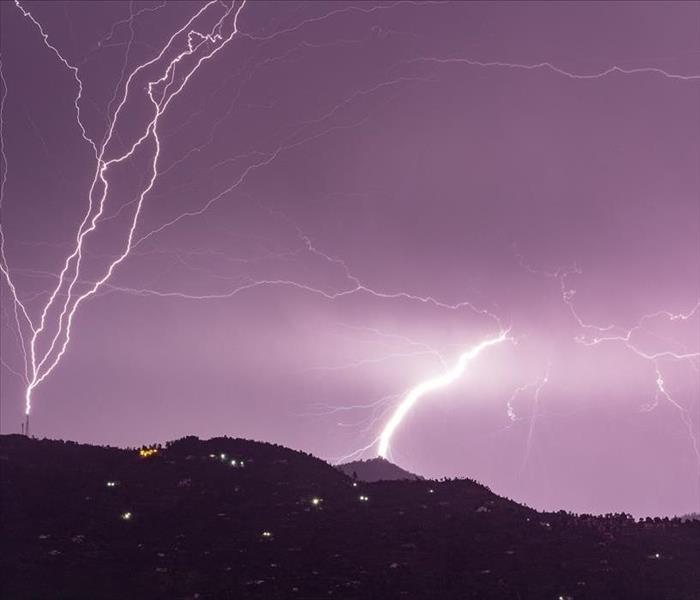 Lightning can cause serious property damage. If you need help repairing your home after lightning damage, contact SERVPRO of Troup-Coweta today.
Lightning can cause serious property damage. If you need help repairing your home after lightning damage, contact SERVPRO of Troup-Coweta today.
Though most rain fronts that pass through our area are no major event, severe weather is something that is entirely different. Severe weather can strike nearly any time of year if conditions are right, and with it, bring heavy rains, high winds, lightning strikes, hail and more—all of which can be rather dangerous.
Many of us are cognizant of the injuries and fatalities that lightning strikes in particular can cause. Around the world, they are responsible for 2,000 deaths each year and many more injuries. However, did you know that lightning can cause serious property damage, too? Below, we will be taking a look at why lightning strikes where it does and the types of damage to be aware of.
Why Does Lightning Strike Where it Does?
The majority of lightning strikes that occur during any given thunderstorm will be from one cloud to another as the electrical charge is transferred from area to area in a storm. However, with all this electricity in the air, lightning can also begin to target the ground, as objects such as buildings, trees and bushes send up sparks to meet it. While it is true that taller objects are more likely to be struck by lightning, it is not a guarantee—lightning will strike anywhere there is a charge, whether it be the ground, a tree or a home.
How Does Lightning Cause Damage?
When lightning strikes a building, it can cause serious property damage as a result. The main ways this can happen are:
* Damage due to fire where lightning strikes. When lightning strikes, it is incredibly hot—and therefore, this heat will be transferred to the impacted target. In many cases, this will cause immediate combustion at the site of the strike.
* Damage due to electrical fires. In addition to the threat that lightning can cause an initial fire where it strikes, it can also cause damage due to electrical fires. Because lightning carries an electric charge, it will travel through a building’s wires once it makes contact—this can cause damage to those wires and lead to an electrical fire, either immediately or later on.
* Water damage due to impact. Even if it does not start a fire, lightning will leave a hole where it strikes a home, which can lead to water damage if it is raining.
*If you have damage to your home, due to lightning or other storm-related causes, we are the team to call. We are here 24/7 to help—get in touch today.*
How Does Water Damage Lead to Mold?
3/14/2022 (Permalink)
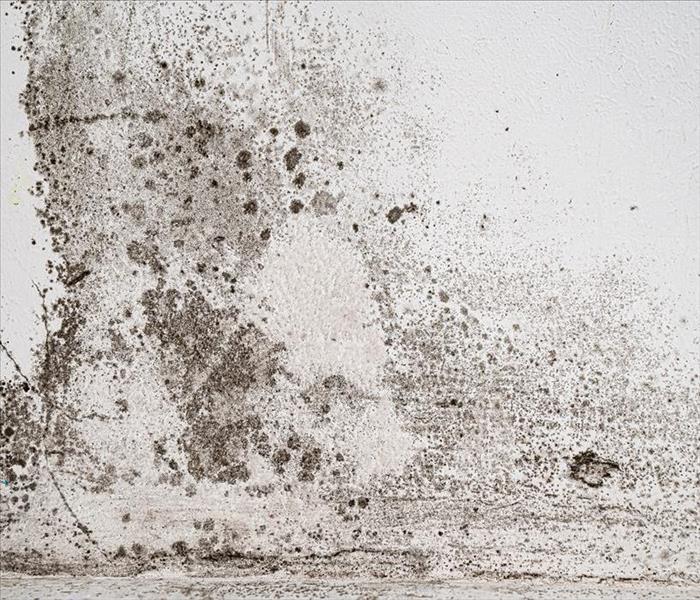 If mold invades your home, call SERVPRO of Troup-Coweta today!
If mold invades your home, call SERVPRO of Troup-Coweta today!
Water damage is something that no homeowner ever wants to experience, but unfortunately, it is a rather common occurrence. Between hidden leaks that can pop up in your plumbing system, water seepage in crawl spaces or surprise roofing issues, there are lots of ways that water damage can pop up in a home.
While water damage is an inconvenience, it can lead to an even more pressing concern: mold growth. Mold growth thrives in damp places, so any time water works its way into an area it should not be in, there is a high chance that mold will find its way there as well. Below, we will look at why mold and water damage are so closely related so you can be on the lookout for any signs of growth.
Why Water Damage Often Leads to Mold
**Mold loves humidity.** The nature of water damage can vary, but in incidents where there is flooding or general dampness in an affected area, the humidity levels can get rather high. Basements, laundry rooms and bathrooms can all turn into very humid areas, which can create the ideal environment for mold to take hold. Ideally, the humidity in an area should stay below
50% at all times in order to discourage mold growth.
**Mold spores need moisture to grow.** Many people are surprised to learn that mold spores are everywhere—in nature, mold aids with the decomposition of organic material, and its spores spread via the air. Therefore, mold spores are always floating around looking for an ideal place to land, which is how they wind up in homes (often after hitching a ride on clothes, shoes or pets). However, mold spores require moisture to grow, so while they may work their way into homes, if they cannot find an area with moisture that they can grow, they will not be able to
reproduce.
**Mold grows well in contaminated waters.** Oftentimes, water damage is caused by water that is not necessarily clean, such as rainwater or floodwater. Mold can grow especially well in these types of waters because of all the bacteria that is already present, making water damage of this type especially susceptible to mold growth.
*If you are curious about how mold remediation works, we are here to help. Contact us today to learn more about our remediation services or to report mold damages.*
Let’s Prepare Your Emergency Ready Plan Together
3/11/2022 (Permalink)
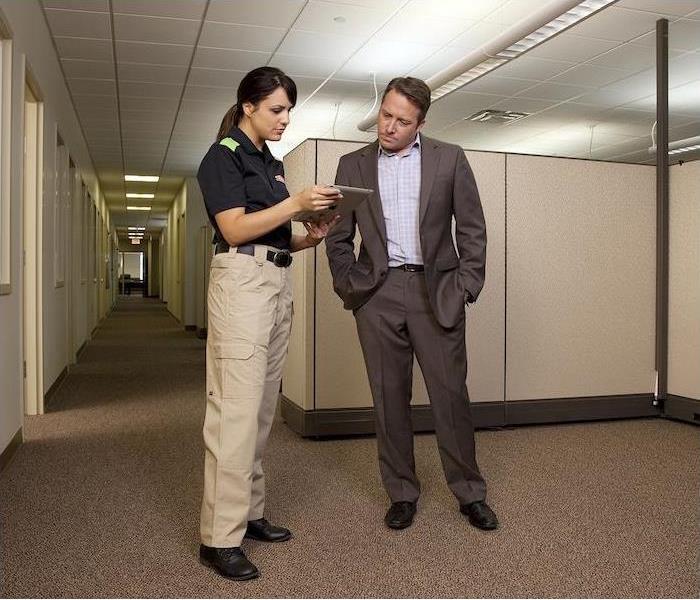 If the day comes where your business is hit with disaster or emergency, you can rest assured SERVPRO of Troup-Coweta will be there
If the day comes where your business is hit with disaster or emergency, you can rest assured SERVPRO of Troup-Coweta will be there
Being a business owner can seem easy—the idea of getting to pick your hours is ideal! But the reality is, you’re always on call, whether you are there or not, and you are responsible for things like employee relations, payables and safety!
Disasters or accidents can disrupt your business in only a matter of minutes. It’s actually scary to see that FEMA states 40% of small businesses will not reopen after a natural disaster, and a quarter of those that do reopen are forced to close their doors within a year.
That’s why it’s imperative to have a safety plan in place for your business. Three-quarters of all small businesses don’t have a plan in place, and now is the perfect time to make the change. We are here and ready to help you become better prepared.
We are always ready and proud to serve our local communities such as Roberta, Fort Valley, Byron and Zenith, along with so many others. Together we will work to get your Emergency Ready Plan started. Being locally owned and operated means we are all neighbors, and we will help our neighbors through the good and bad times.
When we work together, our goal is to help minimize downtime within your company, and help everyone understand what to do. We will carefully review and analyze your business needs to determine what you might need in the face of a disaster. From there, we’ll detail exactly what to do, including alternative locations to work from and data backup, so that you can react with confidence and not chaos.
Business owners have to worry about enough, and disaster planning is one thing that we can help take off your plate. Contact your local SERVPRO experts to help you prepare your Emergency Ready Plan. You can trust us to protect your business and employees!
When your business is ready to prioritize planning and safety to prevent extended downtime, contact SERVPRO to get the Emergency Ready Plan underway from the folks who know all there is to know about disaster and recovery.
What Types of Places Are Likely to Attract Mold Growth?
3/3/2022 (Permalink)
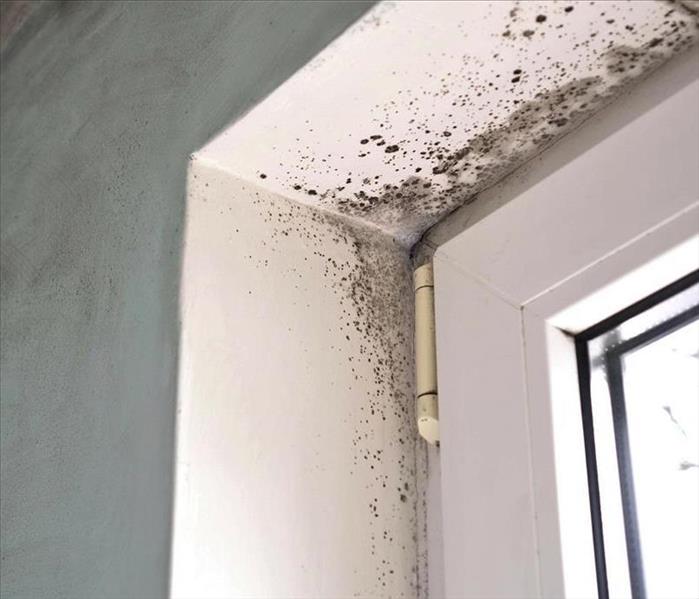 If mold invades your home, call SERVPRO of Troup-Coweta to evict it!
If mold invades your home, call SERVPRO of Troup-Coweta to evict it!
Mold growth can be a frightening thing for homeowners to deal with. It is an insidious and stubborn problem that can cause significant damages if not treated quickly and professionally by mold remediation experts—but how do you know if you are at risk of experiencing mold growth?
One of the only positives about mold is the extremely specific conditions that it needs to grow. Mold is only likely to be found in a few places where the environment is right for it to be able to take hold.
Below, we will be taking a look at what these places are so homeowners know exactly where to keep their eye out for these harmful spores. Preventing mold and treating it quickly when it does arise is the best way to stop the issue from getting out of hand.
The Places Where Mold Is Likely to Grow
**In bathrooms and laundry rooms.** Mold thrives in areas with high moisture content, so anywhere that experiences regular and high humidity—such as bathrooms and laundry rooms—is likely to be a haven for mold. Establishing consistent airflow and mitigating the humidity in these areas can go a long way in preventing mold from ever growing in these places.
**In basements and crawl spaces.** Basements and crawl spaces are often popular spots for mold to be discovered because of how ideal their conditions are. Not only is humidity typically high in these areas, but they are also often dark and may even experience water damage from ground seepage if they are not properly weatherproofed. Dank odors and condensation in these areas are often a sure sign that mold is likely to take hold.
**In areas that have experienced water damage.** Water damage is a serious issue for several reasons, including the fact that it is likely to give rise to mold growth if it is not treated properly. Whether the water damage is from a hidden leak in the plumbing system or a flooding issue, it is important that it be addressed quickly by water restoration professionals to completely remove the moisture and ensure that mold is not likely to become a lurking threat.
*If you are in need of mold remediation, water damage restoration or would simply like to learn more, we are here 24/7 to help. Contact us today to learn more about our services.*
How Can High Winds Cause Damage During a Storm
3/3/2022 (Permalink)
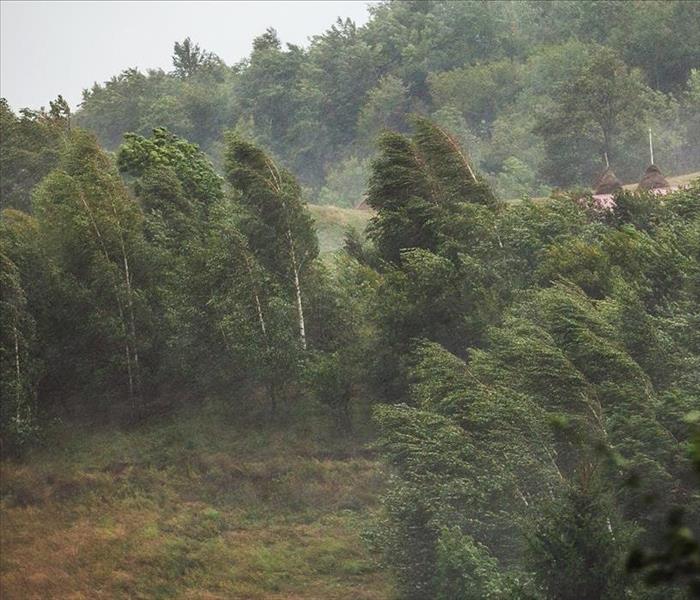 If your home has been damaged due to high winds, call SERVPRO of Troup-Coweta 24 hours a day. ??
If your home has been damaged due to high winds, call SERVPRO of Troup-Coweta 24 hours a day. ??
When it comes to severe weather, there are a lot of ways it can cause harm to an impacted area. More than 75% of deaths pertaining to natural hazards are a result of severe weather, and the property damages caused by storms can be far-reaching and severe. When most people consider severe weather hazards, heavy rains and lightning strikes are probably the first things that come to mind—but unfortunately, straight-line winds can also be significantly damaging to property and people.
Damaging straight-line winds are anything over 50–60 miles per hour, but gusts can reach up to 100 miles per hour if conditions are favorable. When thunderstorms are over an area, they will often cause downdrafts of wind that impact the ground below in several unfavorable ways, which we will look at below.
How Do High Winds Lead to Storm Damage?
**They can rip limbs from trees.** While trees grow to have a certain amount of flex to them in order to withstand the threat of high winds, occasionally, branches will still be ripped from the tree. This is especially true of branches that grow at an odd angle or are less than healthy, which is why trimming trees regularly is so important. When limbs are ripped from trees, they can become high-speed projectiles, crashing into any object or home that ends up in their path.
**They can topple mobile homes.** Because straight-line winds can reach up to 100 miles per hour, they can easily generate an extremely strong force—and in many cases, this can be enough to topple mobile homes or trailers. Even anchored mobile homes can be at risk if winds are strong enough, which puts the people who seek shelter in these homes at serious risk.
**They can make homes more susceptible to water damage.** High winds and water damage often go hand in hand, because winds can cause damage to homes that make them more susceptible to water damage. Projectiles carried on the wind can shatter windows, which will then let in rain. Additionally, high winds can damage roofing shingles, flashing and other exterior elements of the home designed to keep moisture out, resulting in hidden leaks that can be costly.
*If you have storm damage to your home, you can count on our team to help. Get in touch today to learn more about our restoration processes—we’re here 24/7 to help.*
What Conditions Are Right for Mold to Grow?
3/3/2022 (Permalink)
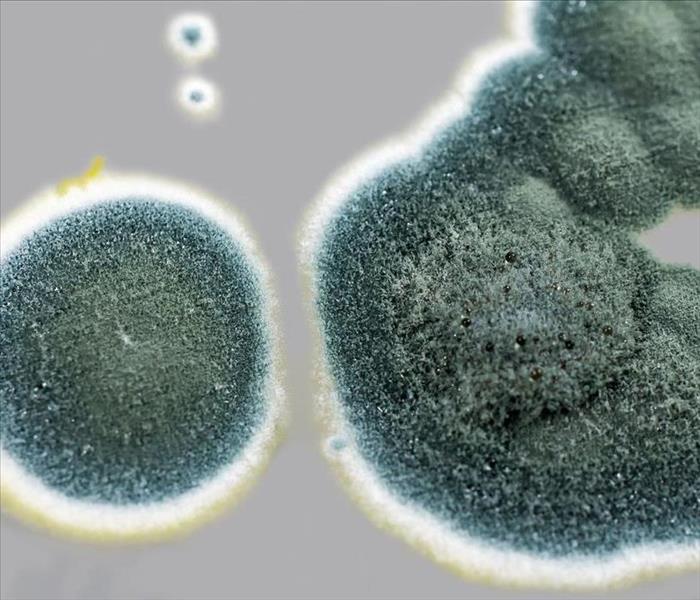 Mold can make you feel sick. Call SERVPRO of Troup-Coweta if you have mold in your home.
Mold can make you feel sick. Call SERVPRO of Troup-Coweta if you have mold in your home.
Mold growth is a complicated issue for homeowners to have to face. While mold can only grow if the conditions are right, there are many instances where this is the case—and once mold establishes itself, it is extremely difficult to fully get rid of it without professional help with the remediation process.
Fortunately, the conditions where mold is likely to grow can be abated in most instances. Because prevention is so important when it comes to mold management, today we will be looking at the conditions that are ideal for mold to grow and how they can be prevented.
The Conditions That Mold is Likely to Grow In
**Warm, humid conditions.** Mold requires moisture to grow, but it does not always have to be standing moisture that allows it to start its process. Humid areas, such as bathrooms, basements and laundry rooms, are prime candidates for mold growth in the home. When the air in an area becomes saturated with humidity, it can lead to high moisture throughout the room which can allow mold to become established.
**Poorly ventilated areas.** Mold spores are spread via the air, so when areas are poorly ventilated, it is much easier for mold to settle in one spot and begin to reproduce. This is doubly concerning as areas with poor air circulation are also typically areas with high humidity, which can create an even more ideal environment for mold spores to land in. Installing fans or other types of air flow system in areas without much ventilation is a great way to prevent mold.
**Any area with untreated moisture damage.** Mold will often establish itself around water damage, as it thrives on moisture. Any area that has a buildup of moisture is ripe for mold growth, which means hidden leaks are often first identified by the signs of mold around the area. This is why it is so important to have water damage abated quickly and professionally when it occurs, because the longer it is left untreated (or if it is untreated properly), the worse a mold problem is able to become.
*If you are in need of mold remediation or would like to learn more, we would love to help. Contact us today to learn more about our mold remediation services!*
Fire Safety & HVAC Maintenance
3/3/2022 (Permalink)
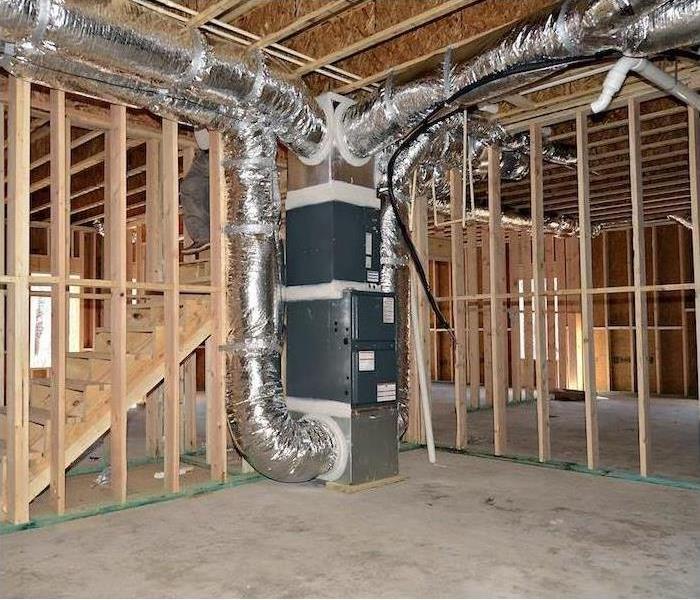 If fire should become a problem, contact the pros in green, SERVPRO of Troup-Coweta.
If fire should become a problem, contact the pros in green, SERVPRO of Troup-Coweta.
Being a responsible homeowner means taking care of the things that take care of you. Your HVAC system is always there, and there are few (if any) days per year in our area where you aren’t relying on it to keep your home comfortable. It often goes unappreciated—that is, until something goes south or stops working.
There are also some important fire safety concerns of which you need to remain aware, particularly as winter comes in and your HVAC switches to heating mode. Don’t let your source of comfort turn into a source of disaster.
Here’s what you need to do to make sure your HVAC system and furnace are running safely this fall and winter.
Routine Maintenance
Ideally, your HVAC system should be checked twice a year for any present or upcoming issues. A professional can see problems coming and head them off before any danger is presented.
Things like aging or fraying wiring can become fire hazards that are exacerbated by the extended use of HVAC systems during less pleasant times of the year.
Duct System Circulation
Overworked heating systems are dangerous heating systems, and one thing that can quickly cause your system to work too hard is allowing your ductwork to become or remain clogged. Poor circulation or ventilation can cause your furnace to overheat.
It’s recommended that you have your duct work cleaned every three to five years, and we can help with that.
Declutter Your Furnace Area
If your furnace is located in a designated area, or it’s in the corner of a basement or garage, make sure the two-foot radius around it is clear of clutter. Radiating heat (and certainly direct contact) from the furnace can cause flammable materials to ignite. Resist the urge to use your furnace area for storage.
Install Carbon Monoxide Detectors
If your furnace is gas-powered, carbon monoxide detectors can be as important for you as smoke alarms. The gas in your furnace is odorless, and you may not notice a leak until it’s too late. A detector can give you the assurance that things are running smoothly.
In addition to your regular fall maintenance, make sure to have your heating unit examined to give yourself a comfortable, fire-safe fall and winter season.
If fire should become a problem at home, we can help you with restoration and recovery. Contact SERVPRO to get the pros in green working for you right away.
The Dangers That Occur When Severe Weather Strikes
3/2/2022 (Permalink)
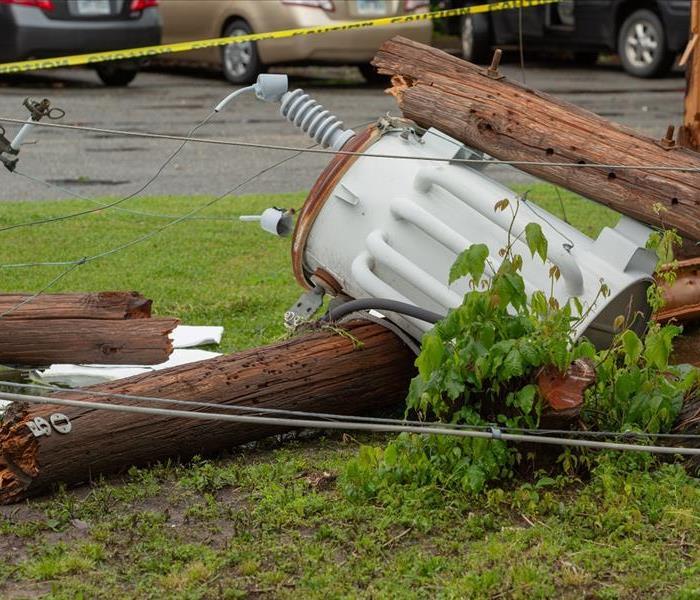 If your home is damaged from flash floods, lightning, or hail call SERVPRO of Troup-Coweta 24 hours a day!
If your home is damaged from flash floods, lightning, or hail call SERVPRO of Troup-Coweta 24 hours a day!
More than simply being an inconvenience, severe weather can cause serious damage in a variety of ways. In addition to being dangerous enough to cause personal injury to anyone who has not sought out adequate shelter, severe weather can also cause property damage to any homes or businesses in the line of the storm.
While severe weather can often move through an area without causing much damage, any time it is a possibility, it is wise to be vigilant so you know when to seek safe shelter to protect your family. Below, we will be taking a look at the types of hazards that happen during severe weather so you can be better prepared for their occurrence.
The Types of Hazards That Occur During Severe Weather
**Flash flooding threats.** Flash flooding is a serious problem, in part because it is quite unpredictable—hence the term “flash.” Flash flooding is more common in low-lying areas, but it can happen anywhere that receives a heavy amount of rainfall in a short period of time. Rapidly rising creeks and ponds are often sources of flash flooding, but even overwhelmed storm drains can become backed-up and impact an area.
**Fire hazards from lightning strikes.** Lightning strikes can occur any time there is a thunderstorm, and they are responsible for around 2,000 deaths per year throughout the world. In addition to being dangerous for anyone caught outside, lightning strikes can also introduce serious fire risks when they strike homes. Lightning can start a fire when it hits a home, due to the intense amount of heat it transfers, but it can also cause electrical fires as it travels through (and damages) a home’s wires on its way to seeking grounding.
**Damage due to high winds and hail.** Severe weather is often accompanied by high, straight-line winds up to 100 miles per hour—which as you can imagine, can cause serious damage. High winds can break off tree branches and turn them into projectiles, which can shatter windows, damage roofs and make homes susceptible to water damage as a result of being vulnerable to heavy rains.
*If severe weather strikes your home, you can depend on us to help. We have a team of storm restoration experts on hand 24/7—contact us today to learn more.*
Whatever the Disaster, We’re Here to Help Your Business
2/23/2022 (Permalink)
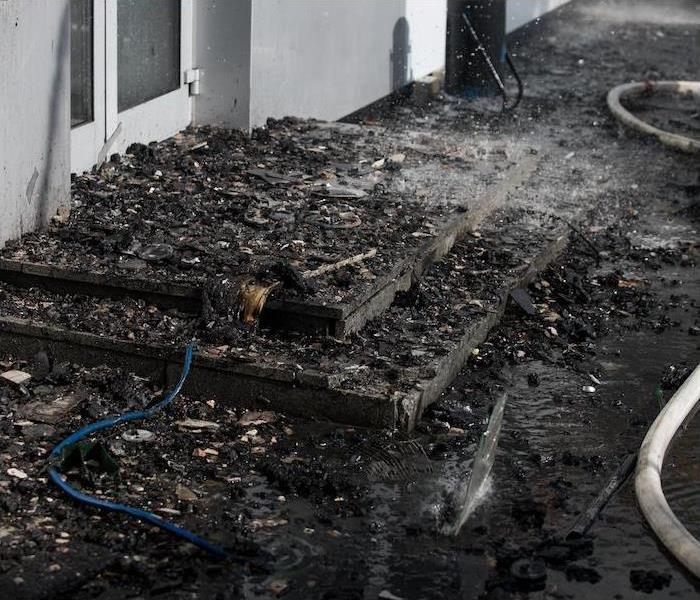 No matter what causes the damage, we can handle it. SERVPRO of Troup-Coweta are your local restoration experts.
No matter what causes the damage, we can handle it. SERVPRO of Troup-Coweta are your local restoration experts.
Even on a normal day, it’s difficult to operate a business. With so many competing demands for your time and attention, it’s easy to see why managing or owning a business might be a little stressful.
Consequently, if something were to interrupt business like damage from a natural disaster, you might need some experts to step in and lend a hand.
SERVPRO is the industry leader when it comes to commercial disaster cleaning, recovery and restoration. Our goal is to help you get back on your feet after a crisis by handling the cleanup and restoration process so you can continue to focus on what you need to do to keep your business going.
No matter what causes the damage, we can handle it:
Smoke and fire damage. The NFPA estimates that U.S. fire departments respond to an average of 3,340 fires in office properties per year that cost an annual average of over $110 million in property damage. We can take care of everything from the demolition and reconstruction of your building to the elimination of smoke odors.
Water damage. Damage caused by water seeping inside the building from any number of things, such as a storm, leaky roof, broken pipes, an overflowing water heater and other unanticipated problems, can cause issues from carpets getting saturated to drywall getting destroyed and even structural integrity potentially becoming compromised. No matter what happens, we’ll get you back up and running quickly and thoroughly.
Weather-related disaster damage. Natural disasters affect one out of every three businesses, and many of them are not prepared. One way to be prepared is to know what to do between disaster and the completion of your restoration. We can set your business up with a SERVPRO Emergency Ready Plan, which will help you know exactly what to do if disaster should strike.
Regardless of the nature or severity of your needs, we can assist you in getting back to business as quickly as possible.
Contact SERVPRO of Troup-Coweta Counties when you’re ready to have the best in disaster cleaning and recovery on your side. We’re here to assist you in preparing for or recovering from a catastrophe.
Have a Strong Commercial Fire Safety System
2/18/2022 (Permalink)
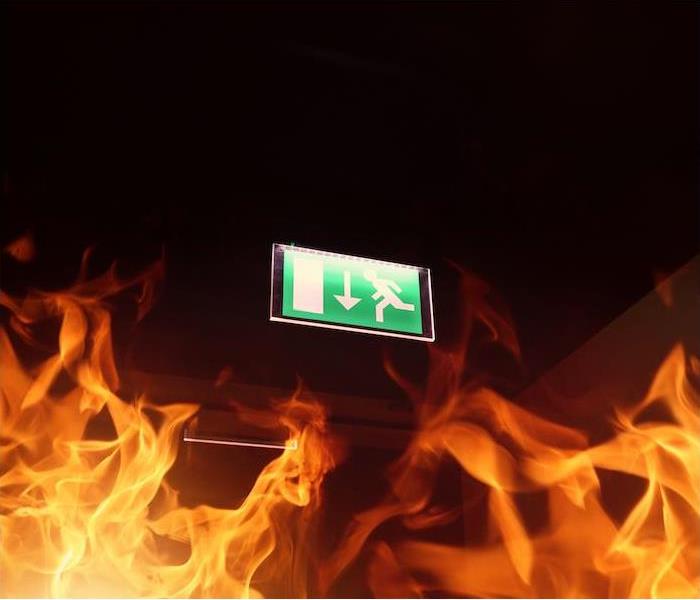 A fire can happen to any business. If your workplace experiences any damage from fire, contact SERVPRO of Troup-Coweta.
A fire can happen to any business. If your workplace experiences any damage from fire, contact SERVPRO of Troup-Coweta.
Fires can cause serious damage and inconvenience to businesses. Ensuring that you are prepared for a fire before it happens will protect your employees and your facility.
With these four critical components, you can construct a solid fire safety system that will help curb a fire if one happens to spark up at your workplace.
Smoke and Fire Alarms
When it comes to fire safety in the workplace, the first and most important line of defense is a working fire and smoke alarm system. Everyone is alerted when the fire alarm goes off, indicating that there is a possible threat and that an emergency evacuation is required.
Fire Extinguishers
Fire extinguishers are really only helpful for small fires, but knowing how to use one could prevent extreme damage to your facility. When using fire extinguishers, you and your employees should use OSHA’s “PASS” system:
P—Pull the pin on the extinguisher
A—Aim at the base of the fire
S—Squeeze the handle
S—Sweep at the fire, and move side to side
Sprinkler System
The usage of a sprinkler system is important as well. Sprinkler systems can be programmed to activate when the temperature reaches a specific level and can douse even very large flames.
You’ll likely need a professional inspector to provide regular inspections to ensure sprinkler and standpipe systems are properly maintained and running. As with any emergency equipment that is not used every day, ensuring it is in working condition regularly is essential.
Emergency Lighting and Signage
Conditions may be hectic and confusing during a fire. The building’s electrical power also often goes out. It might be difficult to see or navigate the building due to power outage, sprinklers going off, as well as smoke in the air.
People are more likely to be able to see well enough to leave the building and find safety if the facility is equipped with backup emergency lights that turn on automatically, along with lighted exit signs.
A fire can happen to any business. If your workplace happens to be affected, SERVPRO of Troup-Coweta has expert fire restoration professionals who can assist you immediately.
The 2 Most Common Causes of Commercial Water Damage
2/18/2022 (Permalink)
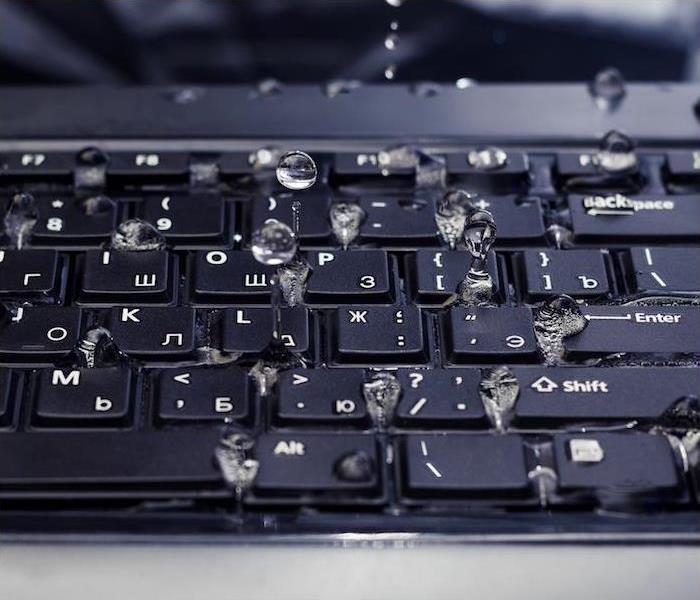 Water damage doesn’t wait for a convenient time to cause problems. SERVPRO of Troup-Coweta are ready 24 hours a day.
Water damage doesn’t wait for a convenient time to cause problems. SERVPRO of Troup-Coweta are ready 24 hours a day.
When you’re running a business, it’s easy to let a few things slip your mind. Perhaps checking your facility for water damage is one of those tasks. Water damage can sneak in quietly, but can pack a big punch if it isn’t found and treated quickly.
Water damage can cause expensive losses for business. Thankfully, it’s not impossible to find and address water damage early on, before it gets to be a major issue.
There are a lot of ways water can creep into your facility, but these two are the most common:
Leaks in the plumbing system. A pipe breaks, an appliance hose ruptures or if your facility has a fire, the suppression sprinkler system turns on and drenches your facility in water.
Pipes may also unexpectedly leak during freezing conditions due to frozen water. Burst pipes are sometimes difficult to detect since they are not as visible from the surface and may not always result in obvious puddles of standing water.
Water stains near piping areas or the development of musty odors are evidence of plumbing leaks. You might notice the stains on the ceiling, running down the walls or on your floors.
Roof leaks. Leaky roofs are often the result of severe rainfall combined with insufficient or incorrect roof drainage. Excessive rainfall, such as that seen during natural disasters, may often result in widespread damage when it leaks inside.
This sort of damage has the potential to develop further if it goes unnoticed with fewer people in the facility, like overnight or on a weekend. Roof damage may also result in secondary damage such as unsightly mold development, if left unattended for an extended period of time.
Commercial property insurance typically provides coverage for unforeseen pipe bursts, malfunctioning appliances and sprinkler system water damage caused by a property fire. Insurance also often includes coverage for damage to major equipment, which is crucial in the event of roof water leaks.
Water damage doesn’t wait for convenient times to cause problems, and we don’t wait for convenient times to respond. If water damage creeps up at your commercial property, SERVPRO is ready 24 hours a day and seven days a week to help.
SERVPRO Gives You a Seamless Recovery Process
2/16/2022 (Permalink)
 We’ve got the tools and technology to handle any job. Contact SERVPRO of Troup-Coweta to learn more.
We’ve got the tools and technology to handle any job. Contact SERVPRO of Troup-Coweta to learn more.
Doesn’t a cake sound delicious? If it didn’t before the beginning of that sentence, it probably does now.
So let’s bake one from scratch. Ready? First, we’ll go to the local poultry farmer to get some eggs, then the dairy farm for milk. Then we’ll head over to the mill for flour (unless you want to mill it at home for authenticity, and…sugar from the cane fields, maybe?
Yeah, you could go to those extreme lengths to get all your ingredients. But it’s the 21st century, and at this point most of us are looking to find one place we can go to get all the things we need for a cake, or whatever other confectionary delight you may have in mind.
Most of our shopping isn’t modular anymore, because part of what makes a great business great is that it offers a level of convenience that makes it easy to use and often decreases the buyer’s cost.
One of the many great things about being your local SERVPRO is that we can provide you with a single place to take care of every element of restoration after a disaster. Whether the nature of your damage is from water, fire, natural disaster or anything in between, we can get your home fully back to tip-top shape from beginning to end.
Need carpet dried and cleaned? We’ve got you. Drywall burned up in a fire? We can replace it, finish it, and even paint it. (You know we started as a painting business, right?)
Everything from reframing and construction to the tiniest finishing touches—we can make it happen, and you don’t have to worry about the process dragging on because multiple companies and sets of contractors have to wait on each other, communicate poorly, undo, redo and haggle with your insurance agent. From step one to done, SERVPRO has it under control.
We’ll even talk to your insurance company to simplify that process, too.
So when a heavy storm rips through the house, an unexpected flood fills your basement with water, or an electrical fire eats up your hallway, don’t call five companies—call one.
Did you hear the oven ding? Cake’s ready.
For an A to Z cleanup, recovery and restoration solution, you don’t have to worry. Your local SERVPRO has all the tools and teams necessary to finish your project, no matter how complex.
Trust SERVPRO for Your Remodel
2/9/2022 (Permalink)
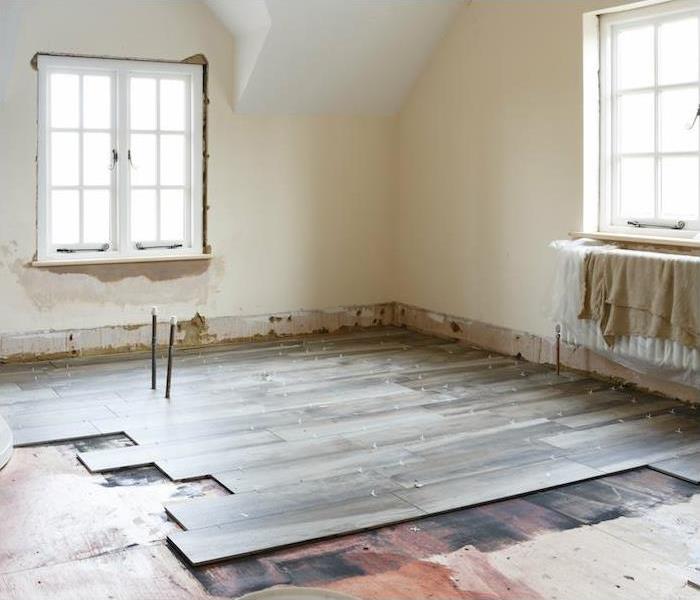 When you call SERVPRO of Troup-Coweta, rest assured you’re getting in touch with the best restoration team in the business.
When you call SERVPRO of Troup-Coweta, rest assured you’re getting in touch with the best restoration team in the business.
We talk a lot around here about recovery, damage from storms and fires, that sort of thing—and we should. A great deal of what we do revolves around helping families and business owners who are struck by sudden situations and find themselves in need of a trustworthy service company to help them restore their damaged homes and business.
That’s a role we’re proud to fill for millions of customers nationwide, and it’s gained us the industry-leader reputation we’re honored to have earned.
But it doesn’t take a tornado for you to take advantage of SERVPRO’s expertise.
Our highly trained construction teams can help you beautify, add on or remodel your home for no other reason than it being something you want to do. No disaster required.
Recent studies show that as many as 90% of homeowners plan on remodeling their homes at some point, and almost four out of 10 plan on doing it in the next year. If you’re one of these millions of homeowners, call SERVPRO of Troup-Coweta when you’re ready to make it happen, and you can trust the same expert teams who rebuild countless homes after disasters to give your kitchen, basement or whole home the facelift you’ve always dreamed about.
We cover the whole process, top to bottom—from inspection and gathering estimates, to mitigating any hazards or other difficulties that may hinder or interrupt the process, to full-service rebuilding and construction.
We can even go the extra mile and help you with dust control, contaminant protection and more with our premium services and EPA-registered preventive healthcare solutions.
You’ll love your new remodel, and you’ll love how easy the process is when you can trust one team to get your work done, instead of a rotation of multiple repair crews slowing down the job and struggling to communicate with each other.
You don’t have to wait for a flood, fire or natural disaster to take care of the expert construction services SERVPRO offers. We can help you build, rebuild or remodel your home and get the dream look you’ve always wanted.
If a remodel is in your future, you owe it to yourself to check with SERVPRO and get a quote. Call us today and get a local team of experts invested in your project.
Whatever Your Restoration Need, We’ve Got You Covered
2/4/2022 (Permalink)
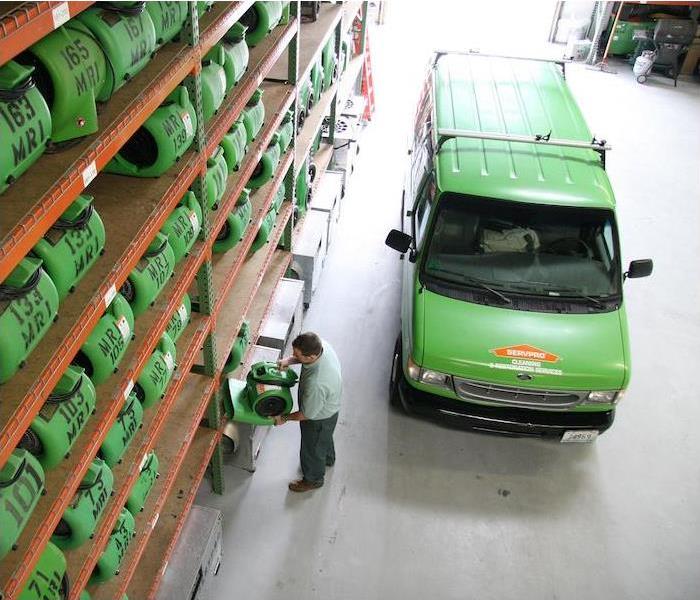 When you need cleanup and recovery of any kind, you can trust SERVPRO of Troup-Coweta to get the job done.
When you need cleanup and recovery of any kind, you can trust SERVPRO of Troup-Coweta to get the job done.
If you pass by a home or business that is up in flames, your heart truly goes out to those people. But when you see that green SERVPRO truck pull up, you know they are being well-taken care of.
At SERVPRO, we provide full-service cleaning, restoration and reconstruction services. So we will fix or clean things from top to bottom, and we will do it in a timely and efficient way.
Here’s a breakdown of SERVPRO services you can benefit from:
Water damage recovery. Whether you have encountered a flash flood that made its way into your home or you had a pipe that has busted, you can be certain that we will take care of you. When it comes to water, it doesn’t take much to do damage, and that’s why you should call us.
Fire damage recovery. A fire is reported every 23 seconds here in the United States. Fires, and the things used to put them out, can do a lot of damage, which requires lots of cleanup. That’s why we bring out all the help we can get.
Mold removal. Mold damage can creep up on you without you ever seeing it and can threaten the structure of your home. Once it’s established in your home or business, mold can spread quickly and easily, so call in the pros.
Storm recovery. Storms of any kind can cause damage, and no matter the size of damage it causes, you can count on us to help you restore your home or business.
Commercial needs. If you’re a business owner, have peace of mind in knowing we offer you all the same services we offer homeowners, plus a few extra!
General cleaning. Cleaning can be a headache for some, but for us here at SERVPRO, it’s pretty simple. We will provide your home or business cleaning services, including carpet or curtain cleaning and more.
Specialty cleaning. Sometimes you have cleaning needs that go beyond the basics. If you need specialized services such as document restoration or biohazard cleanup, we’re here to help.
Construction. Sometimes, damage can be severe and restoring your place is out of the question. The good news is you don’t have to find another company to help you—SERVPRO can reconstruct your home or business and get it looking “Like It Never Even Happened.”
Add 24-hour service and an easy insurance process to all this, and the picture becomes clear—when you need cleanup and recovery of any kind, you can trust SERVPRO to get the job done.
SERVPRO Has the Expertise to Handle Your Cleanup and Recovery
2/4/2022 (Permalink)
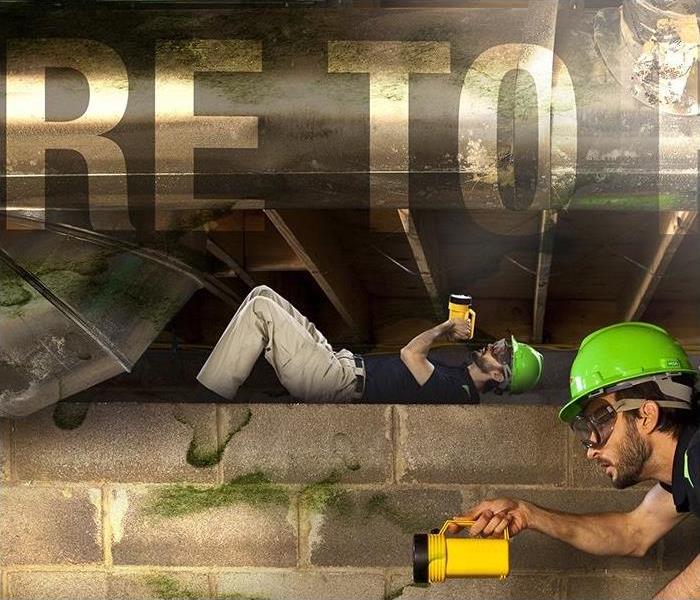 When you need cleanup and recovery of any kind, SERVPRO of Troup-Coweta has your back.
When you need cleanup and recovery of any kind, SERVPRO of Troup-Coweta has your back.
Have you heard of the 10,000 Hour Rule? It’s an idea popularized by author Malcom Gladwell that says, essentially, it takes 10,000 hours to master one’s craft and become an expert.
Noted achievers like Bill Gates in the tech world and Alex Rodriguez in sports and entrepreneurship subscribe to the idea that it takes concerted effort over a long period to be able to truly call yourself one of the best in a given field.
If the 10,000 hour rule holds true, then you can only imagine the level of expertise you can expect when you call your local SERVPRO to help you after a disaster in your home or business. Think about it—1,800 SERVPRO teams nationwide, doing business over the span of a half-century? We tried to do the actual math, but it just made us go cross-eyed.
The point is that when you call SERVPRO, you can be absolutely certain that you’re calling a reputable team of true experts, highly trained and heavily equipped for any home recovery need you may have.
Every SERVPRO franchise owner goes through complete training at the SERVPRO National Training Center, and every team member sits under them to extend that knowledge. We actually have a training house that we flood, set on fire and otherwise destroy, so that our teams can learn firsthand the latest techniques for restoring and repairing damaged homes, furnishings and more.
Expertise matters. And in an age where anyone can get on social media and crown themselves an expert, having a proven track record is what can set one service apart—and nobody has the track record of SERVPRO. For more than 50 years, we’ve satisfied literal millions of home and business owners with quality service and outstanding care.
When you call SERVPRO of Troup-Coweta, you can rest assured you’re getting in touch with teams that know what they’re doing because they’ve been doing it for a lot of people, for a very long time. We’ve put in our 10,000 hours as a company many times over.
When you need thorough, expert home cleaning or restoration, you know who to trust. Contact SERVPRO when disaster strikes, and let the pros handle it.
A Fire Safety Checklist for Your Household
2/3/2022 (Permalink)
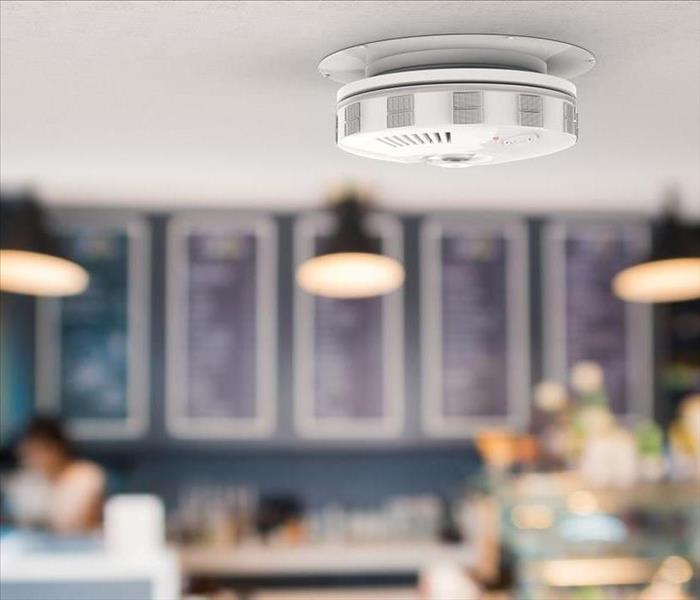 SERVPRO of Troup-Coweta is on standby to help you create your Emergency Ready Plan.
SERVPRO of Troup-Coweta is on standby to help you create your Emergency Ready Plan.
It is important for any household to practice fire safety as a regular part of their routine. House fires can be both devastating and dangerous, and on average, those in the household will have less than three minutes to escape should a fire begin.
Fortunately, by being vigilant about the prevention of house fires, you can reduce the likelihood of you ever having to experience one. While there is no way to completely eradicate your risk, there are plenty of steps you can take to make your home less susceptible to accidental fires breaking out.
A Checklist for Household Fire Safety
Practicing fire safety is a great way to reduce your risk of experiencing a fire at your home. By referencing this simple checklist, you can be sure you are taking necessary precautions to keep your household safe.
**Smoke Alarms**
* Ensure that you have smoke alarms on each level of the home and in every sleeping area.
* Test smoke alarms each month and replace batteries as needed.
* Note the install date for all alarms and replace after 10 years, even if they are still operational.
**Cooking Safety**
* Be sure to never leave the stove or oven on unattended.
* Keep flammable items, such as towels and wooden utensils, three feet from the stove.
* Store a fire extinguisher prominently in the kitchen.
* Understand the difference between grease fires and other types of fires, and know the methods for extinguishing each.
**General Safety**
* Be sure your household has a fire escape plan that you practice at least twice per year.
* Ensure that every area of your home has at least two exits.
* Store any flammable chemicals in accordance with their label recommendations.
* Keep matches, lighters and other flammable objects away from young children.
* Do not leave candles lit if they are unattended.
* Keep anything flammable at least three feet away from candles, space heaters or other sources of heat.
**Electrical Safety**
* Never overload electrical outlets or extension cords.
* Replace any frayed cords or wires immediately.
* Plug appliances and any heat-generating items directly into the wall, not into extension cords.
* If wall outlets ever feel warm to the touch, stop using them immediately and call an electrician.
*If you have damage from a fire, you can count on us to help. We are here 24/7 for restoration—contact us today to learn more about our processes.*
So You’ve Got a Sewage Backup
2/2/2022 (Permalink)
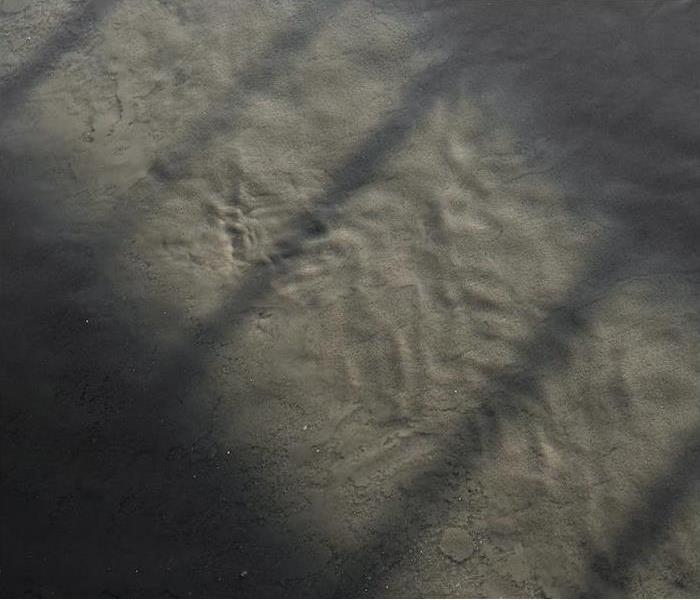 Sewage backup can be a serious problem, reach out SERVPRO of Troup-Coweta to learn more.
Sewage backup can be a serious problem, reach out SERVPRO of Troup-Coweta to learn more.
Water damage can be rough stuff in any form. Burst pipes, flooding and appliance issues all create difficult situations in their own right. But a sewage backup can be an entirely other level of both nastiness and danger.
Sewer problems can be the result of civil sewer systems that have aged past their primes, tree roots growing into sewer lines or blockages of a sanitary sewer main. Regardless of the cause, however, one thing is clear (or literally probably not clear at all)—sewer backups introduce toxins into your home, and they leave a difficult cleanup job in their wake.
When you find yourself faced with sewer damage, here are some things you should do immediately upon discovering the damage to ensure your safety and get things under control until your local SERVPRO team arrives.
Evacuate anyone vulnerable from the area. This includes seniors, children, even pets—anyone who may suffer more readily from the toxins sewage can introduce into your home’s atmosphere. Keep them safely away from the backup area until restoration is complete.
Shut off your main water supply and electricity if it’s safe to do so. If you can get to your power panel and water main safely, use them to stop the flow of water and decrease the odds of your water backup causing an electrical fire. Don’t do this if your electrical panel is under water, or if you would have to stand in water to turn it off. If you can’t safely shut off your own power and water, call your utility companies and have them do it.
Open windows in the affected area to encourage ventilation and get some fresh air flowing in.
Document your situation and take lots of photos for your insurance company. Be sure to include any items that have sustained damage, as these will be important for your insurance claim process.
Add a little bleach to standing water, if you can do so safely, so that the chlorine in it can do some disinfecting work and prevent the spread of bacteria. Don’t touch stained or affected areas, and don’t come in contact with what could be very dangerous water.
Don’t forget to call SERVPRO. We’ll be there quickly, get things cleaned and managed thoroughly, and we can work with your insurance company on your behalf.
Regardless of the cause of your sewage problem, SERVPRO has the tools and techniques to make it “Like it never even happened.”
Sewage backup is a serious problem, but we can take care of it and restore your home after the damage. Contact SERVPRO anytime to get the pros on your side.
Why SERVPRO Should Be Your Top Choice for Water Damage Restoration
2/2/2022 (Permalink)
 Water damage is never expected, but SERVPRO of Troup-Coweta is ready to jump into action. Contact us Today!
Water damage is never expected, but SERVPRO of Troup-Coweta is ready to jump into action. Contact us Today!
Having water damage your home is something that can feel extremely overwhelming. Whether you have a leak, a flood or other type of water-related issue, water damage can be disruptive to your life and your routine. And if you are unsure of how to handle it, it can be more disruptive than you imagine.
No matter where you live, it is important to understand your risk for flooding and other types of water damage—especially because one in 10 properties in the United States are at risk for flooding—so you can plan ahead for it. Water damage can come about suddenly, but having a plan in place for who to call can help you handle it quickly and efficiently.
Why to Choose SERVPRO for Water Restoration at Your Home
**We respond quickly to your call.** Water damage is not something that you want to leave unattended for any length of time. Mold and mildew growth can start quite quickly after water damage, but the faster it is addressed, the less likely this is to be an issue. With our 24/7 emergency line, you can be confident that you can get in touch with us whenever you need us.
**We understand the intricacies of water damage.** Water damage is rarely a simple issue, and oftentimes, it is a rather complex one. Water can seep into many places that are not supposed to be wet, and when these areas are hidden, it is impossible to know the scope of the issue. Because we understand the intricacies of water damage, we monitor impacted areas to find any areas with hidden moisture to make sure any water damage is fully addressed.
**We have a national backup plan.** If there is a widespread issue that causes water damage, such as flooding, resources in the local area can be spread quite thin. We combat this issue by having the backing of our national brand—because there are SERVPRO locations across the nation, we can scale up resources, equipment and technicians as needed, so you can expect the same level of service even when there is an extreme need.
*If you need assistance with water damage in your household, you can count on us to be there for you. Get in touch with us at any time to learn more about our water restoration process.
Fires on Construction and Renovation Sites
2/2/2022 (Permalink)
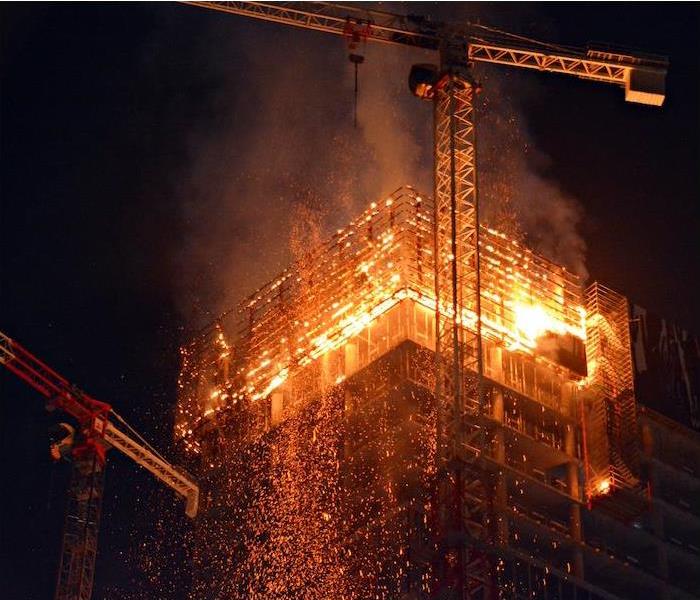 If your construction project should be hindered by an unfortunate fire, contact SERVPRO of Troup-Coweta.
If your construction project should be hindered by an unfortunate fire, contact SERVPRO of Troup-Coweta.
A 2020 report by the National Fire Protection Association gives us insight into the most common fire dangers of unfinished properties. Some of these properties are in the construction phase, and some are undergoing major renovations. The published results are the culmination of a five-year study, looking at fires of this nature from 2013–2017.
These details serve to encourage adoption and adherence to NFPA standards and codes while building and renovating, in order to avoid the added cost and time of dealing with fires as a result of code violations.
The top three causes of construction and renovation fires are in a virtual tie for occurrence percentage, though their resulting damage varies. Electrical failure or malfunction causes 15% of construction fires, while another 14% each come from abandoned or discarded materials and heat sources too close to combustible materials.
Electrical malfunction also causes 16% of civilian injuries in these types of fires, while discarded material and combustion from heat sources cause 6% and 19%, respectively. Also of note is that fires caused by heat sources being too near to combustibles causes almost one fifth of all direct property damage from construction fires.
There are a few other causes of significance, though none with quite the impact of the top three. These include welding and cutting in close proximity to flammable materials or objects, unattended equipment, failure to properly clean work areas and various misuses of materials. The combination of these add up to 26% of construction fires and 27% of civilian injuries, but only 11% of property damage from fires on construction sites.
Adherence to fire codes and proper methodologies could prevent most of these unfortunate fires, and while it’s not always the most convenient way to do this, following these well-researched, thoughtfully crafted prevention codes is the safest way to manage any construction or renovation project.
Considering fire agencies respond to more than 6,000 construction fires alone each year, this report shows us that we’ve still got some ground to make up when it comes to proper fire safety methods.
If your construction project should be hindered by an unfortunate fire, we’re here to help, regardless of the cause. Contact SERVPRO of Troup-Coweta Counties to find out how we can help you get back on track.
Breaking Down the Fire Tetrahedron
2/2/2022 (Permalink)
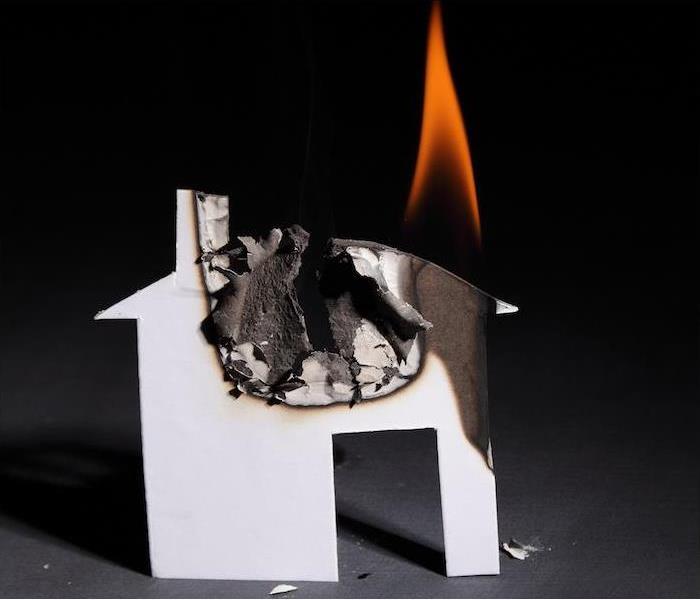 If your home or business has any damage, SERVPRO of Troup-Coweta is ready around the clock to help you recover.
If your home or business has any damage, SERVPRO of Troup-Coweta is ready around the clock to help you recover.
First things first, do you know the definition of a tetrahedron? To cut down on time, let us explain…it’s a three-dimensional, triangular shape with four equal sides.
Now that you know the basics of the geometric shape, let’s discuss what a fire tetrahedron is.
Basically, it’s a way of acknowledging that there are four components needed for fire to start—or four “sides” to the equation. If one of the sides is removed, the structure can’t stand and the fire can’t start.
The 4 Things a Fire Needs to LiveFuel. Fire, like people, needs fuel to keep going. It can be organic or inorganic, but there has to be some source of fuel for a fire to start, such as wood or plastic.
Heat. The amount of heat needed to start a fire varies from substance to substance. But you must have enough heat to cause combustion. Every object has a set point at which it will combust, melting or igniting.
Oxygen. Fire reacts with oxygen to produce a series of chemical reactions. In short, oxygen feeds the fire so that it can keep growing and generates products of combustion in the process.
Chemical Chain Reaction. The cycle of heat, fuel and oxygen combine to produce a chain reaction. This will perpetuate a fire as long as the chain reaction is undisturbed.
The 4 Ways to Stop a FireCool it. This is the most common method for extinguishing a fire, and the most common form of cooling is the application of water. Eventually, when dousing the flames with water, they reach a temperature below what’s needed to sustain a fire.
Smother it. If a fire doesn’t have access to oxygen, then it can’t live. To smother it, you must deprive it of oxygen. This can be a simple task like snuffing a candle, or it can be a little more difficult because it might need chemicals introduced.
Starve it. When a fire burns with no outside interference, it will likely burn until it runs out of adequate fuel. To be proactive, you should remove the fuel source while the fire is still trying to consume it.
Interrupt the chain reaction. Chemical agents can effectively disrupt a chain reaction and put a fire out. One chemical agent that is very effective is halon, but it has an elevated potential for ozone depletion, making it an environmental threat.
If the fire tetrahedron makes a wreck of your home or business, we’re ready around the clock to help you recover. Contact SERVPRO anytime for fast, thorough cleanup and recovery after a fire.
The So-Called 100-Year Flood
2/2/2022 (Permalink)
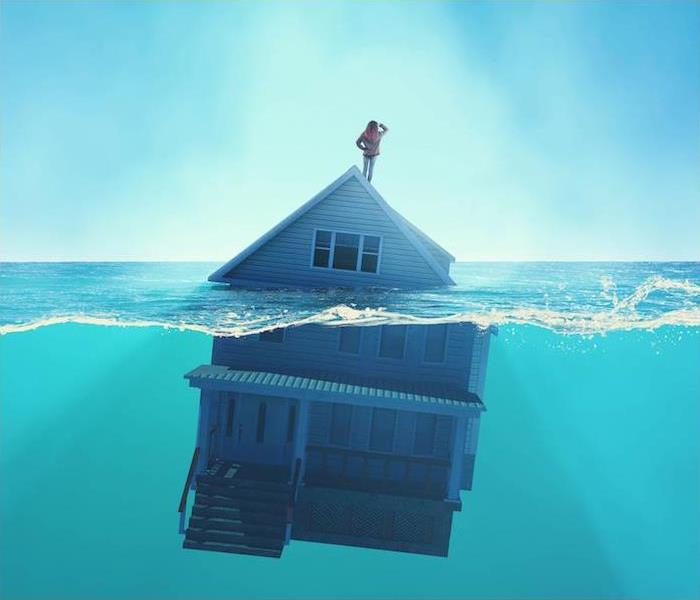 If flooding or other water damage cause trouble for your home or business, contact SERVPRO of Troup-Coweta.
If flooding or other water damage cause trouble for your home or business, contact SERVPRO of Troup-Coweta.
Flood probability is based on a number of factors, and scientists and engineers use a specific set of criteria to determine the likelihood that rivers may flood in heavy storms. Flooding can happen wherever it rains, and it can cause troubles like 2019’s sudden troubles in Conyers; but there’s a certain term on which much of our flood conversation hinges: the “100-year flood.”
It’s a rather foreboding term, one that definitely makes the listener aware that it’s something to be concerned about. But what exactly is it? Is it a general term, or are there actually 100-year floods we can measure and predict?
First, a 100-year flood is a very real, scientific measurement, as opposed to a general declaration like, say, a gullywasher or deluge. Without getting overly technical, a 100-year flood is, in theory anyway, a flood that statistically should only occur about once every 100 years.
In other words, based on data from nearby rivers, bodies of water, elevation levels and other factors, a 100-year flood is a flood that has a 1% chance of occurring in any given year.
This kind of flood is also known as a 1% Annual Exceedance Probability (AEP) flood.
So, does a 100-year flood only occur every hundred years? Well, yes and no. While the average space between them typically does meet that criteria, that doesn’t preclude the possibility of two 1% floods happening in back-to-back decades, years, or even months.
Flooding is unpredictable, but statistically speaking, the 100-year or 1% designation gives us a baseline for estimating the frequency and severity of a certain kind of flood.
Why does all this matter? Well, for one thing, aside from giving us a sense of how bad a flood was or could be, and how likely it may be to occur again, the 1% AEP flood is the basis for the National Flood Insurance Program, which, among other things, requires homeowners within high-risk flood zones to carry flood insurance.
So you can see why it’s important that we have both accurate flooding data and analysis as well as risk prediction. The accuracy of the portrait and prediction of 100-year floods could impact whether your home sits in a high-risk zone or not.
The 1% analysis also helps us plan things like infrastructure, drainage and building needs for flood plain areas.
The last 100-year flooding in our area came in the form of massive floods in September 2009, which resulted in half a billion dollars in damages, and actually reached the 500-year flood designation in some areas, meaning there was only a 0.2% chance of that flood occurring that year in this area.
Flooding isn’t inevitable, but it’s always a possibility when heavy storms overwhelm bodies of water or drainage systems. If flooding or other water damage cause trouble for your home or business, contact SERVPRO for fast, complete cleanup and recovery.
5 Places to Check After a Hard Rain
2/2/2022 (Permalink)
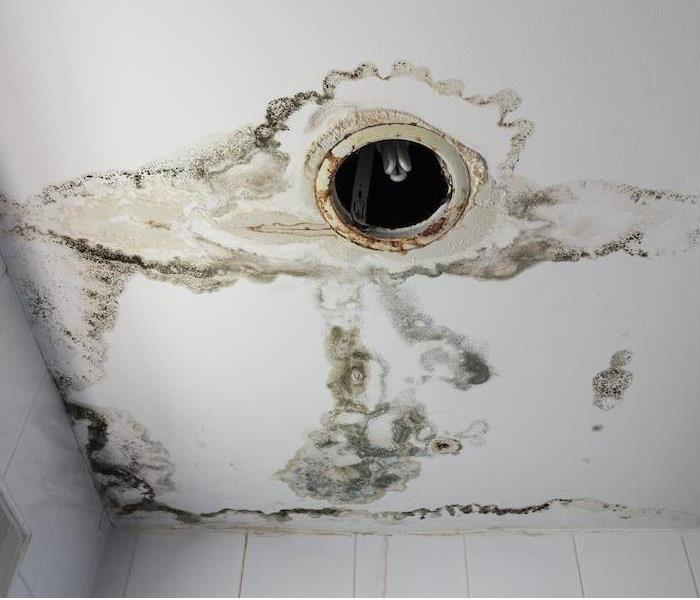 Water damage can come from a number of places. If you find any signs of damage to your property, call SERVPRO of Troup-Coweta.
Water damage can come from a number of places. If you find any signs of damage to your property, call SERVPRO of Troup-Coweta.
We get plenty of rain in the Fayetteville area. The national average for a given city is 38 inches of rain per year, and we beat that average that by more than 10 inches.
Now some of that rain courtesy of your standard, near-daily summer shower. But some of it, as you well know, comes from storms that pack quite a bit more punch.
As a homeowner, it’s incumbent upon you to protect your home as much from water damage as much as possible, or at least to stop it once it’s discovered. So after a heavy rain, here are the places you should check to make sure all is well.
Check your basement. If there’s one solitary place you can anticipate water damage at home, it’s the basement. Homes with basement have a 98% chance of experiencing excess moisture or flooding at some point, so check here first. If you see water pooling, paint bubbling or you smell a damp odor, you may have an issue.
Crawlspaces and attics. Much like the basement, these areas can become inundated with moisture. If you have a crawlspace instead of a basement, it’s subject to the same kind of moisture issues, and attic moisture can reveal to you that there’s a leak somewhere in the roof.
Check on your sump pump. Your sump pump works hard to move water away from your house during a big storm. You should test your pump quarterly, or after any major rainfall.
Examine your gutters. Your gutters catch more than rain, and there are plenty of ways for them to get clogged or even damaged. In particularly heavy rains, gutters can be overwhelmed by water flow, and that becomes even more likely if they are obstructed due to built-up dirt, granules from roof shingles, twigs and leaves.
Inspect your roof. You don’t have to get up on a ladder every time it rains, but after a heavy storm, particularly if you have overhanging tree branches, take a good look at your roof from the ground. If you notice anything that looks off—broken or warped shingles, unfastened flashing or gutters that seem out of place—call a professional to conduct a full examination.
Water damage can come from a number of places at home. If you find a source of water leakage has done harm to your property, call your local SERVPRO for fast, expert help.
The Most Common Roof Problems You’re Likely to Encounter
2/2/2022 (Permalink)
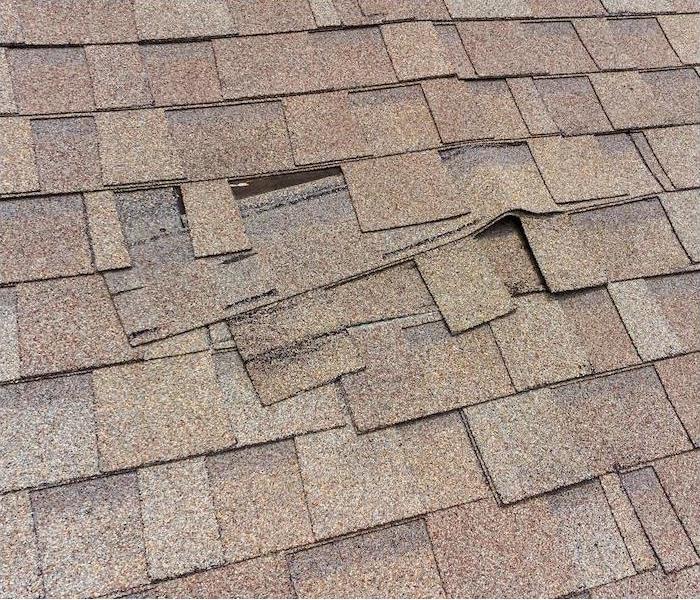 Roof care is home care, and leak prevention is the name of the game. If you find any signs of damage to your property, call SERVPRO of Troup-Coweta.
Roof care is home care, and leak prevention is the name of the game. If you find any signs of damage to your property, call SERVPRO of Troup-Coweta.
One of the sneakiest water damage sources in your home is actually on your home. Your roof regularly takes a beating from weather, sun, wind, rain and more, and it does a great job overall. If we were talking percentages, we’d be looking at Hank-Aaron-meets-Ted-Williams-type numbers.
But roofs are also one of the last places we tend to check for leaks, and thusly, one of the last places we catch leaks before they become a problem.
Make this your year to change all that. Keeping an eye on these problem areas can keep water from sneaking into your home through cracks and gaps in the roof.
Storm damage. Wind, hail and other environmental factors can damage your roof during a storm. No matter the season, your roof takes a pounding from storms, and you should always inspect your roof visually after a major storm, at the very least. If you suspect anything negative may have occurred, play it safe and let a pro examine it.
Falling branches and tree damage. Overhanging branches can crack and fall, but they can also rub away the top layer of your shingles over time as they sway with the wind. Trimming trees and being mindful of their proximity to your roof can help you avoid bad shingles and subsequent leaks.
Flashing. Your roof likely already has holes in it, but they’re the kind you have to have. Chimneys, vent pipes, skylights and even HVAC systems all come through your roof for ventilation. If the flashing is poorly installed, or if it simply wears down over time, it can cause seams in your roof and pull shingles and tiles off their proper alignment. Flashing may also need to be resealed from time to time.
Mold. Those dark streaks and patches on your roof are easy to ignore, but they’re really patches of mold—and that’s never good. There are many reasons to get rid of mold whenever and wherever you see it, but in the case of your roof, that mold can eventually eat away at your roofing material, which can let water in.
Gutters. While technically roof-adjacent, this one certainly needs attention as well. Keeping your gutters free of debris and buildup can stop water from damming up and flowing into your house by getting under your shingles.
Time. The truth is, your roof has a life expectancy, and even within that window it’s likely to develop needs that you can’t see from the ground or as an amateur. An annual roof checkup is recommended in order to keep your roof performing at its peak. A professional can identify problems that are, and some that have not yet come to pass.
Roof care is home care, and leak prevention is the name of the game. If water damage becomes an unexpected part of your home ownership experience, contact SERVPRO to get things cleaned up and restored.
Why SERVPRO Is Your Go-To for Any Restoration Needs
2/2/2022 (Permalink)
 SERVPRO of Troup-Coweta is ready 24 hours a day for all of your restoration needs.
SERVPRO of Troup-Coweta is ready 24 hours a day for all of your restoration needs.
Needing restoration on your home is something that can feel rather overwhelming, but eventually, it is likely to happen. From damaging severe weather incidents to leaks or kitchen fires, there are many ways that a home can sustain damage, but fortunately, there are comprehensive solutions that can help ease the complications of restoration.
To better prepare your household to deal with damages that need restoration, it is best to think ahead regarding what company you would like to use. That way, when you discover damage, you can make the call immediately to begin the restoration process.
In most cases, it is vital that restoration happens quickly—so below, we have outlined a few reasons why we are here to be your go-to.
Why to Choose SERVPRO for Your Restoration Needs
**We understand that each scenario is different.** While incidents that require restoration are quite common, every scenario is still different. For example, in spite of the fact that house fires impact more than 350,000 families each year, every fire causes damage that varies in its scope. That is why we make sure that we have the expertise to deal with damages of any type, so you can always feel confident when you call on us.
**We provide a response 24 hours a day.** When it comes to damage restoration, it is important to act fast. This is vital not only for helping your household get back to its usual state, but it is also a must to prevent further issues from arising, such as mold and mildew growth after water damage. For this reason, we are here to respond to your call 24/7, 365 days a year.
**We do more than damage restoration.** In addition to simply restoring the damage an incident has caused in your home, we also help with every aspect of the process. From helping you pack things up to dealing with your insurance agent to get the most for your claim, we aim to provide assistance in any way we can throughout the process.
*If you are in need of a go-to partner for residential restoration, you can count on us. Contact us at any hour to learn more about our process or to receive a rapid response to your damage.
Why Choose SERVPRO for Your Fire Restoration Needs?
2/2/2022 (Permalink)
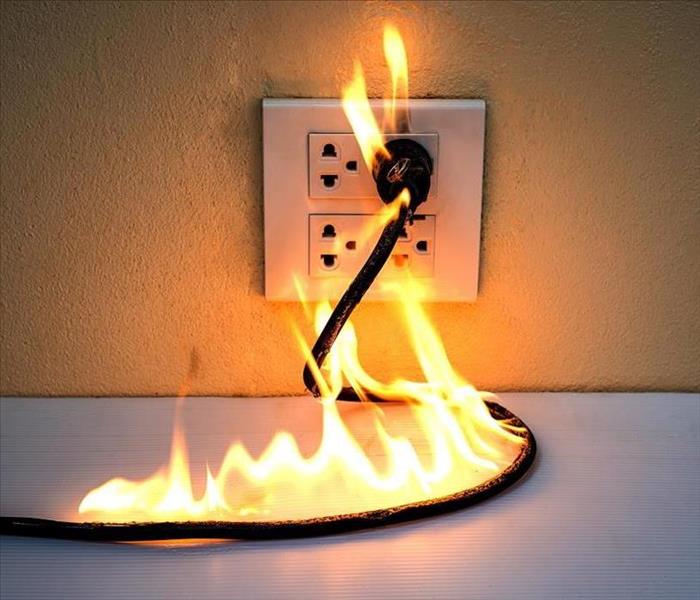 SERVPRO of Troup-Coweta is ready to help you create an emergency plan to keep your family safe.
SERVPRO of Troup-Coweta is ready to help you create an emergency plan to keep your family safe.
A house fire is something no one would like to experience, but unfortunately, they are a more common occurrence than most people realize. Every year, around 358,000 structures will have a fire event in them, causing billions in property damage across the United States.
House fires can lead to significant property damage as well as pose risks for injuries and deaths, so preparing as much as possible is a must for mitigating their impact.
Focusing on fire prevention is the best thing to do to keep your household safe, but it is also important that you have a plan for the aftermath of a fire just in case. Because smoke and soot can permeate rooms in the home that were not even impacted by a fire, it can be quite disruptive to your daily life—which is why we are here to guarantee a rapid response when you call us.
Why to Choose SERVPRO When You Need Home Fire Restoration
**We will get to you quickly.** Experiencing a house fire is a frightening thing, and if you have damage to your home, it is understandable that you will want it taken care of as quickly as possible. That is why we are here for you 24/7, 365 days a year. We always provide a rapid response when you call us, no matter the hour.
**We understand fire damage.** Fire damage is a complex thing. Not only is there the damage from the actual flames, but there is also smoke, soot and often moisture damage to consider. We approach fire damage with this in mind, and have the knowledge to tackle the entire spectrum of fire damage so it is like it never even happened.
**We have expert fire restoration technicians.** Because we always want to provide you with the best restoration service possible, we take our training programs very seriously and ensure that our technicians are well-versed in the world of fire restoration. Between third-party certifications and our own SERVPRO training that our technicians complete, you can be confident that the technicians assigned to your job know exactly what to do.
*If you are in need of fire restoration, let us be the team you call. Get in touch with us at any hour to learn more or to report your fire damage.*
The 3 Toxicity Levels of Water Damage
1/31/2022 (Permalink)
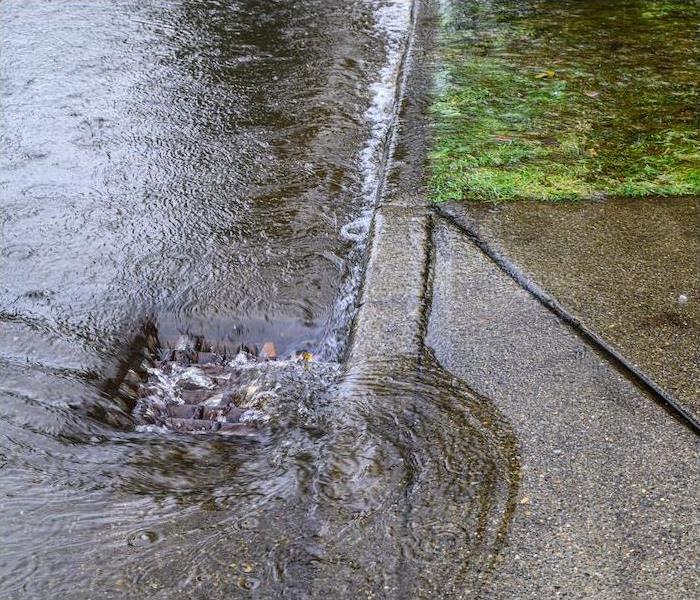 No matter the water damage, we can quickly set things right. Contact the SERVPRO of Troup-Coweta team to learn more.
No matter the water damage, we can quickly set things right. Contact the SERVPRO of Troup-Coweta team to learn more.
Water damage can happen all sorts of ways, and it can certain cause myriad problems, not the least of which is its potential for toxicity. But how do we determine which water sources are toxic and which aren’t? Why isn’t it safe to touch or swim in floodwater, but rain is fine—aren’t they the same?
These distinctions are very important, and there’s a governing body called the Institute of Inspection, Cleaning and Restoration Certification that helps us understand them.
Category 1: Clean Water Damage
Damage from so-called “clean” water is the least worrisome kind of damage, and assumes a certain level of cleanliness from its sources—typically things like refrigerators, water supply lines for appliances or even showers.
The nature of this type of damage means most of the damage mitigation involves simple drying, extracting and dehumidifying, and most instances of clean water damage don’t create health worries.
Category 2: Grey Water Damage
The next category is referred to as “grey” water. The sources of grey water include sources that aren’t inherently or necessarily toxic, but that could or may be—overflow from toilets, backups from an unfiltered sump pump, or even leaks from a washing machine which could have been holding toxic materials during the wash cycle.
Touching water from these sources may not cause immediate harm, but grey water is still to be avoided as it could cause potential danger all the same.
Category 3: Black Water Damage
“Black” water is the nasty stuff. It carries an immediate, inherent risk of toxicity, sickness or bodily harm, and it requires immediate action for removal to get these risks mitigated. Sewer backflows, broken toilet bowls containing fecal matter and other septic water fall into this category.
It may surprise you, but overflowing ground and river water fall into this category, as does flood water, because they may contain everything from waste to lawn-care chemicals and parasitic organisms. Black water can cause disease and immediate harm, and affected surfaces like carpet or sheetrock must be removed. This water is also the most difficult to deal with in the aftermath, because it requires such care in cleanup.
No matter the water damage or the level of toxicity or danger to your home or family, we can quickly set things right. Contact your local SERVPRO team today to find out how we can tackle water problems of any size or nature.
Creating Your Home’s Fire Safety Blueprint
1/31/2022 (Permalink)
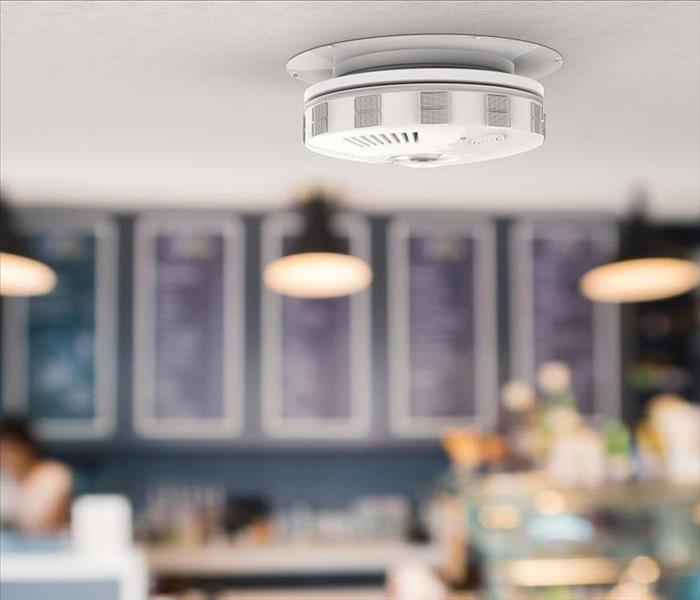 Having a solid fire safety plan for your home could make all the difference in an emergency. Let SERVPRO of Troup/Coweta Counties help get you ready.
Having a solid fire safety plan for your home could make all the difference in an emergency. Let SERVPRO of Troup/Coweta Counties help get you ready.
Increasing the fire safety of your home is a great goal. House fires can be traumatic and dangerous events, causing extensive property damage as well as injury or loss of life. However, if you have not previously considered your options for fire safety, getting into the habit of fire prevention around the house may seem like a daunting task.
The good news is that improving your home’s fire safety is ultimately quite a simple task. Once you assess where your gaps in fire prevention efforts are, you can implement simple new habits to better protect your home. Below, we will help you identify where you could improve fire safety so you can figure out exactly what you can do to help keep your household safer from fires.
### Determining Where to Improve Your Fire Safety at Home
**Consider personal safety first.** While fire prevention is quite important, the first thing you should do from a safety perspective is to consider how to protect your family if a fire does start. One of the best things you can do is install smoke alarms throughout the home and test them monthly to ensure they are operational. That way, anyone in the home will be alerted right away if a fire starts and can quickly get to safety. Additionally, you should draft a fire evacuation plan for your household and practice it regularly, so everyone is aware of what to do if the alarms do sound.
**Next, consider your daily habits.** Because many fires are started due to seemingly innocuous errors around the home, it is important to consider how your daily habits could have a role in your fire safety efforts. On average, how careful are you when cooking, lighting candles and utilizing flammable objects? Being aware of little things, like keeping flammable objects away from heat sources, can go a long way toward safety.
**Know the fire risks to watch for.** In addition to building good habits, knowing when to identify a fire risk is an important part of the puzzle. Things such as overloaded extension cords, frayed wires or space heaters being used improperly are red flags regarding fire safety—and quickly addressing them can go a long way towards prevention.
*If you have damage due to a fire in your home, you can count on us for restoration. Get in touch today to learn more about how we can help.
Where to Start on Fire Safety Efforts for the Home
1/27/2022 (Permalink)
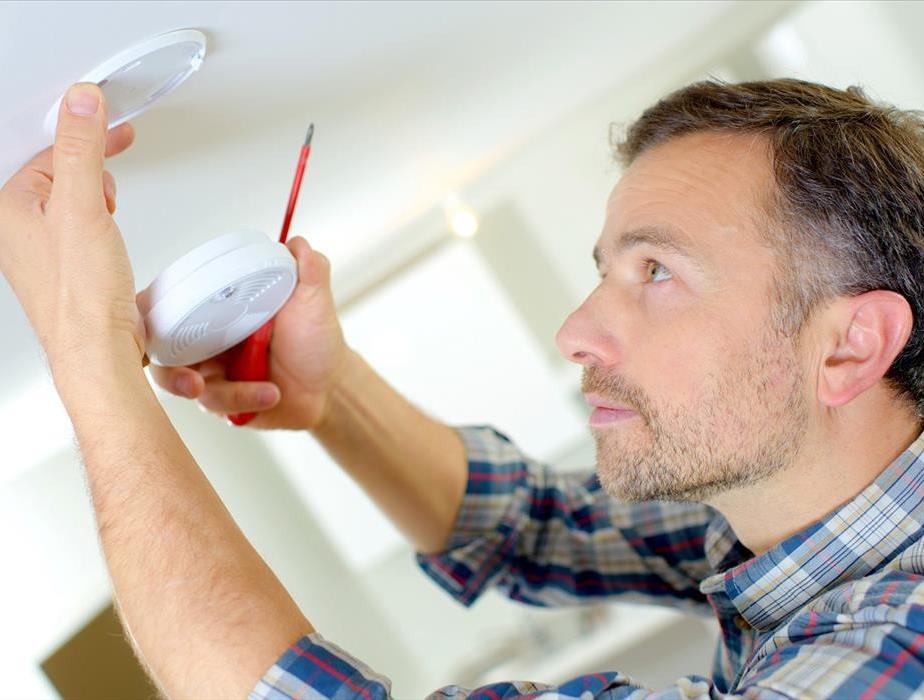 Where to Start on Fire Safety Efforts for the Home.
Where to Start on Fire Safety Efforts for the Home.
If you are hoping to improve your household fire safety, it can be overwhelming to know where to start. House fires are certainly dangerous, but given the multitude of ways they can start, understanding what fire prevention measures to take around the home can seem like it will be a daunting task.
Fortunately, fire safety is actually quite simple! By adding certain habits into your household routines, you can make major strides in reducing your likelihood of a fire and keeping your family safer.
Read on to learn more regarding where to start when improving fire safety in the home.
How to Begin Your Fire Safety Efforts at Home
**Start with your smoke alarms.** If you are new to fire safety efforts, starting with smoke alarms is really the best thing that you can do. Most people will have less than three minutes to escape when a fire begins in the home, but smoke alarms can ensure all members of your household are alerted quickly so they can begin evacuating. Make sure you have smoke alarms installed throughout each level of the home and in every sleeping area, and test them once per month to be sure they are operational and do not need a battery replacement.
**Create an escape plan.** As previously mentioned, being able to escape quickly is so important in the event of a house fire. It is wise to draft a fire escape plan for your home, and practice it with each member of your household at least every six months. Be sure that you are able to execute your plan in around two minutes, and that everyone knows where to meet up once they are safely outside.
**Consider your cooking habits.** Cooking is one of the most common causes of house fires, so evaluating your cooking habits can be a great way to prevent fires from starting. Be careful about flammable objects near the stove and leaving food unattended while cooking. Additionally, make sure that you have a fire extinguisher in the kitchen that is rated to handle cooking and grease-related fires.
*If you have damage to your home from a house fire, we are the team to call. We are here 24/7 to provide you with a rapid response. Get in touch today to learn more.
A Guide to Fire Code Considerations for Your Commercial Space
12/29/2021 (Permalink)
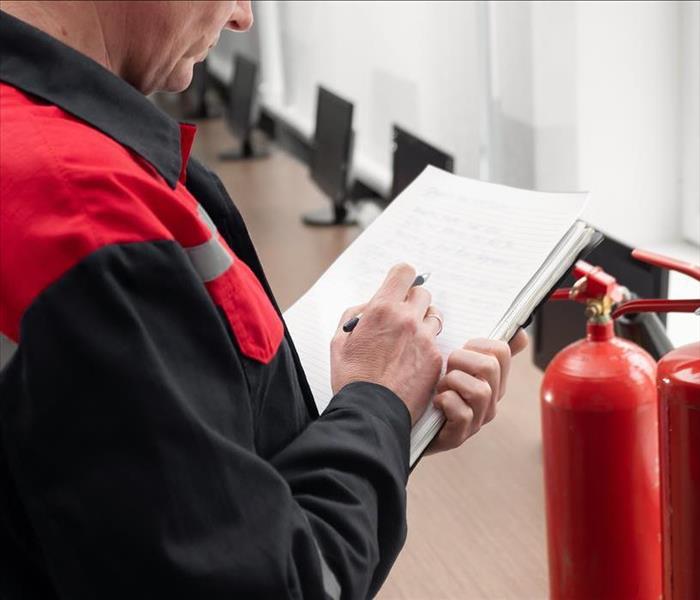 If your business needs help with fire damage, you can count on SERVPRO of Troup-Coweta Counties 24 hours a day, 7 days a week.
If your business needs help with fire damage, you can count on SERVPRO of Troup-Coweta Counties 24 hours a day, 7 days a week.
If you own or operate a business or other commercial space, understanding how to protect your investment and your employees from harm related to fire damage is a must. Not only are fires extremely dangerous for anyone who is in the area, but they can also be devastating to
businesses—it is estimated that over half of businesses are unable to recover from a fire.
Fortunately, businesses are able to take many precautions when it comes to fire prevention, and
national commercial fire codes are a great place to start. While each area will have their own
local codes that should also be followed, below, we will examine some of the national codes that
can help you keep your business safe and operational.
Fire Codes Pertaining to Commercial Sprinkler Systems
While they are not required in all types of commercial buildings, a commercial fire sprinkler
system can be a fantastic way to reduce the risk of a fire severely impacting your business. Typically, the rules for fire sprinkler systems are that they must be installed in any commercial building over 5,000 square feet and any building that is taller than 55 feet in height.
Fire Codes Pertaining to Fire Alarms
While smaller commercial spaces are not always required to have a fire alarm system, installing
them is a simple enough process that it is always a good idea. By alerting people to the fire quickly, your employees and customers will have more time to escape, which could potentially save a life. If possible, it is best to invest in interconnected fire alarms, so that when one is
triggered, they will all sound to alert everyone in the area.
Fire Codes Pertaining to Fire Extinguishers
All businesses are required to have fire extinguishers on the premises, but how many and
where they should be located varies based on the size and nature of the commercial space in
question. Additionally, business owners are required to have fire extinguisher training with all
employees at least once per year to be certain that everyone is aware of how to use a fire
extinguisher and comfortable with the best practices.
If your business needs help with fire damage, you can count on us. We are here 24 hours a
day to help you recover in the aftermath of a commercial fire. Contact us today to learn more.
Dangers of Extreme Cold
12/29/2021 (Permalink)
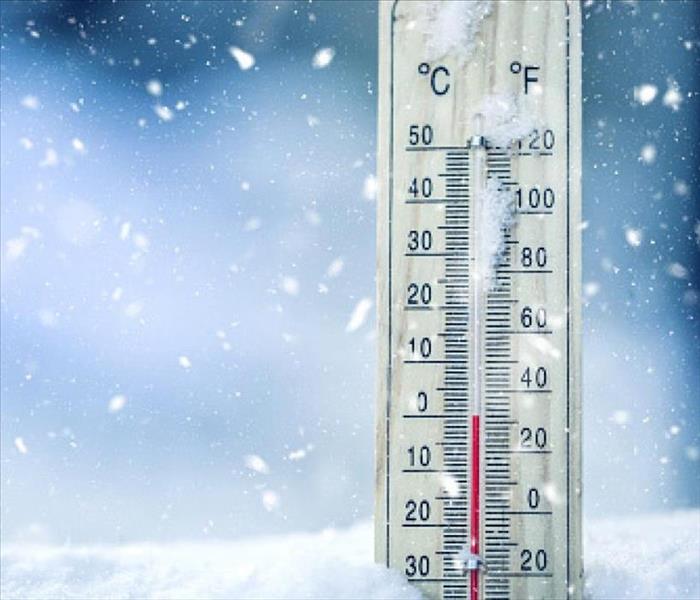 It is important to be aware of the effect extremely cold temperatures can have on you.
It is important to be aware of the effect extremely cold temperatures can have on you.
While your place of business can get damaged due to winter weather and extreme cold, your personal health & the health of your customers is also at risk.
Fifty-three people died and three were injured due to extreme cold in 2015.
It is important to be aware of the effect extremely cold temperatures can have on you. The two main conditions to be aware of are frostbite and hypothermia.
Frostbite is caused when your skin is exposed to extremely cold temperatures. Physical symptoms are white or grayish-yellow skin, skin that feels unusually firm, or waxy numbness.
Hypothermia is when your body temperature falls to an abnormally low temperature, caused from long exposure to cold weather. Signs of hypothermia include shivering, exhaustion, confusion, fumbling hands, memory loss, slurred speech, and drowsiness. If someone’s body temperature is below 95°F, seek medical attention immediately.
To avoid these conditions, stay indoors if possible. If not, dress warm in layers and try to keep dry.
Routine Maintenance That Can Make Your Home More Resilient to Storm Damage
12/26/2021 (Permalink)
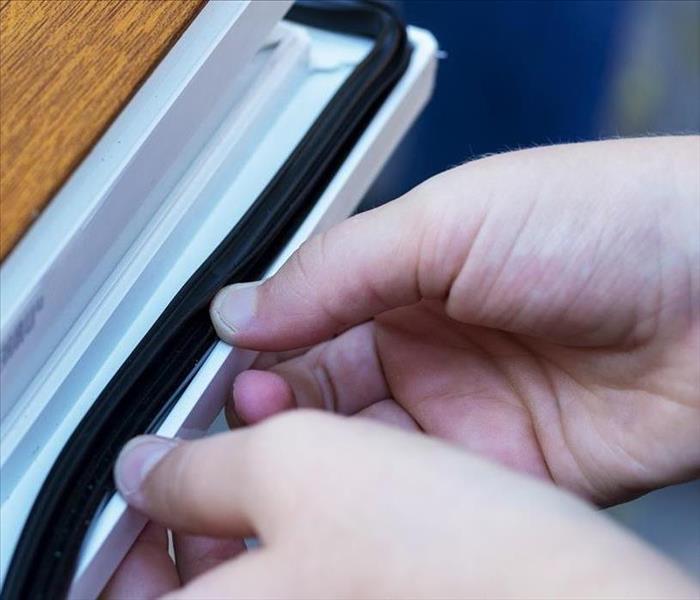 If you have damage due to a severe storm, you can count on SERVPRO of Troup-Coweta Counties to help you in the aftermath.
If you have damage due to a severe storm, you can count on SERVPRO of Troup-Coweta Counties to help you in the aftermath.
While severe weather is an unpleasant thing to be threatened with at your home, it is an inevitable occurrence. Severe weather is more common during the hot and humid summer months, but heavy rains and high winds can occur at any time—and can bring serious damage along with them.
Keeping yourself and your family safe is of the utmost priority during severe weather, but in
addition to this, there are also measures you can take to keep your home safer, too. While no task is a certain way to prevent damage to your household, there are some routine home maintenance tasks that will actually reduce the likelihood that a storm could cause damage to
your home. Read on to learn more!
Home Maintenance Tasks for Storm Damage Prevention
**Address any leaks right away.** Leaks throughout the home can be rather sneaky, but if you have a feeling that water is creeping into an area it should not be, make sure to tend to it well in advance of a period of heavy rain. Basements and crawl spaces are common places for leaks to
hide, but it would be good to regularly check your attic and around your roof line for signs of water entry, too.
**Add weather stripping around windows and doors.** Water can work its way into the tiniest of gaps, and if you are getting heavy rain as part of severe weather, you may be at risk for
developing leaks around your windows and doors. Adding weatherproofing around any exterior
doors and windows can help prevent leaks from starting even during the heaviest of rains.
**Be sure you have plenty of flashlights and batteries.** Next time you make a trip to the
hardware store, it may be wise to add flashlights and batteries to the list. Power outages are
extremely common when severe weather strikes, so making sure you have plenty of flashlights
and their corresponding batteries can help you be sure you have plenty of visibility in the dark
just in case the power goes out.
If you have damage due to a severe storm, you can count on us to help you in the aftermath.
Contact us at any hour to report damages or to learn more about our storm damage restoration
process.
Water Damage Tips for Property Managers
12/20/2021 (Permalink)
 Contact SERVPRO of Troup-Coweta today to enlist the industry leader for your commercial property. We are your local restoration experts.
Contact SERVPRO of Troup-Coweta today to enlist the industry leader for your commercial property. We are your local restoration experts.
Water damage presents a unique set of challenges for landlords and property managers.
For example: Although you as a property manager may be responsible for the general upkeep of toilets and plumbing fixtures, you obviously aren’t going through every property every day to check on each one. So something you might notice as an issue and immediately act to take care of might go either unnoticed by a tenant, or you might not know about it until it’s too far into the problematic phase.
Considering a toilet leak can waste over 4,000 gallons of water a day, this presents a real potential problem.
So you’ve got potential problems in properties you can’t have eyes on at all times—how to you manage to stay ahead of it? There are a number of things you can do, but some overarching themes run through them all.
Routine maintenance is a must.
A thorough inspection every year (or at minimum every two years) is essential. Most bursts and leaks begin gradually rather than all of a sudden, so regular maintenance may help you catch something in its infancy before it becomes a bigger issue. If you need expert help in knowing what to look for, hiring a pro to assist is still cheaper than repairing a waterlogged property.
After heavy rains or periods of snowfall, check roofs and gutters for damage or dams, which could cause water to begin leaking inside.
Maintaining good relationships with tenants can help.
If you foster good relationships with your tenants, they can be your eyes and ears when problems start. This process, of course, begins well before any water damage calls—hopefully you’ve been building good back-and-forth with your tenants from day one by answering calls and responding to needs in a timely fashion.
Your help to them cultivates your ability to ask them to be vigilant about notifying you of issues—and when your tenants trust you to act, they’re more likely to alert you when they notice something, even something as small as a running toilet.
In seasonal shifts or when there’s upcoming nasty weather, be sure to alert your tenants to any potential preparation that needs to be made as well, and you can save yourself some service calls.
Keep properties up to date.
Keeping up with changing technologies for leak detection, maintaining roofing and gutters and water heaters, and replacing older water appliances and hoses keeps your tenants happy, keeps your properties nice and in good shape, and helps future-proof you against damage that could result from neglect or old age.
Even the best landlords and property managers need help sometimes. Contact SERVPRO today to enlist the industry leader for your commercial properties.
Fire Safety Tips for the Holiday Season
12/20/2021 (Permalink)
 If you have a house fire this season, we are the team you can count on. We are here 24/7 to begin the restoration process.
If you have a house fire this season, we are the team you can count on. We are here 24/7 to begin the restoration process.
The holidays are such a fun time of year, filled with décor, delicious treats and plenty of cheer.
Between Christmas trees, lights on all the houses and gatherings of loved ones, there is a lot to
appreciate about this season each year.
However, while there is a lot to love about the holiday season, there is cause for concern from a
fire safety standpoint as well. The holidays bring about a change in habits and in household
items for many of us, which can lead to lurking fire hazards throughout the home. Fortunately,
many of these hazards can be avoided with a bit of prevention—read on for our top fire safety
tips for the holiday season!
Our Top Fire Safety Tips for This Holiday Season
**Be careful with your décor and decorations.** Decorating the house for the holiday season is so much fun, but it is important to be careful with what you are choosing for your home. If you like to decorate with lights, be sure to check all strands for frays or exposed wires and toss out any ones that look worn. If you like to use a real Christmas tree, be sure to water it daily—dried trees are highly flammable and can cause serious fire damage if ignited.
**Make sure to cook with care.** Making a big holiday meal or baking your favorite festive treats is a fun activity, but cooking safety is extremely important at any time of the year. If you are using the stovetop or oven, never leave it unattended, and keep anything flammable well away from heat-producing appliances in your kitchen. Additionally, it is a good time to check your kitchen’s smoke detector and fire extinguisher and replace them if necessary.
**Heat your home safely.** When there is a chill in an area of your home, a space heater can be a great way to warm things up without having to spend a fortune on your electric bill. However, space heaters can be quite a fire hazard if they are not used properly. Be sure space heaters are at least three feet from anything flammable and are equipped with tip-over sensors that will shut them off automatically if they are knocked off balance.
If you have a house fire this season, we are the team you can count on. We are here 24/7 to
begin the restoration process. Get in touch today to learn more or get a rapid response.
Do You Have a Proper Plan for Severe Weather?
12/20/2021 (Permalink)
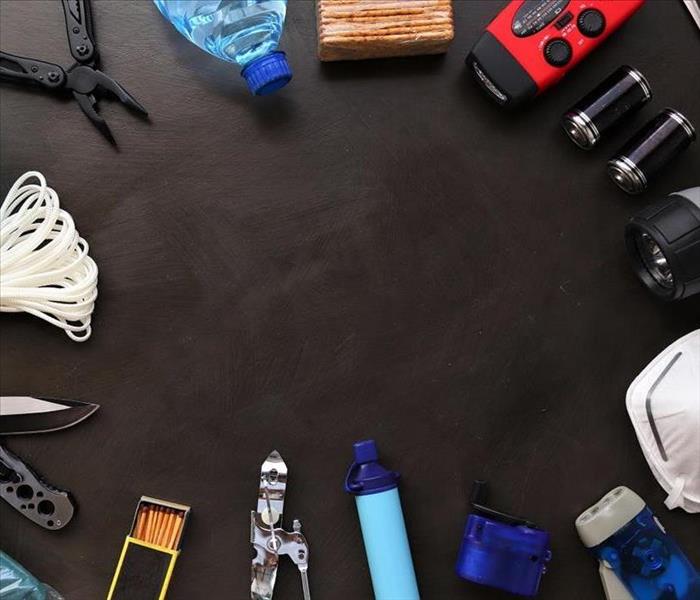 If your home is damaged in a storm, you can count on SERVPRO of Troup-Coweta Counties for assistance.
If your home is damaged in a storm, you can count on SERVPRO of Troup-Coweta Counties for assistance.
While severe weather such as thunderstorms and heavy rains is inevitable, you may be surprised by how many people have not adequately prepared for it. Storms are possible in any area of the country and at any time of year—so having a plan in place in case one threatens your area is a must for your safety. Though it is impossible to know when a storm will strike, it is possible to plan ahead and ensure you are able to keep your family as safe as possible.
While thinking of such a frightening scenario can be overwhelming, we are here to help with all
the information you need to cover your emergency planning bases. If you would like to be more prepared for severe weather, use the checklist below to ensure you have everything taken care of to keep your household safe.
A Checklist for Emergency Preparation in Advance of Severe Weather
The most important thing you can do in advance of severe weather is to prepare so that it does
not take you by surprise. Here are some things to make sure of to minimize a severe storm’s impact:
? Pack an emergency kit for your household with food, water, flashlights, batteries and any
other essentials.
? Pack a “go bag” for family members with essentials in case you must evacuate.
? Purchase an NOAA weather radio (battery- or hand-powered) so you can receive
reliable weather updates.
? Be sure your house’s street number is clearly visible in case you need emergency
assistance.
? Know where your local storm shelters are located and multiple routes to get there in
case roadways become flooded.
? Practice your evacuation plan with each member of the household so you can get out
quickly if needed.
? Do not attempt to cross areas with downed power lines or drive over flooded roadways.
? Have a designated safety area in your house where everyone knows to head in the
event of a storm—a basement works best, but hallways, bathrooms or anywhere else
away from windows can be sufficient.
? Keep up with your weather forecast and have a way to get alerts in case watches or
warnings are issued.
If your home is damaged in a storm, you can count on us for assistance. Contact us at any time
for more information on our severe storm restoration or to report damage to your home.
A Few Common Misconceptions About Commercial Fires
12/18/2021 (Permalink)
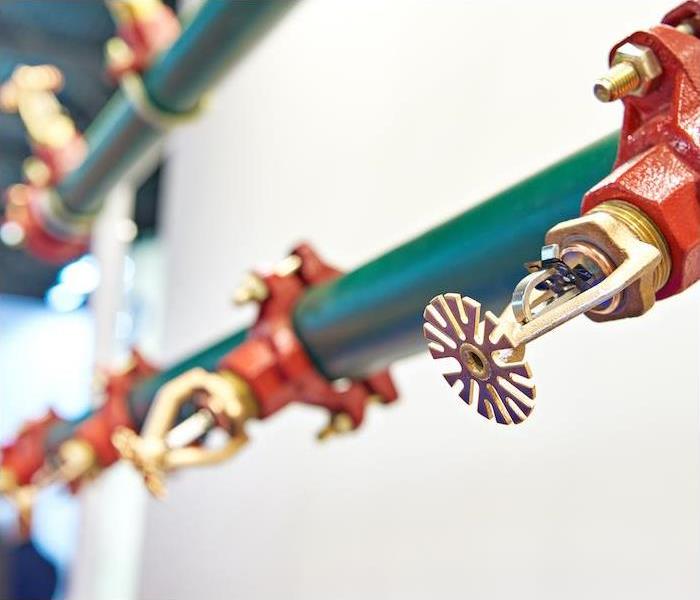 If a fire should occur and damage your building, reach out to SERVPRO Troup-Coweta. We will create a custom restoration solution for your situation.
If a fire should occur and damage your building, reach out to SERVPRO Troup-Coweta. We will create a custom restoration solution for your situation.
It’s common for myths and misconceptions to evolve over time about almost anything that becomes a ubiquitous part of society. A couple of quick ones by way of example: The color red doesn’t provoke bulls to anger. You don’t swallow eight spiders a year in your sleep. And George Washington didn’t really have wooden teeth.
Fire safety is no different. There are long-held thoughts about fires that don’t exactly hold true, and these could make a significant difference in in the amount of damage your business sustains in a fire, or even your approach to fire safety overall.
Let’s look at a few misguided ideas about business fires.
1. Water can’t put out grease or oil fires. The truth is that water can be used, and often is, to put out grease fires. But the way it’s used makes the difference in whether it’s effective or not. Being able to cover the fire from above with a mist or a sprinkler makes it possible to take care of a grease fire without spreading it.
2. A triggered sprinkler system causes more damage than fire. Most people believe that when a system is triggered, all the sprinkler heads go off at once, dousing anything and everything, and bringing as much disaster to the office as a fire would have. But sprinklers go off in zones, and often only one zone, or even one head, is sufficient to take care of a fire before it spreads.
3. Buildings that are up to code don’t need sprinklers. A building code really only makes it safe for occupants to be able to exit a building in an emergency; most aren’t concerned with fire prevention or cessation. A brand-new building that’s built to code may still need additional fire protection.
4. Sprinkler systems go off accidentally. There is such a small occurrence of sprinkler systems triggering without cause that there’s actually not enough data to register it as something that ever happens. You shouldn’t worry about your system accidentally spraying the office down.
There are other commercial fire myths, but these are significant and could make a big difference when it comes to keeping your business or office safe.
If a fire should occur and damage your building or office, get in touch with SERVPRO of Troup-Coweta Counties to get fast, effective restoration solutions underway.
Flash Floods Are the Most Dangerous Natural Disaster We Encounter
12/13/2021 (Permalink)
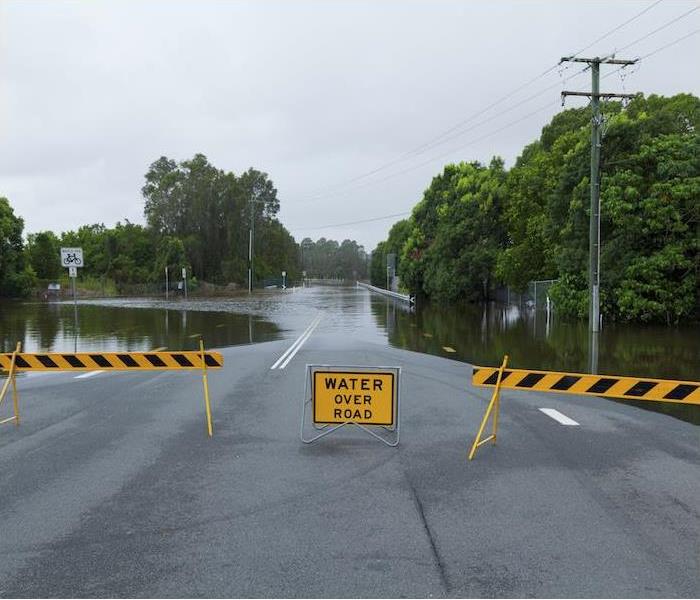 If a flood causes water damage to your home or business, SERVPRO of Troup-Coweta has a custom solution.
If a flood causes water damage to your home or business, SERVPRO of Troup-Coweta has a custom solution.
Tornadoes, hurricanes and massive radar events get the headlines, and to be sure they are to be respected and prepared for—but the single most deadly weather event in the United States is the simple flash flood. Flash flooding causes more fatalities than any other weather disaster we experience.
Flash floods can destroy roads, take out trees, cause mudslides and even cause boulders to roll out of place. Rising floodwater can create walls of water dozens of feet in depth, carrying away cars and even demolishing structures and bridges.
Single flood events in the last 50 years have caused mass casualties and incurred hundreds of millions of dollars in damage per event.
Don’t take flooding for granted. Often we are tempted to disregard flooding as a potential threat because it seems like a less dangerous weather occurrence than, say, a tornado. This leads us to stay at home when we should evacuate, or to think we can safely drive through a flooded area, when in fact it’s incredibly dangerous to do so.
Create a family disaster plan. Make sure your entire family knows your area’s flood risk, and what to do should an alert be issued. Keep extra supplies at home for instances in which power may be lost or travel capability may become limited. Teach your family basic safety measures, including CPR, first aid and how to shut off your home’s main water valve.
Stay alert. Know your area’s flood risk, and your particular proximity to streams and rivers that may be in flood stage. Listen to area meteorologists and get weather alerts regarding potential flood dangers. Keep an NOAA battery-powered radio to get up-to-the-moment alerts from the National Weather Service. These may instruct you to evacuate or shelter in place.
Take action. When an alert is issued, know where to go and where not to go. A flash flood warning means flooding is already occurring, so you must act quickly to get out of harm’s way. Get to higher ground and avoid dips, washes and low-lying areas. Never drive through flooded areas—the floodwater can cover up all sorts of danger, included a completely washed-away road. It only takes six inches of moving water to get your car off its path, so don’t put yourself in danger to try and save a little time.
Flooding is an often-underestimated risk, but it continues to claim more lives than any other weather event. Don’t risk becoming a statistic. Always be ready for rough weather, and if a flood alert is issued, take action immediately.
If a flood or other weather event causes water damage to your home or business, we’ve got the custom solutions you need to get back in the dry. Contact SERVPRO today to see how we can help.
Let Us Help You Rebuild After a Storm
12/13/2021 (Permalink)
 When storms strike your home or business, trust us to make things right again. SERVPRO of Troup-Coweta is here to help.
When storms strike your home or business, trust us to make things right again. SERVPRO of Troup-Coweta is here to help.
You know what SERVPRO does by now. You see the green truck with the orange logo, and you feel pretty sure somebody’s about to get some water damage cleaned up.
They had a pipe burst or a sewage backup, and a SERVPRO team is headed to get them back in the dry. Or maybe they had a fire in the kitchen, and the green team is on their way to clean up and remove the smoke damage and smell.
These things may all be true, and kudos to you for your acumen. But something you may not know about SERVPRO is that we can provide full-blown reconstruction when your home or business is damaged, whether you’ve had something as minor as drywall or carpet damaged by intruding water or you’ve experienced an extreme disaster like the Coweta tornado in March 2021. When disaster strikes, we’ve got the teams, the tools and the expertise to repair or fully rebuild.
Not only can we rebuild and reconstruct to get your home back to its preloss condition, but we can simplify your life by simplifying your post-damage process. You can trust SERVPRO for initial damage assessment, for the emergent needs for repair and mitigation, and for putting your home back together the way you know and love it.
With a streamlined process handled all by one excellent team, you can have peace of mind knowing everything is taken care of, and nothing is missed or miscommunicated.
SERVPRO of Troup-Coweta Counties is licensed for residential contractor services, so you know you can trust our workmanship as well.
We can help with every area of your repair, rebuild and reconstruction process, including boardup, dry cleaning, electrical and HVAC services, plumbing and much, much more. We can even help with temporary fencing and warehouse space.
There’s so much more to SERVPRO than what you may think when you see the green truck. The bottom line is that if you’ve got a repair or restoration need of any kind at home, we can help you get it taken care of. Call us first—it’s likely we’ll be the only call you have to make.
When storms strike your home or business, trust us to make things right again. From initial evaluation to the finishing touches, SERVPRO of Troup-Coweta Counties is here to make your life easier after a storm.
THE SCIENCE OF DRYING
12/13/2021 (Permalink)
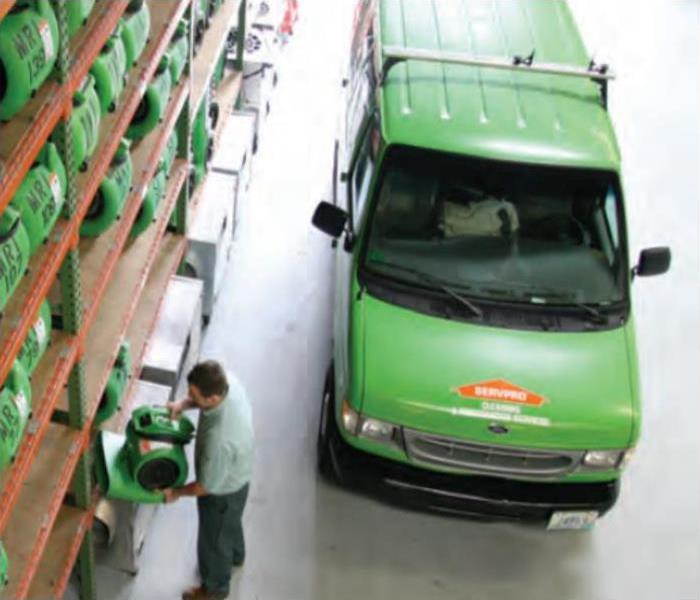 SERVPRO® of Troup-Coweta Counties has the professional training and equipment to help make water damage “Like it never even happened.”
SERVPRO® of Troup-Coweta Counties has the professional training and equipment to help make water damage “Like it never even happened.”
Did you know there is actually a science behind the process of drying? Having the knowledge of psychrometrics is essential to restoring a water damaged structure to its preloss condition. While your initial reaction may be to grab a few towels to mop up the mess and place a fan or two around the damaged area, SERVPRO® of Troup-Coweta Counties franchise professionals are trained in the science of drying and follow strict industry-approved standards to help lower the chances of any secondary damages.
If your business suffers a water damage, SERVPRO® of Troup-Coweta Counties will:
• Inspect the building to detect every component that is wet to help prevent secondary damage from happening.
• Measure how much moisture is in wet materials and monitor whether the materials are drying properly.
• Speed up Mother Nature by using professional drying equipment. What exactly does it mean to help “speed up Mother Nature”? A wet building can often dry naturally because the environment always seeks equilibrium. When materials are wet, moisture will naturally move to drier air at the surface of the material—but only if the air is drier.
The only problem is, nature often takes too long and secondary damages may occur while the building is drying out.
SERVPRO® of Troup-Coweta Counties has the tools and equipment to help Mother Nature along, including equipment to help dry hardwood floors, tough-to-reach spaces inside walls, and much more. We also use state-of-the-art monitoring equipment and a proven scientific process to help speed the drying of your home or business.
It’s not only the equipment but the technology too! SERVPRO® has developed DryBook™, a proprietary tool that provides real time documentation and updates on the drying process and helps ensure industry drying requirements are met. With DryBook™ Mobile, you have the ability to know exactly where your property is in the drying process.
The bottom line? SERVPRO® of Troup-Coweta Counties has the professional training and equipment to help make water damage “Like it never even happened.”
How to Get Permits and Safely Burn Leaves in Georgia
9/21/2021 (Permalink)
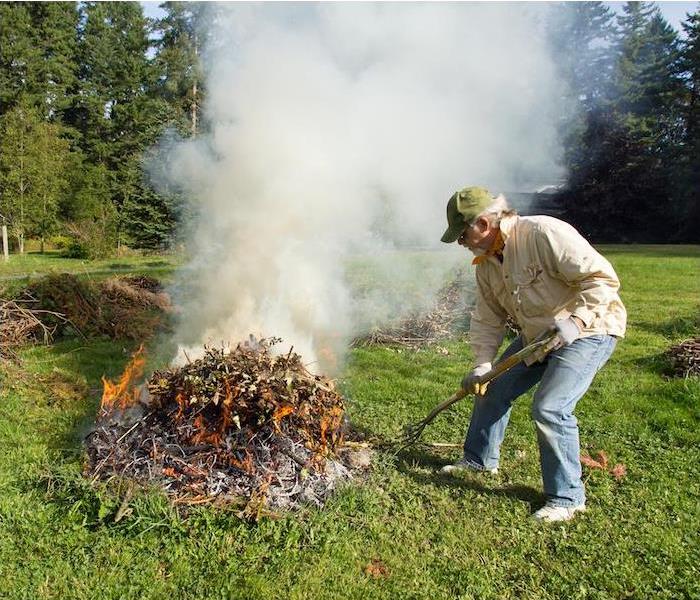 If fire should damage your property, SERVPRO of Troup-Coweta is here to help. Contact us to learn more.
If fire should damage your property, SERVPRO of Troup-Coweta is here to help. Contact us to learn more.
It’s the time of year where you’re likely accumulating a yard full of brown and red leaves as they fall from the trees in their annual cycle. So what’s to be done with them after the kids have piled them up and run through them?
Many homeowners choose to gather leaves and yard trimmings and burn them, because it’s efficient, natural and doesn’t incur the cost associated with removal services.
Anytime there’s an open flame, however, there’s a risk of fire danger—in fact, the burning of debris is the top cause of wildfires in Georgia, causing more than half of the state’s annual fires.
Let’s talk about how to safely and legally burn those leaves and lawn trimmings.
Permits and LegalitiesTo everything there is a season, and the season for leaf burning begins Oct. 1. From October through the end of April, it’s legal in Georgia for you to get rid of leaves, fallen branches and other trimmings by burning. Summertime burns are not allowed due to considerations regarding air quality.
Even in burning seasons, you need a permit. This part is required, but simple enough. Contact the Georgia Forestry Commission to obtain a permit before you burn your leaves.
Note that there may be particular rules about what you can and can’t burn (such as household garbage) that apply not only to the county in which you live, but particular cities and townships as well. You may also want to notify the local fire department before you burn.
How to Burn Your LeavesChoose a safe place 50 feet from any structures, and not underneath low tree limbs or power lines. Use a burn barrel if you have one, or choose a dirt area. Have a water hose ready and use it to soak the ground around the fire, and use a metal rake to manage the edges of your leaf pile.
Burn in small piles. You might have to do more burns this way, but it’s much safer than setting a big pile ablaze and having it get out of hand.
Don’t burn on windy days, as leaves and embers are prone to being caught up and carried off in ways you can’t control. Keep your unburnt leaves upwind from your burning pile to prevent them from catching fire due to traveling embers. And make sure there’s plenty of space between the two piles so your fire doesn’t get frisky and spread.
Knowing when and how to burn yard waste is crucial in preventing wildfires and backyard blazes that could threaten your home. Follow these guidelines to keep yourself in the clear.
If fire should damage your home or property, SERVPRO is here to help. Contact us to see how we can recover and restore damaged homes and businesses.
The Importance of a Fire Sprinkler System in Your Business
9/21/2021 (Permalink)
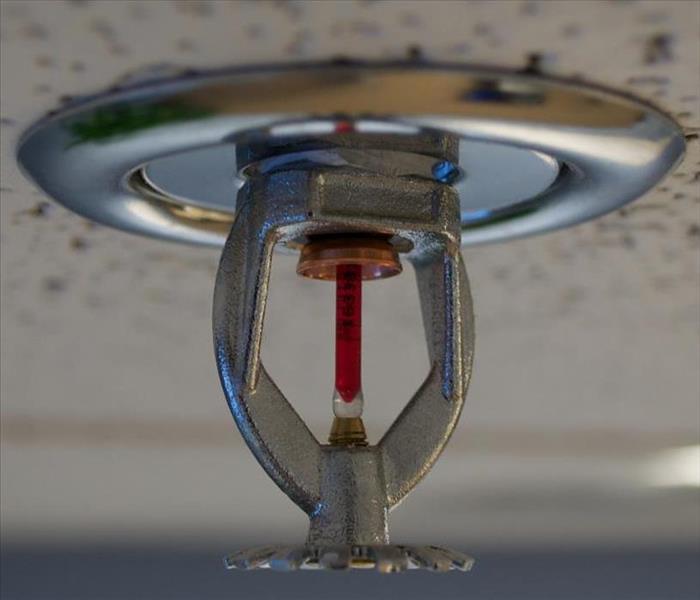 Restoring fire and smoke damage is one of our specialties. Contact SERVPRO of Troup-Coweta Counties to learn more.
Restoring fire and smoke damage is one of our specialties. Contact SERVPRO of Troup-Coweta Counties to learn more.
You’ve got so much invested in your business. When it comes to devastation, there are few things that compare to the anguish of seeing something as precious as your business damaged by, or lost to, a fire.
So you take the necessary precautions, you teach fire safety methods, you maintain extinguishers and you carefully monitor kitchen activities.
But the most important part of your fire plan is something you may not consider often, even though it’s right under your nose—or more accurately, above your head.
The Impact of Fire Sprinklers on Business Fires
Sometimes it’s hard to imagine that something called a “sprinkler” could be effective against something as intimidating and destructive as a fire. But the facts bear out that sprinklers are a worthwhile investment, maintenance item and sometimes a requirement for your local business.
A 2017 study by the National Fire Protection Association shows in great detail the effectiveness of fire sprinklers in businesses. The study shows sprinklers to be operative in over nine out of every 10 fires large enough to activate a sprinkler system, and of those fires the success rate in controlling the fire was an impeccable 96%.
That should give you peace of mind as a business owner that your fire sprinkler system is a worthwhile investment—it’s almost always the difference between an operations slowdown and a full-blown fiery loss.
And of course, when it comes to assets, your most important asset is your team. Damage or loss to property or technology is one thing; injury or loss of your employees is quite another. But in businesses with installed and properly maintained sprinkler systems, the civilian death rate is 87% lower than the rate among fires with no sprinkler present.
The data is clear. Sprinklers are a must-have for business owners in the area. They protect structures, assets and most importantly, people. While the number of fires has decreased in recent years, the cost associated with the damage from those fires has increased greatly. The amount you spend on installing and maintaining your business doesn’t compare to the amount it will save you in a fire situation.
If your business has been damaged by fire, SERVPRO of Troup-Coweta Counties is here to help restore any damaged areas to their original state. Click or call today to get your local SERVPRO agents at your side.
How to Mitigate Fire Risks Throughout Your Home
9/20/2021 (Permalink)
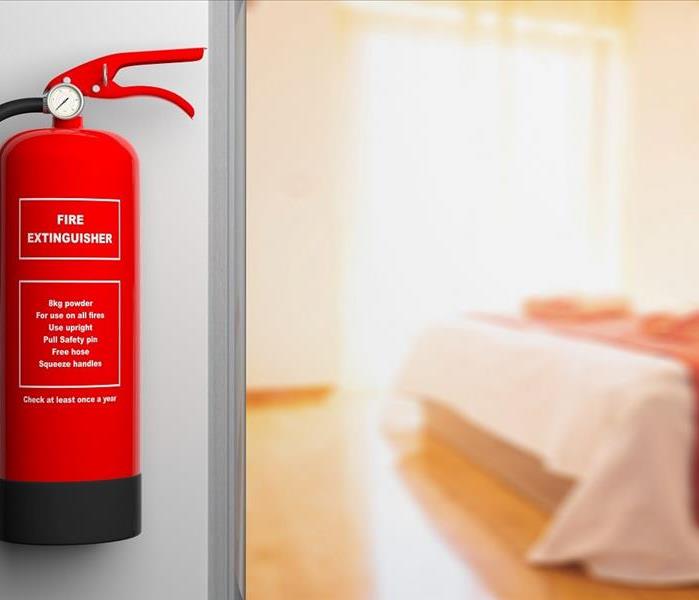 SERVPRO of Troup-Coweta Counties offers fire restoration 24/7—give us a call at any time to get a team of expert technicians out to your home quickly.
SERVPRO of Troup-Coweta Counties offers fire restoration 24/7—give us a call at any time to get a team of expert technicians out to your home quickly.
House fires are an extremely traumatic event for any family. Not only do they put those in your
household in serious danger, but they can also cause major damage to your home and
belongings inside. In regard to such a dangerous occurrence, prevention is the primary strategy
you should utilize in helping your family stay safe.
Understanding how to mitigate your household fire risk can go a long way in ensuring you do
not have to experience a fire in your home. These safety tips are key for protecting yourself and
your family while reducing the chances that a fire is going to occur at all.
Tips for Fire Safety in Your Household
Make sure everyone knows the risks. If you have multiple people in your household, it is
important to ensure that everyone understands the need to take fire safety seriously. Making
sure everyone is aware of the common dangers and prioritizes practicing fire safety throughout
their daily lives can go a long way in ensuring there are no careless errors that result in a fire.
Educating household members on simple habits, such as never leaving the stove on unattended
or always blowing candles out before leaving the room, can go a long way.
Test your smoke alarms regularly. Be sure you have smoke alarms installed in all the
recommended places and are testing your alarms at least once a month using the test function.
Smoke alarms are one of the biggest factors in alerting people in the home to a fire, and
considering you only have about two minutes to escape once a fire breaks out, getting as much
notice as possible is a must.
Install fire extinguishers throughout the home. Fire extinguishers are a great resource to
have on hand if a small fire were to start, so it is wise to stock up and put them in any high-risk
rooms you have. Keeping one in the kitchen, in the laundry room and near areas where any
flammable items are stored is a smart way to stay safe by ensuring you can quickly put out a fire if needed.
If you need help in the aftermath of a house fire, you can count on us. We offer fire restoration
24/7—give us a call at any time to get a team of expert technicians out to your home quickly.
The Astonishing Power of Water
9/13/2021 (Permalink)
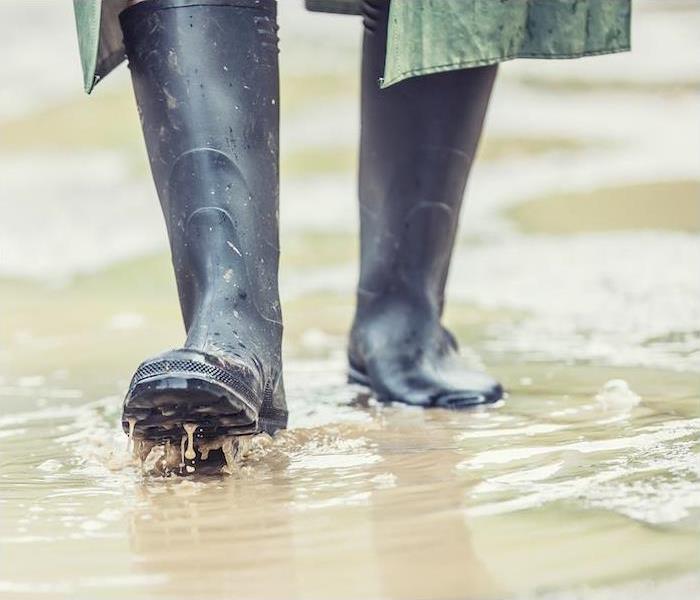 The power of water can wreak havoc on your home. If you have any damage, contact the SERVPRO of Troup-Coweta right away.
The power of water can wreak havoc on your home. If you have any damage, contact the SERVPRO of Troup-Coweta right away.
The most common type of natural disaster in the United States, and indeed, the world, is flooding. Globally flooding accounts for 40% of all natural disasters, but in the United States, an even more incredible 90% of all disasters involve flooding.
And yet for some reason we are often prone to downplay the physical danger of flooding or tempt fate when it happens. Flooding isn’t quite the same spectacle as hurricanes or tornadoes, so perhaps that plays a factor.
But whatever the reason, it’s good to be reminded that water is one of the most powerful forces on earth, and flooding is not to be taken lightly.
Flooding and Pedestrian Danger
You’re in every bit as much danger stepping into floodwater as you would be jumping into a raging river. You may think, “It’s only a few inches of water, how dangerous could it be?” The short answer: very dangerous.
Would you go outside in an EF5 tornado? When you step into floodwater traveling as slowly as seven miles per hour, you’re stepping into an equivalent force per unit area as the winds from the most dangerous cyclones.
You may not believe this, but it’s real: At 25 mph, floodwater carries the same brute force as wind traveling at almost 800 mph—that’s faster than the speed of sound.
Six inches of water is enough to take you off your feet, and six inches is enough to drown a full-grown adult, especially if you slip and fall face first. Don’t attempt to walk in floodwater.
Flooding and Vehicular Danger
First of all, simply don’t drive in storms that are producing floodwaters. Pull over on high ground if you’re already stuck out in it, but definitely don’t make any travel you don’t absolutely have to make.
If you see flooded roads, even if it doesn’t look deep, turn around. Nearly 50% of all flood fatalities are vehicular in nature.
Six inches of water is enough to stall or otherwise hinder most commercial cars, and a foot of water is enough to flip or overturn vehicles altogether. Two feet of rushing water is enough to carry trucks and SUVs completely away, leaving you in peril with absolutely no control.
Add to this inherent danger the fact that floodwaters can completely wash out roads and bridges, then cover it up so you can’t see. This level of danger is never worth the risk—turn around and stay safe.
The incredible power of water can also wreak havoc on your home, causing damage of all kinds. If floodwater makes a ruckus at home, contact SERVPRO and let us help you recover.
How Dangerous Are Lightning Strikes?
9/4/2021 (Permalink)
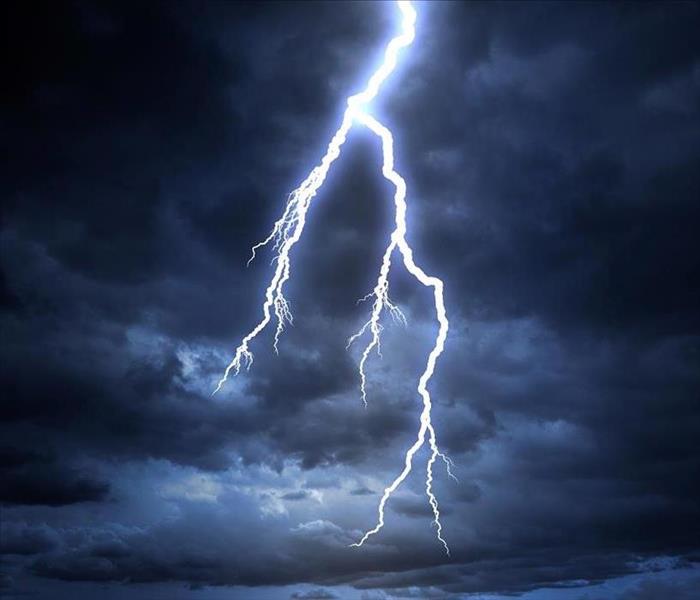 If you have damage to your home due to fire, water or a storm, you can count on SERVPRO of Troup-Coweta Counties to help.
If you have damage to your home due to fire, water or a storm, you can count on SERVPRO of Troup-Coweta Counties to help.
If you are faced with a severe thunderstorm watch or warning, your concerns are likely focused around high winds, hail and flash flooding, but did you know that lightning is one of the most dangerous forces that a thunderstorm produces? Lightning is present in every single
thunderstorm, as it is actually lightning’s electrical discharge that causes a clap of thunder to be heard—and where there is lightning, there is the threat of injury, fatality and property damage.
Lightning has been reported to cause at least 43 fatalities every year since 1989, and it also
causes innumerable fires and other types of property damage when it strikes. Below, we will
look at exactly what makes lightning so dangerous to anyone in a thunderstorm’s path.
What Makes Lightning So Dangerous?
**Lightning is present during every thunderstorm.** While factors like high winds and hail are only present in some thunderstorm scenarios, lightning is a guaranteed threat if there are thunderclaps. Because lightning is pervasive, it has a much more frequent chance to cause
damage than other types of weather-related incidents.
**Lightning delivers major voltage.** Lightning carries an extremely high electrical current, which
can cause damage in a number of ways. You may be familiar with power surges that occur when lightning strikes a home, but lightning can also lead to water becoming electrified (which is
why swimming during a storm is dangerous) and can send electrical waves through the ground
or any other surface it strikes that can cause injury to those around.
**Lightning can cause fires to start.** In addition to being extremely charged, lightning is also
thousands of degrees and can quickly lead to a fire. When lightning strikes a home, building or
tree, it can ignite the object where it strikes and lead to serious fire damages.
**Lightning can lead to leaks.** Not only can lightning cause house fires, but it can also cause
household leaks. If your home is struck by lightning, it will likely leave an open area where it
came into contact with your roof or siding—and if it is storming, this can quickly lead to serious
water damage. If you suspect your home has been struck by lightning, be sure to carefully
check your exterior as soon as it is safe to do so.
*If you have damage to your home due to fire, water or a storm, you can count on us to help.
Contact us today to learn more about all of our restoration services.*
Flooding Can Happen Anywhere
8/31/2021 (Permalink)
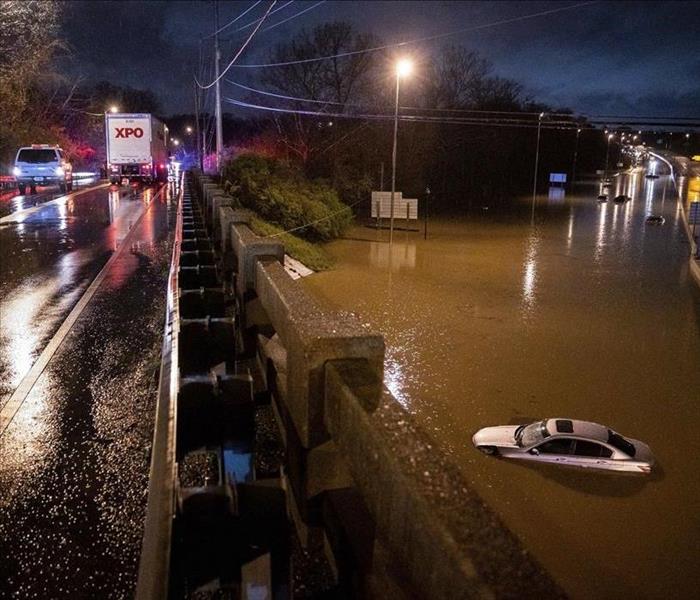 When catastrophic water damage happens to you, SERVPRO® of Troup-Coweta Counties can help.
When catastrophic water damage happens to you, SERVPRO® of Troup-Coweta Counties can help.
According to the National Weather Service (NOAA), “Approximately seventy-five percent of all Presidential disaster declarations are associated with flooding.” NOAA lists the most common flood hazards in the United States as:
• Flash Flooding
• River Flooding
• Storm Surge and Coastal Inundation from Tropical and Non-Tropical Systems
• Burn Scars/Debris Flows (Caused by Wildfires)
• Ice/Debris Jams
• Snowmelt
• Dry Wash (Caused by heavy rainfall in dry areas)
• Dam Breaks/Levee Failure
Just because you haven’t experienced a flood doesn’t mean you won’t in the future. In fact, 20% of all claims paid by the National Flood Insurance Program (NFIP) were for policies in low-risk communities. On average, floods cost $3.5 billion in annual losses in the U.S., and commercial flood claims average more than $75,000 (NFIP).
When catastrophic water damage happens to you, SERVPRO® of Troup-Coweta Counties can help. They can help you prepare ahead of time with an Emergency Ready Profile® (ERP), or respond to any size disaster to begin cleanup and restoration to get you back in business as soon as possible. SERVPRO® of Troup-Coweta Counties is ready to help make it “Like it never even happened.”
Making Sure Your Business Is Able to Recover Quickly After a Disaster
8/29/2021 (Permalink)
 If you need assistance after a disaster impacts your business, SERVPRO of Troup-Coweta Counties is the team to call.
If you need assistance after a disaster impacts your business, SERVPRO of Troup-Coweta Counties is the team to call.
For a business owner, there are few things that can be more devastating than a natural disaster
impacting your area. Not only does a natural disaster put the safety of you and your staff
members at risk, but it can threaten the very future of the business you have worked so hard to build, too.
It is likely no surprise that small businesses are hit the hardest during natural disasters, so as a
business owner, it is vital to be sure you are preparing in every way you can.
If you are impacted by a disaster at your business, one of the best things you can do is ensure you are prepared to reopen again as soon as possible. By making sure in advance that you
have an adequate disaster recovery plan and insurance coverage in place, you can do your
best to mitigate the impact of a disaster and get back to business as soon as possible.
How to Prepare Your Business to Recover From a Natural Disaster
**Be sure you have proper insurance coverage.** The world of business insurance can be complicated, but it is one that is worth gaining an understanding of for any small business
owner. Generally, your property will be covered by your commercial policy, but there are other
things, such as flood damage, loss of income and interruption costs, that will require a different
policy altogether. It is important that you understand what is and is not covered so you can
purchase additional insurance if necessary.
**Understand the resources available to you.** Through the American Small Business
Association, business owners have disaster recovery loans available to them if they are in a
declared disaster area. These loans are often provided with very low interest rates and
generous repayment terms so you can use them as funding to tackle damage and get reopened
without the worry of going into extreme amounts of debt.
**Craft a plan for your restoration process.** Knowing who to call when you have damage to
your business is a must for having it handled quickly and efficiently. In a disaster scenario, there will be many private residences and businesses vying for damage restoration, so it is vital to choose a company that can handle the volume and respond to your damages quickly.
*If you need assistance after a disaster impacts your business, we are the team to call. We are
here 24/7 and have the resources to handle any size disaster. Contact us today to learn more.*
How Grill Fires Get Out of Hand
8/29/2021 (Permalink)
 While grill fires can happen to anyone, taking the proper precautions can significantly reduce the chances that they will occur at your next cookout.
While grill fires can happen to anyone, taking the proper precautions can significantly reduce the chances that they will occur at your next cookout.
If you love to grill as much as we do, hearing about a grill fire taking place can be quite alarming. There are many reasons why grill fires can start, and they are far more common than people typically realize—the U.S. Fire Administration has found nearly 6,000 grill fires occur each year, with the most instances occurring during the summer.
While grill fires can happen to anyone, regardless of how careful they are being, taking the proper precautions can significantly reduce the chances that they will occur at your next cookout. Below, we examine the science of how these fires spread so you can consider how to best prevent them when you grill.
How Grill Fires Spread and Cause Damage
A grease fire starts due to improper cleaning. Cleaning your grill is one of the most important parts of grill owner maintenance, both because it helps your food cook better and reduces the chances that you will have a fire. If your grill grates and grease traps are not cleaned, a grease fire can start and quickly envelop your grill. You should always grill with a fire extinguisher nearby just in case, but cleaning your grill is the best step to prevention.
A flare-up ignites an object too close to the grill. Flare-ups are a normal part of grilling and they are typically not severe. Unfortunately, if you have your grill too close to a flammable object, a small flare-up can cause a disastrous fire. It is recommended you keep at least three feet around your grill empty of all flammable materials—this includes porches, siding and plants, as well as children or pets that could get injured.
An accident happened with an unattended grill. Fires can start and spread with a moment’s notice, and if your grill is unattended when one happens, you may not notice it until it has become too late. Never leaving your grill unattended is the best choice—even if you are just taking a quick break, always have someone take your place and watch it.
If your home has been damaged due to a fire, you can count on us to help you out with our proven fire restoration techniques. Learn more today and get in touch at any time of day to receive a quick response from our experienced team.
Why Should You Trust SERVPRO for Mold Remediation?
8/24/2021 (Permalink)
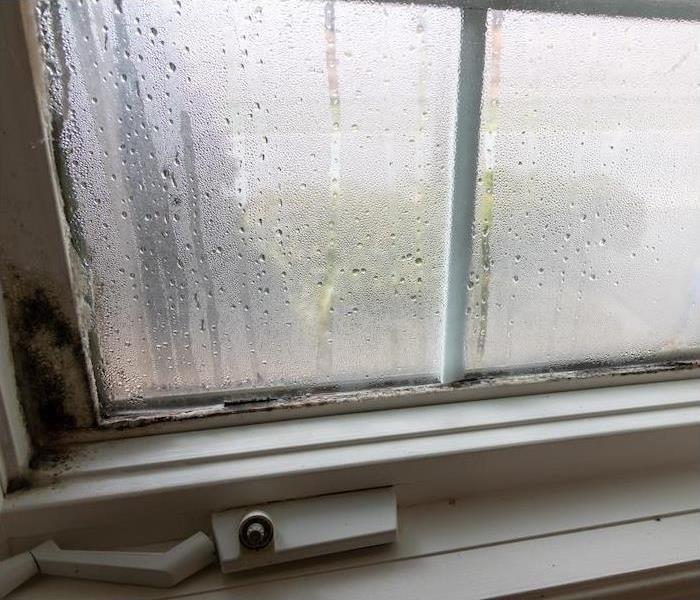 Whether it’s mold or natural disaster, SERVPRO of Troup-Coweta has the technicians to make quick work of your restoration project.
Whether it’s mold or natural disaster, SERVPRO of Troup-Coweta has the technicians to make quick work of your restoration project.
Summer vacation was great. You went to that magical place for the kids, or maybe you had an island getaway for the adults.
You did the ecologically responsible thing and turned off your automated air conditioning, raising the temperature in the home while it was unoccupied. That’ll save you some money on electricity, and it’s good for the planet.
There’s one problem, though: When you got back, you noticed something that wasn’t there when you left, black mold. In the bathrooms, in the basement, the walls and corners are covered in the yucky stuff, because the combination of humidity and higher average temperatures allowed it to grow quickly.
You’ve now got a problem, and you need help getting rid of the mold. Here’s why you can trust SERVPRO to take care of it.
Speed Matters. It takes 24 hours for mold to start growing, and how much more will it grow every additional day you wait? Every second counts, and nobody is better at a speedy response than SERVPRO. With an elite team on call 24 hours a day, we’ll be on site right away to get your dangerous mold problem alleviated.
Expertise Matters. When black mold is the issue, you can’t just swipe it and forget it. Your SERVPRO technicians are skilled and highly trained to remediate or remove the mold safely and completely, and get to the root cause of the excess moisture that allowed it to grow in the first place. Mold isn’t safe for you to work with, but we’ve got more than 50 years’ experience dealing with it.
Location Matters. SERVPRO is both a national entity and a small business, and we have a locally owned franchise right here in Troup County, which means you’re benefitting from the knowledge and flexibility that comes when you work with a local provider, and supporting your community at the same time.
When you entrust SERVPRO with your mold remediation, you can trust us to do it quickly, safely, and thoroughly. And with our promise to restore things "Like it never even happened," you know it’ll be done with utmost care and without ruining your home interior.
Whether it’s mold, water, fire or natural disaster, SERVPRO has the techs and the technicians to make quick work of your recovery or restoration project. Get in touch with us today to find out how we can help.
How Tornadoes Form From Thunderstorms
8/24/2021 (Permalink)
 If thunderstorms or tornadoes cause water damage to your home or business, contact SERVPRO right away to get our team of experts on your side.
If thunderstorms or tornadoes cause water damage to your home or business, contact SERVPRO right away to get our team of experts on your side.
Residents and business owners in our area are freshly familiar with the need for tornado safety and preparedness after recent tornado activity brought major damage to the Newnan area.
Being fully prepared means, in part, knowing the conditions that may arise that can cause future storms, and knowing what to look for so as to recognize the threat of impending danger. Today we’re going to take a look at the formation of tornadoes and how they are birthed from thunderstorm cells.
First off, thunderstorms become more likely in spring and summer, because warm air begins to rise and clash with moisture and cool air in the upper atmosphere—this is called convection, which leads to moisture condensation, rain and the electrical charge disparities that cause lightning.
For a tornado to form within a thunderstorm, a few conditions must be met, an important one being wind shear. Wind shear is the formative stage of the rotation that results in a tornado: Winds at different speeds and at different levels of altitude blowing into the same area create unstable air and circular wind patterns, resulting in a larger thunderstorm and potential cyclonic activity.
Wind shear combines with the rising warm air create rolling, spinning air currents that begin horizontally, but can become vertical if updrafts are strong enough to disrupt them. This causes a storm cell to begin rotating, morphing it into a supercell. And that’s when we have a problem.
In all this rotation, funnel clouds can form and extend from the supercell as moisture and low pressure are drawn in by rotating winds. If a funnel cloud extends all the way to the ground, that’s when it becomes a tornado by definition.
The United States experiences an average of about 1,000 tornadoes per year,, and our area is part of a growing edge of what is known as Tornado Alley, which means it’s possible that more and more of these dangerous storms may be in our future. It’s wise to always be prepared, and to pay careful attention to any meteorological warnings that are put in effect.
Knowing the cause of these storms helps us know when caution is necessary, and readiness is the first step to staying safe in a dangerous situation.
If thunderstorms or tornadoes cause water damage to your home or business, don’t hesitate to make the call. Contact SERVPRO right away to get our team of experts on your side.
Workplace Tornado Preparedness
7/26/2021 (Permalink)
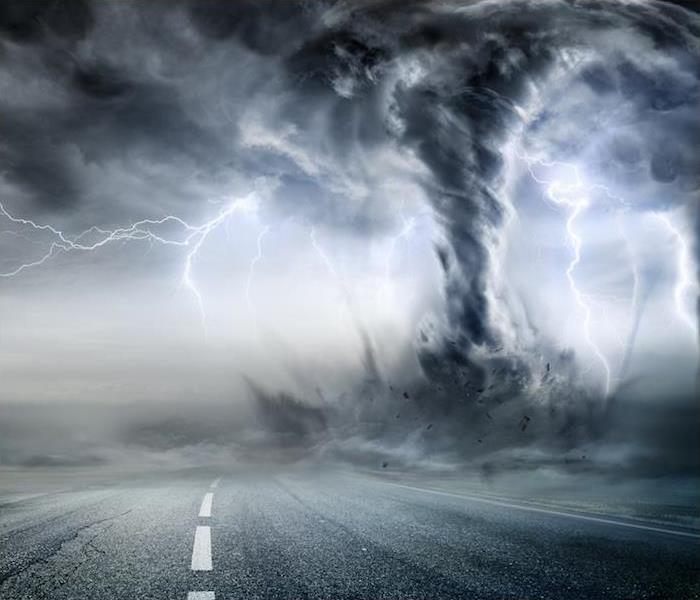 If you have any damage from a storm or hail, reach out to SERVPRO of Troup-Coweta Counties. We are your local restoration team.
If you have any damage from a storm or hail, reach out to SERVPRO of Troup-Coweta Counties. We are your local restoration team.
It’s one of the most fearsome and least predictable natural disasters, and anyone who has lived through one can tell you why. The tornado has a unique gift for wrecking communities, carving a path of rampant, unfeeling destruction through city buildings and country fields alike.
In March 2021, Coweta County residents experienced just this, in a terribly unfortunate recent example of just how destructive and powerful a tornado can be. The tornado was an EF-4 on the Enhanced Fujita scale, the second-highest classification we have for these deadly storms.
The mile-wide storm ran through Newnan with winds of up to 170 miles per hour damaging homes, businesses, even the local high school. Seventy homes were totally destroyed, and another 1,700 were damaged.
As a local business owner, this is a scenario you never want to have to consider. But as the March 2021 tornado reminded us, you must be prepared for storm scenarios that could impact your business, your livelihood, and the lives of your employees.
Be Prepared
One of the most important things you can do as a business owner is develop a disaster preparedness plan. This includes a focus on awareness, evacuation routes, important data backups and emergency kits. This kind of plan is required by OSHA, and indeed not having one established could leave you open to lawsuits on top of the heartache of damage done to your business and potential injury to your employees.
Set a Safe Place
You and your teams need to know where to go in the event of a tornadic event. The safest place, of course, is an underground shelter or safe room. But if that’s not available (and for many businesses, it isn’t), a small, windowless room on the lowest floor available will make do. If your building isn’t sturdy, instruct employees to meet at the nearest building that will meet these requirements.
Inform and Reinforce
Make sure your teams know how they can keep up with weather alerts, and that they know the differences between watches and warnings. Provide training on the signs of tornadoes, possible weather situations that could cause them and seasonal awareness. Schedule and practice tornado drills regularly to reinforce the information and give them a chance to put your plan into action in a moment without real-life stress.
We sincerely hope you never have to deal with a tornado as a business owner, but should it occur, we are available 24⁄7 to help. Click or call SERVPRO today to find out how we can help.
Increased Wildfire Risk in Tornado-Affected Areas
7/26/2021 (Permalink)
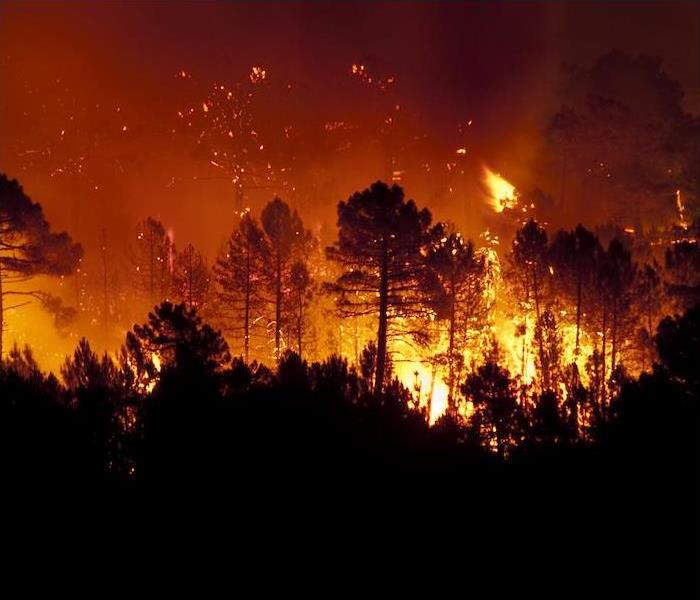 If your home has been damaged by storms or fires, SERVPRO of Troup-Coweta Counties is here to help restore your property to its original state.
If your home has been damaged by storms or fires, SERVPRO of Troup-Coweta Counties is here to help restore your property to its original state.
If you’re local to the area, you’re likely well aware of the events of March 26, and that date will probably hold significance to you for quite some time, if not forever.
That week, a group of at least seven destructive tornadoes ripped through the American South, and on that particular date the most destructive and violent of the storms, an F-4 on the Fujita scale, tore a path through the Newnan area.
Lives were lost, and homes and properties all over were destroyed or damaged to incredible degrees.
The area will be in several phases of recovery for months, and in some cases years—houses, schools and businesses will be rebuilt and restored from damage, much of which we at SERVPRO will be assisting with.
In times of disaster recovery, our focus is typically restoring our “normal” processes and places, aka the things we do and places we go most. This is only natural, and it makes good sense.
But one thing that doesn’t often receive focus after a tornado event is the increased risk of wildfires in areas that have been damaged by tornadoes.
While scientists are still researching and learning new things about fires in tornado areas, including the synergistic behavior of fire and wind, one thing is clear: Areas in which trees have broken, been pulled up and been otherwise damaged in tornadoes are more susceptible to wildfires, and there is more fuel available for wildfires because of broken bits of debris from homes and buildings in places they wouldn’t normally be.
These bits of debris, as well as fine, flammable fuels like small branches, tend to gather together and create bundles ready to burn hotter and consume even more fuel.
With this in mind, it’s even more important to think about fire safety if you live in an area that’s been affected by tornadoes. Whether it’s cooking outdoors, camping, gathering around a fire pit or even disposing of smoking materials, it’s imperative to treat fire with the respect it requires and use utmost caution anytime flammable materials are involved. With an increased risk of wildfire in our area, we must exercise an increased concern for fire safety.
If your home has been damaged by storms or fires of any cause, SERVPRO of Troup-Coweta Counties is here to help restore your property to its original state or better. Click or call today so we can get started.
Should Your Employees Be Certified in First Aid and CPR?
7/26/2021 (Permalink)
No one wants to imagine a medical emergency in the workplace, but unfortunately they do happen. Being prepared means more than having an office first-aid kit on hand — it means having designated employees who are trained to respond to a variety of emergency situations.
Training employees on what to do in an emergency can mean all the difference if the worst happens. Even short of such crises, emergency-response training comes with other advantages, from increased employee engagement to compliance with Occupational Health and Safety Administration (OSHA) requirements.
Providing first-aid training and the opportunity to become certified in CPR are ways of engaging your employees and showing that you take their health and well-being seriously.
While that display of dedication may be able to improve employee satisfaction with your organization, it can also help build camaraderie and morale.
It’s also a skill your employees can take with them, whether home to their families or into their communities.
What Are Fire Tornadoes?
7/25/2021 (Permalink)
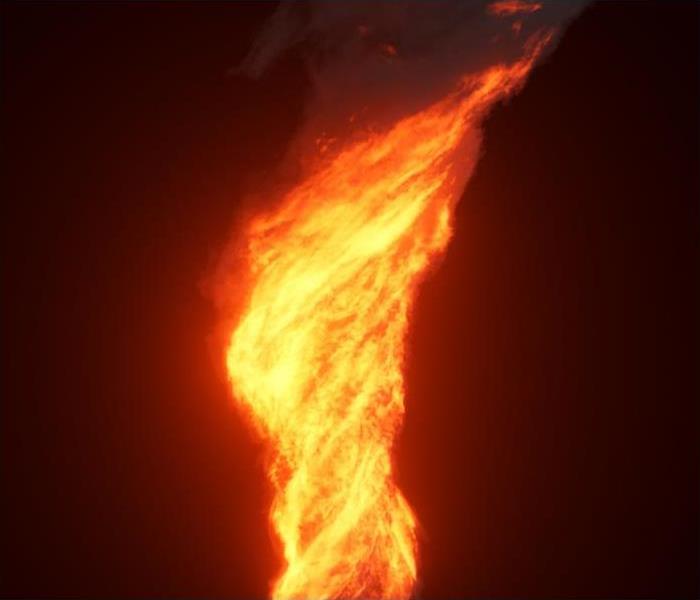 If your home or business has sustained fire damage from a fire, SERVPRO of Troup-Coweta Counties is here to restore the damage.
If your home or business has sustained fire damage from a fire, SERVPRO of Troup-Coweta Counties is here to restore the damage.
Remember when you were a kid and you would argue with your friends about who would win in a fight between Superman and Batman? Somebody would pick each side and pretend to be their favorite hero—“I’ve got Kryptonite, dude; no way you’re beating me.”
And eventually some genius would get the brilliant idea to combine the two comic book legends into one unbeatable, unstoppable force—and SuperBatman was born.
Our minds are fascinated by the thought of combining some of the most powerful things we can think of, to imagine new limits of what might be possible. It’s probably for this reason that the term “fire tornado” has such mystique. Each of those scenarios separately are enough to make one shudder, but combine them and the concept becomes truly magnificent.
A fire tornado, also called a pyrogenetic tornado, is defined by the U.S. Forest Service as a “spinning vortex column of ascending hot air and gases rising from a fire and carrying aloft smoke, debris, and flame,” which means essentially what it sounds like it means—it’s a SuperBatman-level event, equal parts epic and rare.
The difference between a fire tornado and a regular tornado is that while tornadoes form from the sky downward to the earth, fire tornadoes form on the ground and climb skyward.
In fact, it may be more accurate to think of the event as a tornadic fire—it’s the heat of the fire that causes the tornado, as hot air flows upward, air rushes in from the sides to fill the space and wind shear from different directions creates the rotation.
We are still learning about fire tornadoes, and learning to distinguish different types of events that might also be called fire whirls or firestorms. But the research we have shows they’re incredibly powerful. A fire tornado recorded in 2018 spun with the force of an EF-3 tornado, and its vortex reached an astonishing height of 17,000 feet.
They don’t always have to be massive, though. The conditions necessary for a fire tornado have been reproduced in small laboratory fires, and it’s possible you could even see one in your backyard bonfire. (No need to worry about that one reaching to the heavens.)
Fire is incredibly powerful, powerful enough to create its own localized weather system complete with cyclones and ice clouds (yeah, we didn’t even get into that part). Fire tornadoes, fascinating though they may be, are one more reminder to us that we must always respect the danger of fire in any shape or size.
If your home or business has sustained fire damage from a blaze of any nature, SERVPRO is here to restore the damage and remove soot and smoky smells. Get in touch today to get the pros on your side.
What Is the Difference Between a Thunderstorm and a Severe Thunderstorm?
7/20/2021 (Permalink)
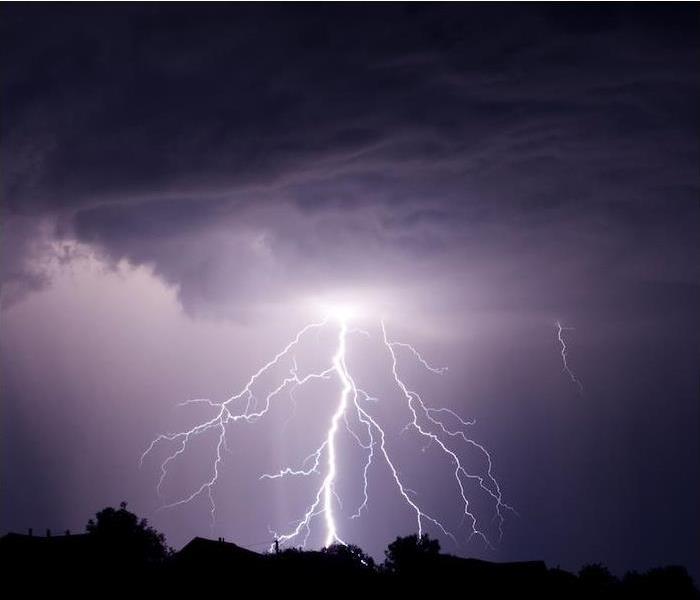 If your home or business has been impacted by a recent storm, SERVPRO of Troup-Coweta Counties is here to help you get back on your feet.
If your home or business has been impacted by a recent storm, SERVPRO of Troup-Coweta Counties is here to help you get back on your feet.
We’ve all gotten the alerts on our phones before: “The National Weather Service has issued a Thunderstorm Warning.” And then a few hours later, a modified message: “The National Weather Service has issued a Severe Thunderstorm Warning.”
What changed that made this storm be upgraded to severe? What is the difference between these two categories and how serious does it mean this storm is?
The 2 Major Differences Between a Thunderstorm and a Severe Thunderstorm
Hail Damage. A thunderstorm brings rain, thunder and lightning. But one element of a storm that is required for it to be classified as severe is hail that is at least one inch in diameter.
Hail can become as large as a grapefruit and can fall at incredibly speed, so the opportunity for it to cause damage is very high. To prepare for a storm that is going to have hail, ensure all people and pets have sturdy shelter, move your vehicle to a covered area, and repair or replace any loose shingles on your roof.
High Winds. Thunderstorms can generate strong winds that can cause damage to your property, especially if there are loose outdoor items that haven’t been secured such as lawn furniture, patio umbrellas and children’s toys. However, for the storm to be considered a severe thunderstorm, there must be a sustained straight-line wind measurement of 58 miles per hour or more.
Some storms can bring wind gusts of more than 100 miles per hour, which can cause serious damage to permanent structures. These types of winds can topple trees, flip mobile homes, rip off a roof of a home and more. The most important thing to do in a storm of this magnitude is to find shelter as soon as possible.
While some storms pass through with little to no damage, others don’t and can leave behind them a dangerous and overwhelming amount of debris. If your home or business has been impacted by a recent storm, we are here to help you get back on your feet. Call us today to see how we can help.
Lightning Safety for Outdoor Workers
7/20/2021 (Permalink)
 SERVPRO of Troup-Coweta Counties is here to help with any damage done by thunderstorms, whether it be from water, fire or lightning.
SERVPRO of Troup-Coweta Counties is here to help with any damage done by thunderstorms, whether it be from water, fire or lightning.
Lightning as an occupational hazard is often an afterthought, but it shouldn’t be. An average of 47 of all occupations require outdoor work at some point in the day.
That means almost half the American workforce is outside for some period of time every day, and many fields require a much higher percentage of outdoor time. When thunderstorms arise, those workers are at elevated risk of lightning strikes and other dangers.
Safety Best Practices for Outdoor Work
OSHA and NOAA recommend several broad safety practices for business who have workers outdoors. These include:
Being informed by NOAA weather reports. Employers and supervisors should be aware of reported and upcoming weather events before sending workers outside. Weather.gov and local outlets will make weather updates as inclement weather comes toward the area. Employers should consider rescheduling events, jobs or activities outdoors if thunderstorms are headed in. Darkening clouds and increased wind speeds can also be indicators of dangers weather afoot.
Seeking shelter in buildings. Workers should be informed before heading to outdoor jobs what nearby buildings they should seek out for shelter if they hear thunder or see lightning. These buildings should be fully enclosed and outfitted with plumbing and electricity. Once inside, workers should remain indoors at least a half hour after the last peal of thunder before returning to work. Remember, the fact that you’re not getting rained on doesn’t mean you’re not in danger—lightning can strike up to 10 miles away from the nearest rainfall.
Using vehicles as a second option. If safe buildings aren’t accessible, workers should be guided to hard-top vehicles with all windows rolled up, where they should remain for the duration of the storm and 30 minutes after thunder stops.
Practicing phone safety. Corded phones are still used in many buildings, but they shouldn’t be used in a building during a thunderstorm except in emergency situations. Cell phones are safe to use.
Business owners and supervisors should also have an emergency action plan for storms in place, with written protocols for lightning safety outlining company storm procedures. Lightning and storm safety training should also be implemented, so that workers know where to go in emergencies and what to expect regarding communication when storms approach.
We’re here to help with any damage done by thunderstorms, whether it be from water, fire or lightning. Call or click today to experience the SERVPRO difference.
How Georgia Can Prepare for Thunderstorms This Summer
6/30/2021 (Permalink)
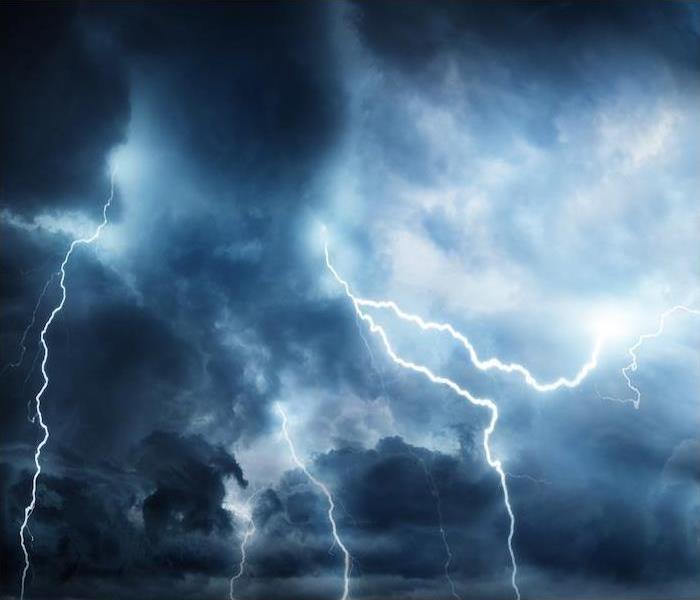 If you have been impacted by a recent storm, contact SERVPRO of Troup-Coweta Counties.
If you have been impacted by a recent storm, contact SERVPRO of Troup-Coweta Counties.
Between the alerts that pop up on your phone and the forecast updates on the news, this is the time of year when we typically start to see more storm activity. Some pass through without causing much reason to be concerned, and others can leave behind a trail of destruction from high winds, hail, flooding and even tornadoes.
The most common threats for Georgia when it comes to severe thunderstorms are damaging straight-line winds and large hail. So preparing for these storms starts with preparing well for the most likely hazards.
2 Weather Elements to Consider When Organizing Your Severe Weather PlanStrong winds. When you receive a notice that you’re under a severe thunderstorm watch, this means that strong winds, hail, lightning and flash flooding are possible in your area within the next six hours. When the watch turns into a warning, this means that the imminence of the threat has increased and you need to find a safe shelter immediately. This also means that you need to secure any loose items that could be sent flying into a permanent structure or vehicle or taken away with the wind.
Hail. Because of how fast hail can fall (up to 72 miles per hour), the damage that it can do is unprecedented. It can cause large branches to break, put holes in roofs, create major dents in a car—some hail can even bust a windshield—and cause significant harm to pets, people or livestock exposed to the conditions. Especially for those who live in areas prone to hail, the who, how, where and what should happen prior to, during and after a hail storm should be included in an emergency preparedness plan that everyone who lives in the household should have access to.
Although preparation is important, damage can still happen and it can happen on a large scale. If you have been impacted by a recent storm, call us 24⁄7 to discuss how we can help. Our team will arrive quickly and will assess the property to determine the plan of action that can get your home or business back to pre-storm condition.




 24/7 Emergency Service
24/7 Emergency Service












































































